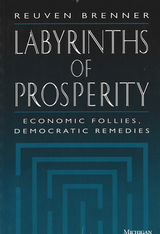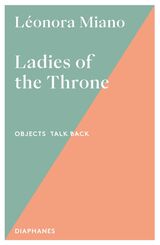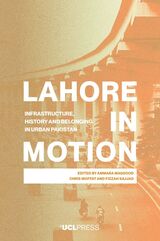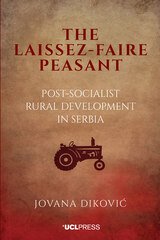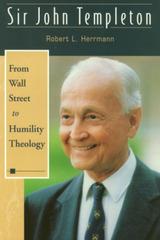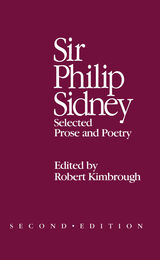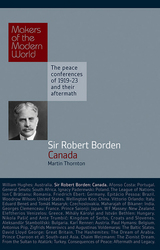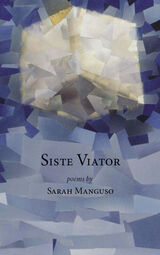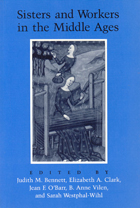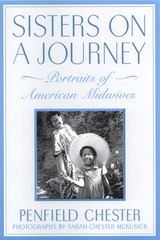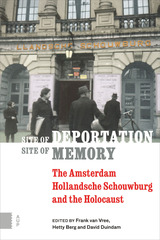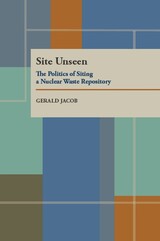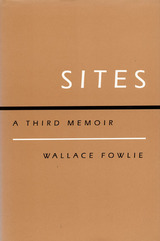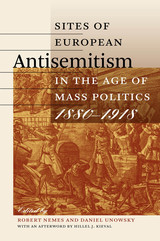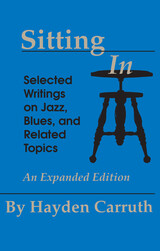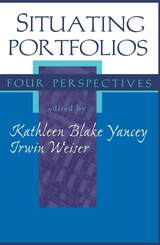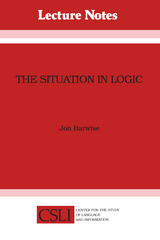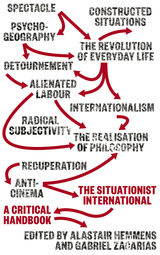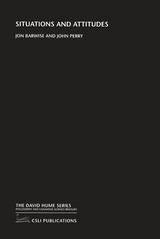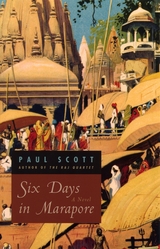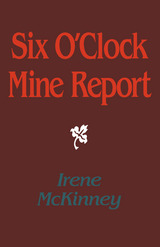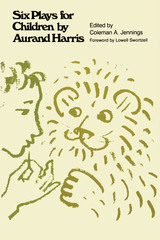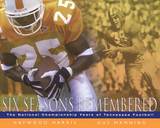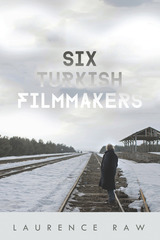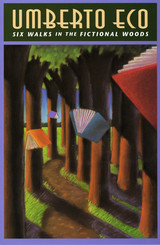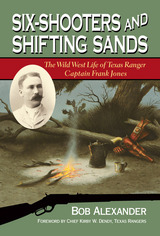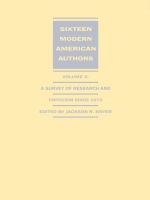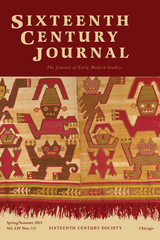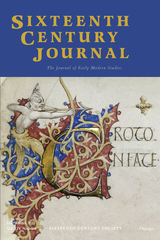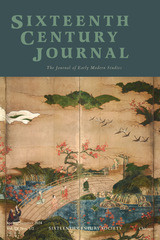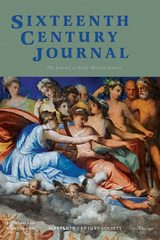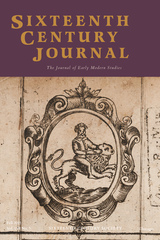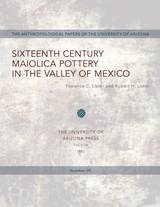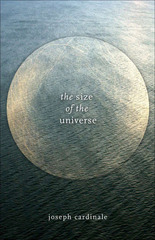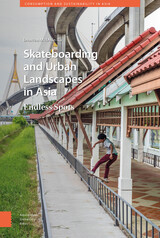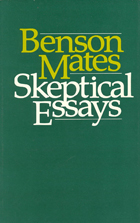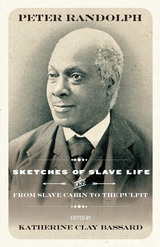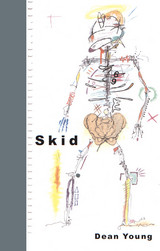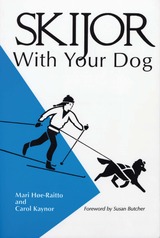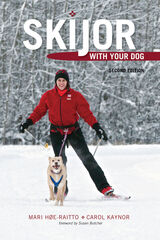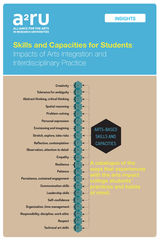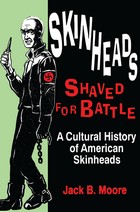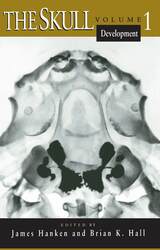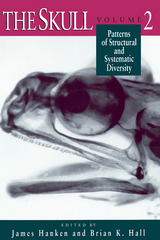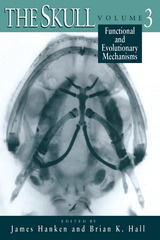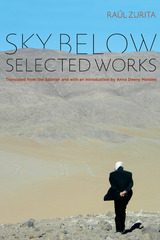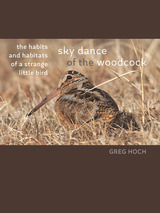 Sir Humphry Davy's Published Works
June Z. Fullmer
Harvard University Press, 1969 Sir Humphry Davy (1778-1829) was a leading and controversial member of the international scientific community. Davy's publications received all the publicity available to an early nineteenth-century scholar. For that reason the history of his publications is of interest not only for what it reveals of Davy but for what it tells about the fate of scientific news during this period.
For more than a century it was assumed that the nine-volume Collected Works of Sir Humphry Davy represented the definitive statement of his contributions. That collection does include the major works on which Davy's fame depends; however, many papers were omitted. This annotated bibliography lists Davy's published writings that appeared during his lifetime and posthumously.
Translations of Davy's papers and reports of his experimental findings printed prior to the official versions are included. Critical reviews in journals not exclusively devoted to scientific subjects have also been catalogued. These translations, reports, and reviews, which frequently forced Davy to further publication, round out the history of his publishing. Through a guide to the location of the first reports of Davy's papers, it is possible to trace the diffusion of scientific news and its reception on the Continent. Fullmer indicates the accuracy of the translations and shows how the changes made by continental editors often distorted Davy's views, and acerbated a scientific atmosphere already ripe with controversy.
Sir John Templeton: From Wall Street To Humility
Robert L. Hermann
Templeton Press, 1998
The biography of the "Wizard of Wall Street" who has dedicated his life to advancing the scientific study of spiritual realities has been revised and updated. Sir John Templeton was an inspiring and motivational force both through his personal example and through the foundation that bears his name and is dedicated to his mission.
This volume reviews the life of this man of vision, from his childhood in rural Tennessee, to his education at Yale and Oxford, to his legendary years on Wall Street, the birth of his children, and the development and growth of "humility theology science." Interwoven with the stories and facts are the roots of his faith and the values that he credits for his financial success and are the catalyst for his lifelong mission.
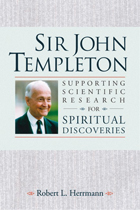 Sir John Templeton: Supporting Scientific Research For Spiritual Discoveries
Robert Herrmann
Templeton Press, 2004 The biography of the "Wizard of Wall Street" who has dedicated his life to advancing the scientific study of spiritual realities has been revised and updated. Sir John Templeton was an inspiring and motivational force both through his personal example and through the foundation that bears his name and is dedicated to his mission.
This volume reviews the life of this man of vision, from his childhood in rural Tennessee, to his education at Yale and Oxford, to his legendary years on Wall Street, the birth of his children, and the development and growth of "humility theology science." Interwoven with the stories and facts are the roots of his faith and the values that he credits for his financial success and are the catalyst for his lifelong mission.
Sir John's biography updates the growth of the many and varied programs of the John Templeton Foundation that support this mission. It also introduces some of the scientists, theologians, philosophers, writers, and fellow investors who now serve as staff and advisors to the John Templeton Foundation, striving toward Sir John's goal of one-hundred-fold more spiritual information gained through the application of scientific methodology and analysis.
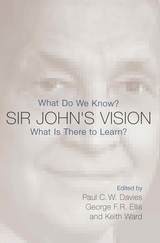 Sir John's Vision: What Do We Know? What Is There to Learn?
Davies
Templeton Press, 2018 In 2017, the year marking the 105th anniversary of the birth of Sir John Templeton, a group of scientists, scholars, and advisors who knew him personally gathered in Lyford Cay in the Bahamas. Their purpose: to discuss how the Foundation that bears his name could best extend his philanthropic vision into the twenty-first century.
This volume is a result of that meeting—a collection of thirteen essays written by experts in fields that most fascinated Sir John. The contributors assess the Foundation’s fidelity to its founder’s intent, chart promising avenues for future grantmaking, and champion Sir John’s contrarian mission of unlocking life’s deepest mysteries.
The members of the John Templeton Foundation are the custodians of Sir John’s vision—bold in its aspiration; humble in its approach—charged with using the tools of science to advance the frontiers of the spirit. May the essays collected here serve as inspiration as we carry that vision forward.
 Sir Joshua Reynolds: The Painter in Society
Richard Wendorf
Harvard University Press, 1996 That Sir Joshua Reynolds (1723–1792) became the most fashionable painter of his time was not simply due to his artistic gifts or good fortune. The art of pleasing, Richard Wendorf contends, was as much a part of Reynolds’s success—in his life and in his work—as the art of painting. The author’s examination of Reynolds’s life and career illuminates the nature of eighteenth-century English society in relation to the enterprise of portrait-painting. Conceived as an experiment in cultural criticism, written along the fault lines that separate (but also link) art history and literary studies, Sir Joshua Reynolds: The Painter in Society explores the ways in which portrait-painting is embedded in the social fabric of a given culture as well as in the social and professional transaction between the artist and his or her subject. In addition to providing a new view of Reynolds, Wendorf’s book develops a thoroughly new way of interpreting portraiture.
Wendorf takes us into Reynolds’s studio to show us the artist deploying his considerable social and theatrical skills in staging his sittings as carefully orchestrated performances. The painter’s difficult relationship with his sister Frances (also an artist and writer), his complicated maneuvering with patrons, the manner in which he set himself up as an artist and businessman, his highly politicized career as the first president of the Royal Academy of Arts: as each of these aspects of Reynolds’s practice comes under Wendorf’s scrutiny, a new picture of the painter emerges—more sharply defined and fully fleshed than the Reynolds of past portraits, and clearly delineating his capacity for provoking ambivalence among friends and colleagues, and among viewers and readers today.
 Sir Philip Sidney and the Poetics of Protestantism: A Study of Contexts
Andrew Weiner
University of Minnesota Press, 1978
Sir Philip Sidney and the Poetics of Protestantism was first published in 1978. Minnesota Archive Editions uses digital technology to make long-unavailable books once again accessible, and are published unaltered from the original University of Minnesota Press editions.In this study of the important Elizabethan writer and critic, Sir Philip Sidney, Professor Weiner examines the impact of the Reformation on traditional medieval and humanist ideas of the nature and function of poetry, taking Sidney as an exemplar of the transformation of both theory and practice that occurred. He offers a new reading of Sidney’s Old Arcadia, placing it in the context of Elizabethan theology and politics. In the process he also offers a new reading of Sidney’s Defence of Poesie, a major classic of English literary criticism. Professor Weiner shows how the latter work may be read as a virtual manifesto for a literary movement based on an emphatically Protestant outlook on questions of religious faith.
Sir Philip Sidney: Selected Prose and Poetry
Edited by Robert Kimbrough
University of Wisconsin Press, 1983 An anthology grounded in the historic and aesthetic context of a crucial figure in 16th-century English literature
Sir Robert Borden: Canada
Martin Thornton
Haus Publishing, 2010 Sir Robert Borden was Plenipotentiary of Canada at the Peace Conference. With the Versailles Treaty ratified by the Canadian Parliament, Borden largely believed his work was done. He retired as Prime Minister in 1920. Although Borden died in 1937, the great legacy for Canada that derived from Borden's attitudes towards the role of the Dominions in international affairs was the drive towards a constitutional recognition of Canada's international position. Canada's control of its own foreign policy was finally confirmed in a declaration by Arthur Balfour in 1926 and the Statute of Westminster in 1931 that created the British Commonwealth of Nations. Borden helped to produce a Canada with an autonomous and independent foreign policy, the seeds of this work led to the growth of a vigorous foreign policy for Canada within a United Nations and its specialised agencies.
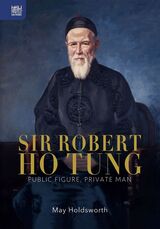 Sir Robert Ho Tung: Public Figure, Private Man
May Holdsworth
Hong Kong University Press, 2022 A nuanced perspective on Sir Robert Ho Tung, Hong Kong philanthropist.
Sir Robert Ho Tung (1862–1954) is a compelling figure in Hong Kong history. He is regularly portrayed as the colony’s greatest philanthropist and wealthiest man of his day, the first Chinese to live on the Peak, and, at the end of his life, the “Grand Old Man of Hong Kong.” The illegitimate son of a Chinese mother and European father, he was highly sensitive about his mixed heritage, although his success was driven as much by his entrepreneurial talents as by his being Eurasian. This book shows him in all his immense variety—financial wizard, husband and lover, patriarch of a large family, loyal British subject but also, paradoxically, Chinese patriot. China’s president Yuan Shikai awarded him the Order of the Excellent Crop, and King George V knighted him. May Holdsworth’s thoughtful and deftly written account of his life is the first full-length biography in English. Given unique and unprecedented access to family and personal papers, including letters, diaries, notes, and photographs, she offers a nuanced perspective on a public but also a private man. Her book will be a rich resource for historians and readers interested in the men and women who played a key part in the shaping of nineteenth- and early twentieth-century Hong Kong.
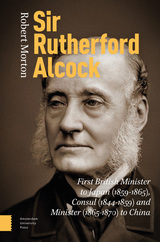 Sir Rutherford Alcock: First British Minister to Japan (1859-1865), Consul (1844-1859) and Minister (1865-1870) to China
Robert Morton
Amsterdam University Press, 2024 The son of a village doctor, Rutherford Alcock trained in medicine and became a battlefield surgeon, working in Portugal and Spain during the civil wars there in the 1830s. In a major career shift, he entered the consular service, went to China, and ended up as British Minister (the equivalent of today’s ambassador) to Japan and then China. This progression was unique, indeed bizarre, especially as every senior position he got was one he specifically said he did not want. Nonetheless, he was the man who commenced Britain’s relations with Japan and introduced Japan’s arts and crafts to the UK, in addition to playing a central role in Britain’s relationship with China. He was no rampant imperialist and expressed ambivalence about Britain’s position in East Asia as he contended with intractable issues like the opium trade and how to punish attacks on British interests without starting a war. This book fills a major gap in the study of Japan’s opening to the West from a British perspective, as well as Britain’s relationship with East Asia as a whole, through the eyes of a brilliant, but complicated and contradictory figure.
 Sir Thomas Browne: A Study in Religious Philosophy
William P. Dunn
University of Minnesota Press, 1950 Sir Thomas Browne was first published in 1950. Minnesota Archive Editions uses digital technology to make long-unavailable books once again accessible, and are published unaltered from the original University of Minnesota Press editions. This original and perceptive study of the writings of the great seventeenth-century author of Religio Medici offers the general reader a view of the intellectual world of Browne's time, and for the special student of the period provides a more extended exploration of Browne's religious philosophy than has previously been available. Mr. Dunn recognizes that Browne is primarily an artist and that his books must not be forced into the framework of any mere logical system. But although Browne is only secondarily a philosopher, the acknowledged greatness of his writing is due in part to the brilliance and power of his thought. Accordingly, his philosophy is here examined seriously and shown in its relations to the main intellectual currents of his time. Mr. Dunn, because he combines an appreciation of Browne's poetic and imaginative power with an informed insight into its philosophical basis, can be recommended as the ideal critic of this compelling literary figure. Browne's books emerge form this study as more than the charming haunt of the antiquarian and esthete. At one of the most dramatic moments of European cultural history—the point of transition between the decaying tradition of the Middle Ages and the opening phase of modern science — they nobly express a great humanist's convictions about the meaning of the universe and of human life. The present volume is a complete revision of a work published in 1926 and long out of print.
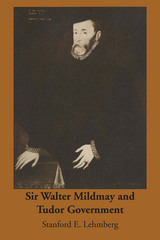 Sir Walter Mildmay and Tudor Government
By Stanford E. Lehmberg
University of Texas Press, 1964 This is the first biography of Sir Walter Mildmay, who dutifully served Queen Elizabeth I for thirty years as Chancellor of the Exchequer. Sir Walter Mildmay and Tudor Government, by Stanford E. Lehmberg, brings Mildmay into proper historical perspective alongside other prominent Tudor leaders. Virtually none of Mildmay’s writings had been printed, and his activities had not been studied, partly because of the inaccessibility of necessary materials. In the mid-twentieth century, however, the Northamptonshire Record Office was able to acquire family papers, of which Lehmberg happily took advantage. These, together with materials in the British Museum and the Public Record Office, yield a detailed account of Mildmay’s contributions to English financial administration. But Mildmay was not merely an Exchequer official. As a Member of Parliament he gained towering stature; his model orations and indefatigable work in committees provided invaluable leadership from 1576 to 1589. As a Privy Councillor he was twice sent on important embassies to Mary, Queen of Scots; he gave carefully considered advice about Scottish and Dutch affairs; and he was called on to examine numerous minor matters. As a trusted administrator he helped oversee the great recoinage of 1560. As a private citizen deeply concerned for good learning and true religion he founded Emmanuel College, Cambridge, and engaged in other philanthropic enterprises. By the time of his death in 1589 he had led a full and dedicated life serving his country and his Queen. Into Lehmberg’s scholarly, readable volume have been blended aspects of Mildmay’s public life and his associations with historically famous contemporaries, discriminately selected segments of his speeches, elements of his personal philosophy, and the achievements and failures of his political life. Enhancing the value of this study are carefully annotated footnotes and a complementary bibliography. Tudor specialists as well as lay readers will undoubtedly profit from this significant biography.
Sir Walter Scott: An Index Placing the Short Poems in His Novels and in His Long Poems and Dramas
Allston Burr
Harvard University Press Mr. Burr’s index will be most useful to that large number of Scott enthusiasts who have often wished for a quick guide to the numerous short poems imbedded in the novels and in the longer poems and dramas. The references are to the Cadell (1829-1833) edition of Scott’s Collected Works. The book is divided into five parts: titles of short poems, with first lines; short poems used as chapter headings or otherwise in the novels; short poems in the dramas; short poems in the long poems; and an index of all the short poems arranged alphabetically by first lines.
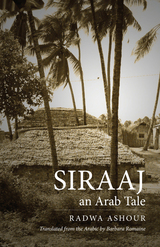 Siraaj: An Arab Tale
By Radwa Ashour
University of Texas Press, 2007 Set in the late nineteenth century on a mythical island off the coast of Yemen, Radwa Ashour's Siraaj: An Arab Tale tells the poignant story of a mother and son as they are drawn inextricably into a revolt against their island's despotic sultan. Amina, a baker in the sultan's palace, anxiously awaits her son's return from a long voyage at sea, fearful that the sea has claimed Saïd just as it did his father and grandfather. Saïd, left behind in Alexandria by his ship as the British navy begins an attack on the city, slowly begins to make his way home, witnessing British colonial oppression along the way. Saïd's return brings Amina only a short-lived peace. The lessons he learned from the Egyptians' struggle against the British have radicalized him. When Saïd learns the island's slave population is planning a revolt against the sultan's tyrannical rule, both he and Amina are soon drawn in. Beautifully rendered from Arabic into English by Barbara Romaine, Radwa Ashour's novella speaks of the unity that develops among varied peoples as they struggle against a common oppressor and illuminates the rich cultures of both the Arab and African inhabitants of the island. Sub-Saharan African culture is a subject addressed by few Arabic novelists, and Radwa Ashour's novella does much to fill that void.
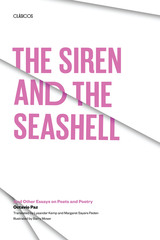 The Siren and the Seashell: And Other Essays on Poets and Poetry
By Octavio Paz
University of Texas Press, 1976 Octavio Paz has long been known for his brilliant essays as well as for his poetry. Through the essays, he has sought to confront the tensions inherent in the conflict between art and society and to achieve a unity of their polarities. The Siren and the Seashell is a collection of Paz’s essays, focusing on individual poets and on poetry in general. The first five poets he treats are Latin American: Sor Juana Inés de la Cruz, Rubén Darío, José Juan Tablada, Ramón López Velarde, and Alfonso Reyes. Then there are essays on Robert Frost, e. e. cummings, Saint-John Perse, Antonio Machado, and Jorge Guillén. Finally, there are Paz’s reflections on the poetry of solitude and communion and the literature of Latin America. Each essay is more than Paz’s impressions of one person or issue; each is the occasion for a wider discussion of cultural, historical, psychological, and philosophical themes. The essays were selected from Paz’s writing between 1942 and 1965 and provide an overview of the development of his thinking and an exploration of the ideas central in his works.
 Siren City: Sound and Source Music in Classic American Noir
Miklitsch, Robert
Rutgers University Press, 2011 Hailed for its dramatic expressionist visuals, film noir is one of the most prominent genres in Hollywood cinema. Yet, despite the "boom" in sound studies, the role of sonic effects and source music in classic American noir has not received the attention it deserves. Siren City engagingly illustrates how sound tracks in 1940s film noir are often just as compelling as the genre's vaunted graphics.
Focusing on a wide range of celebrated and less well known films and offering an introductory discussion of film sound, Robert Miklitsch mobilizes the notion of audiovisuality to investigate period sound technologies such as the radio and jukebox, phonograph and Dictaphone, popular American music such as "hot" black jazz, and "big numbers" featuring iconic performers such as Lauren Bacall, Veronica Lake, and Rita Hayworth. Siren City resonates with the sounds and source music of classic American noir-gunshots and sirens, swing riffs and canaries. Along with the proverbial private eye and femme fatale, these audiovisuals are central to the noir aesthetic and one important reason the genre reverberates with audiences around the world.
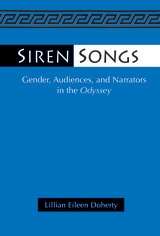 Siren Songs: Gender, Audiences, and Narrators in the Odyssey
Lillian Eileen Doherty
University of Michigan Press, 1995 In Siren Songs: Gender, Audiences, and Narrators in the Odyssey, Lillian Eileen Doherty shows us that the attitude of Odysseus, as well as of the Odyssey, is highly ambivalent toward women. Odysseus rewards supportive female characters by treating them as privileged members of the audience for his own tales. At the same time, dangerous female narrators--who threaten to disrupt or revise the hero's story--are discredited by the narrative framework in which their stories appear.
Siren Songs synthesizes audience-oriented and narratological approaches, and examines the relationships among three kinds of audiences: internal, implied, and actual. The author prefaces her own reading of the Odyssey with an analysis of the issues posed by the earlier feminist readings on which she builds. Should the Odyssey be read as a "closed" text, that is, as one whose meaning is highly determined, or as an "open" text whose contradictions and ambiguities undercut its overt meanings?
Siren Songs presents a feminist critique of the Odyssey in an accessible manner aimed at a more general audience. All Greek is translated, and critical terminology is clearly defined.
Lillian Eileen Doherty is Associate Professor of Classics, University of Maryland, College Park.
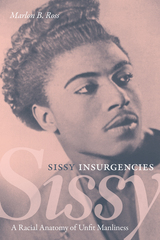 Sissy Insurgencies: A Racial Anatomy of Unfit Manliness
Marlon B. Ross
Duke University Press, 2022 In Sissy Insurgencies Marlon B. Ross focuses on the figure of the sissy in order to rethink how Americans have imagined, articulated, and negotiated manhood and boyhood from the 1880s to the present. Rather than collapsing sissiness into homosexuality, Ross shows how sissiness constitutes a historically fluid range of gender practices that are expressed as a physical manifestation, discursive epithet, social identity, and political phenomenon. He reconsiders several black leaders, intellectuals, musicians, and athletes within the context of sissiness, from Booker T. Washington, George Washington Carver, and James Baldwin to Little Richard, Amiri Baraka, and Wilt Chamberlain. Whether examining Washington’s practice of cleaning as an iteration of sissiness, Baldwin’s self-fashioned sissy deportment, or sissiphobia in professional sports and black nationalism, Ross demonstrates that sissiness can be embraced and exploited to conform to American gender norms or disrupt racialized patriarchy. In this way, sissiness constitutes a central element in modern understandings of race and gender.
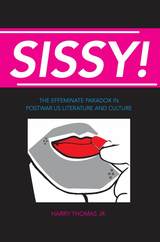 Sissy!: The Effeminate Paradox in Postwar US Literature and Culture
Harry Thomas Jr.
University of Alabama Press, 2017 Winner of the Elizabeth Agee Prize in American Literature
Sissy!: The Effeminate Paradox in Postwar US Literature and Culture is a fascinating work of cultural criticism that focuses on the ways men and boys deemed to be feminine have been—and continue to be—condemned for their personalities and behavior. Critic Harry Thomas Jr. does not dismiss this approach, but rather identifies it as merely one side of a coin. On the other side, he asserts, the opposite exists: an American artistic tradition that celebrates and affirms effeminate masculinity.
The author argues that effeminate men and boys are generally portrayed using the grotesque, an artistic mode concerned with the depictions of hybrid bodies. Thomas argues that the often grotesque imagery used to depict effeminate men evokes a complicated array of emotions, a mix of revulsion and fascination that cannot be completely separated from one another.
Thomas looks to the sissies in the 1940s novels of Truman Capote and Carson McCullers; the truth-telling flaming princesses of James Baldwin’s Giovanni’s Room; the superstardom of pop culture icon Liberace; the prophetic queens of Tony Kushner’s Angels in America; and many others to demonstrate how effeminate men have often been adored because they are seen as the promise of a different world, one free from the bounds of heteronormativity.
Sissy! offers an unprecedented and counterintuitive overview of cultural and artistic attitudes toward male effeminacy in post–World War II America and provides a unique and contemporary reinterpretation of the “sissy” figure in modern art and literature.
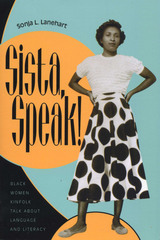 Sista, Speak!: Black Women Kinfolk Talk about Language and Literacy
By Sonja L. Lanehart
University of Texas Press, 2002 2003 — Honorable Mention, Myers Outstanding Book Award – The Gustavus Myers Center for the Study of Bigotry and Human Rights in North America The demand of white, affluent society that all Americans should speak, read, and write "proper" English causes many people who are not white and/or middle class to attempt to "talk in a way that feel peculiar to [their] mind," as a character in Alice Walker's The Color Purple puts it. In this book, Sonja Lanehart explores how this valorization of "proper" English has affected the language, literacy, educational achievements, and self-image of five African American women—her grandmother, mother, aunt, sister, and herself. Through interviews and written statements by each woman, Lanehart draws out the life stories of these women and their attitudes toward and use of language. Making comparisons and contrasts among them, she shows how, even within a single family, differences in age, educational opportunities, and social circumstances can lead to widely different abilities and comfort in using language to navigate daily life. Her research also adds a new dimension to our understanding of African American English, which has been little studied in relation to women.
Siste Viator
Sarah Manguso
Four Way Books, 2006 “This book is for those of us who want to read more poetry but are frequently stopped by its--what is it? Its chilly self-seriousness? Its unwillingness to hold our hand every so often, while cracking an easy joke? Either way, Sarah Manguso, like her spiritual siblings David Berman and Tony Hoagland, is a friendly kind of savior and guide. Her writing is gorgeous and cerebral (imagine Anne Carson) but she doesn't skimp on the wit (imagine Anne Carson's ne'er-do-well niece). Poetry-fearers, don't back away from this beautiful book; these might be the pages that bring you back into the form.” --Dave Eggers
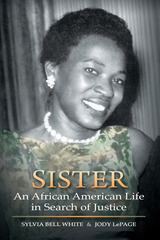 Sister: An African American Life in Search of Justice
Sylvia Bell White and Jody LePage
University of Wisconsin Press, 2013 Raised with twelve brothers in a part of the segregated South that provided no school for African American children through the 1940s, Sylvia Bell White went North as a teenager, dreaming of a nursing career and a freedom defined in part by wartime rhetoric about American ideals. In Milwaukee she and her brothers persevered through racial rebuffs and discrimination to find work. Barred by both her gender and color from employment in the city’s factories, Sylvia scrubbed floors, worked as a nurse’s aide, and took adult education courses. When a Milwaukee police officer killed her younger brother Daniel Bell in 1958, the Bell family suspected a racial murder but could do nothing to prove it—until twenty years later, when one of the two officers involved in the incident unexpectedly came forward. Daniel’s siblings filed a civil rights lawsuit against the city and ultimately won that four-year legal battle. Sylvia was the driving force behind their quest for justice. Telling her whole life story in these pages, Sylvia emerges as a buoyant spirit, a sparkling narrator, and, above all, a powerful witness to racial injustice. Jody LePage’s chapter introductions frame the narrative in a historical span that reaches from Sylvia’s own enslaved grandparents to the nation’s first African American president. Giving depth to that wide sweep, this oral history brings us into the presence of an extraordinary individual. Rarely does such a voice receive a hearing.
Winner, Wisconsin Historical Society Book Award of Merit
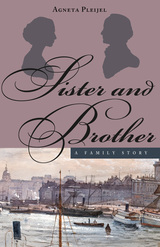 Sister and Brother: A Family Story
Agneta Pleijel
Gallaudet University Press, 2018 In this historical narrative, Swedish novelist Agneta Pleijel follows the lives of two ancestors, a sister and brother, each of whom played a role in the cultural life of Stockholm in the 19th century. Using old letters, records, and stories passed down through her family, Pleijel imagines the lives of her great-grandfather, Albert Berg (1832–1916), and his younger sister, Helena Berg Petre (1834–1880), who were born into a prominent musical family. Albert was born deaf, dashing his father’s hopes of a musical career for him. He was sent to Stockholm’s Manilla School for the Deaf, where he learned sign language. He later studied art and became a painter of seascapes. His interest in improving the lives of deaf people led him to become an advocate for the Deaf community and to cofound the Stockholm Deaf Association.
Helena showed early musical talent and, trained by her father, was a gifted singer. She lived in Paris for a time and enjoyed popular success. She fell in love with a musician but was plunged into despair when he died from cholera. Her father persuaded her to give up singing and marry a cold industrialist, who was one of the wealthiest men in Sweden, in order to provide financial support for the family. Helena struggled in the loveless marriage and battled depression throughout her life.
Despite their disparate lives, Albert and Helena faced similar struggles with communication, autonomy, and self-determination. Albert’s story traces the development of his own sense of identity as well as the development of Swedish Deaf culture, while Helena’s life reflects the silencing and oppression endured by women. In Sister and Brother, Pleijel’s literary treatment of their lives sheds light on the cultural and social norms that shaped the experiences of deaf people and women in the 19th century.
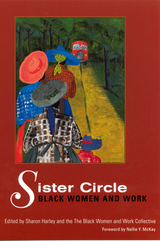 Sister Circle: Black Women and Work
Harley, Sharon
Rutgers University Press, 2002 Although black women’s labor was essential to the development of the United States, studies of these workers have lagged far behind those of working black men and white women. Adding insult to injury, a stream of images in film, television, magazines, and music continues to portray the work of black women in a negative light. Sister Circle offers an innovative approach to representing work in the lives of black women. Contributors from many fields explore an array of lives and activities, allowing us to see for the first time the importance of black women’s labor in the aftermath of slavery. A brand new light is shed on black women’s roles in the tourism industry, as nineteenth-century social activists, as labor leaders, as working single mothers, as visual artists, as authors and media figures, as church workers, and in many other fields. A unique feature of the book is that each contributor provides an autobiographical statement, connecting her own life history to the subject she surveys. The first group of essays, “Work It Sista!” identifies the sites of black women’s paid and unpaid work. In “Foremothers: The Shoulders on Which We Stand,” contributors look to the past for the different kinds of work that black women have performed over the last two centuries. Essays in “Women’s Work through the Artist’s Eyes” highlight black women’s work in literature, drama, and the visual arts. The collection concludes with “Detours on the Road to Work: Blessings in Disguise,” writings surveying connections between black women’s personal and professional lives.
 Sister City Diplomacy: Community Engagement in U.S.–Russian Relations from the Cold War to Today
Douglas C. Nord
University of Wisconsin Press, 2025 In 1987, Duluth, Minnesota, and Petrozavodsk, in what is now Russia, officially joined hands as sister cities. Douglas C. Nord tells the stories of their collaboration in the context of the late Cold War, covering in substantial detail the lived experiences of city officials, community leaders, academics, and average citizens who worked to bridge the divide between the United States and the Soviet Union. What circumstances supported or undermined efforts to conduct people-to-people diplomacy? What internal difficulties emerged, and how were they overcome? And what were the short-term effects and long-term consequences of the relationships forged in these postindustrial cities, across an ideological divide as deep and wide as the ocean that separated them?
Sister City Diplomacy offers a historical account of citizen diplomacy set in a unique political and social environment. But in its theoretical grounding and informed arguments, this study speaks to much broader and contemporary concerns, both in terms of United States–Russian relations today and with regard to the challenges and opportunities of community-based diplomacy in general. Lessons learned along the shores of Lakes Superior and Onega in the last days of the Cold War hold great value given the heightened tensions of current geopolitics.
 Sister Kenny: The Woman Who Challenged the Doctors
Victor Cohn
University of Minnesota Press, 1976 Sister Kenny was first published in 1976. Minnesota Archive Editions uses digital technology to make long-unavailable books once again accessible, and are published unaltered from the original University of Minnesota Press editions. Sister Elizabeth Kenny, the Australian-born nurse, is remembered by thousands of grateful parents and grandparents of young polio patients, as well as others who were less personally affected, as the woman who successfully fought the medical profession to win acceptance of her techniques to combat the crippling effects of this disease. In this biography Victor Cohn, a prize-winning science writer, details the life of Sister Kenny and her significant role in the history of medicine. It is an inspiring story and one which will be of particular interest to those of the present generation who are engaged in the movement for women's equality. Sister Kenny's struggle against the bitter opposition of many doctors to her concepts for the treatment of polio dramatized the then common attitude of male chauvinism on the part of the medical profession toward nurses. The biography traces Sister Kenny's life from her birth in Australia, through her early nursing career in the bush, to her rise to prominence in America. Much of the narrative focuses on her confrontation with the medical establishment. Throughout, the author writes from an objective viewpoint, and in conclusion he assesses Sister Kenny's accomplishments.
 Sister Republics: The Origins of French and American Republicanism
Patrice Higonnet
Harvard University Press, 1988 In a new work anticipating the bicentennial of the French Revolution, Patrice Higonnet demonstrates why the American and French Revolutions, although roughly contemporaneous and inspired by many of the same ideals, followed utterly different trajectories: the Americans proceeded to stabilize and build upon their revolution, while the French stumbled from bloodbath to republic to empire to monarchy again.
Eighteenth-century American society, individualistic to a degree, nevertheless managed to ground its politics in communitarian philosophy and to deny the existence of social cleavages, thus creating a pluralist ideology that successfully balanced the two strains. In contrast, argues Higonnet, individualistic politics in France collapsed in 1791 for lack of a foundation, and French society drifted toward terrorism as the rival claims of libertarian and communitarian principles struggled on the national scene. Higonnet works out these ideas in a learned and persuasive new perspective on the two major democratic revolutions of the eighteenth century.
This is a book for serious readers of history that can also refresh college courses in American history, French history, the history of revolutions, comparative studies, intellectual history, and the history of the eighteenth century in the Western world.
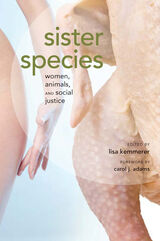 Sister Species: Women, Animals and Social Justice
Edited by Lisa A. Kemmerer
University of Illinois Press, 2011 Sister Species: Women, Animals, and Social Justice addresses interconnections between speciesism, sexism, racism, and homophobia, clarifying why social justice activists in the twenty-first century must challenge intersecting forms of oppression. This anthology presents bold and gripping--sometimes horrifying--personal narratives from fourteen activists who have personally explored links of oppression between humans and animals, including such exploitative enterprises as cockfighting, factory farming, vivisection, and the bushmeat trade. Sister Species asks readers to rethink how they view "others," how they affect animals with their daily choices, and how they might bring change for all who are abused. These essays remind readers that women have always been important to social justice and animal advocacy, and they urge each of us to recognize the links that continue to bind all oppressed individuals. The astonishing honesty of these contributors demonstrates with painful clarity why every woman should be an animal activist and why every animal activist should be a feminist. Contributors are Carol J. Adams, Tara Sophia Bahna-James, Karen Davis, Elizabeth Jane Farians, Hope Ferdowsian, Linda Fisher, Twyla François, Christine Garcia, A. Breeze Harper, Sangamithra Iyer, Pattrice Jones, Lisa Kemmerer, Allison Lance, Ingrid Newkirk, Lauren Ornelas, and Miyun Park.
 Sisters and Brothers
Judy Dunn
Harvard University Press, 1985 The sibling relationship, as any parent with two or more children knows, is an extraordinarily intense one: young brothers and sisters love and hate, play and fight, tease and mock each other with a devastating lack of inhibition.
Why do some siblings get along harmoniously and affectionately, while others constantly squabble? To what extent are parents responsible for differences in siblings' personalities, and how can they ease the tensions?
In this timely and unusual glimpse into the world of the child, Judy Dunn argues that in fighting, bullying, or comforting, very young sisters and brothers possess a far deeper understanding of others than psychologists have supposed. She challenges the usual assumptions that birth order, age gap, and gender are the most crucial factors in explaining dramatic differences between siblings within a family, and suggests that siblings themselves have an important influence on each other's development. She shows that by studying children with their brothers and sisters, rather than in unfamiliar situations, we gain a new and illuminating picture of how growing up with siblings affects children's personalities, their intelligence, their ways of thinking and talking, and their perceptions of themselves, their families, and their friends.
Full of practical advice for coping with the daily trials of parenting two or more children, this warm and accessible book, based on new research, gives a fresh perception of a relationship which for many people lasts longer than any other in life.
Sisters and Workers in the Middle Ages
Edited by Judith M. Bennett, Elizabeth A. Clark, Jean F. O'Barr, B. Anne Vilen,
University of Chicago Press, 1989 Focusing on medieval women with a wide range of occupations and life-styles, the interdisciplinary essays in this collection examine women's activities within the patriarchal structures of the time. Individual essays explore women's challenges to a sexual ideology that confined them strictly to the roles of wives, mothers, and servants. Also included are sections on women and work, cultural production and literacy, and religious life.
These essays provide a greater understanding of the ways in which gender has played a part in determining relations of power in Western cultures. This volume makes a vital contribution to the current scholarship about women in the Middle Ages.
 Sisters for Justice: Small Acts in the Transformation of Apartheid South Africa
Catherine Higgs
University of Wisconsin Press, 2025 Sisters for Justice explores the activism of a select number of Catholic religious sisters in South Africa, beginning in the 1960s. Catherine Higgs analyzes how these individuals’ seemingly small actions in a variety of spheres helped shift policy and contribute to the dismantling of the apartheid state. As she reveals, they helped provide basic medical services to displaced Africans, opened private convent schools to children of all races despite segregationist laws, advocated for African pension rights, served on justice and peace commissions, and joined protests—all while working within the context of a hierarchical male-led church initially hesitant to criticize a state openly hostile to Catholics.
Based on extensive oral history interviews with white and Black sisters as well as deep archival research, this groundbreaking book reveals a largely untold story, nested within the broader literature of women’s activism in South Africa. The result is a new perspective that expands and intensifies our understanding of a dramatic period during which individual actions, in the aggregate, contributed to social change.
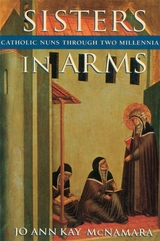 Sisters in Arms: Catholic Nuns through Two Millennia
Jo Ann Kay McNamara
Harvard University Press, 1996 Spanning two thousand years of Christian religious women's quest for spiritual and vocational fulfillment, Sisters in Arms is the first definitive history of Catholic nuns in the Western world. Unfolding century by century, this epic drama encompasses every period from the dawn of Christianity to the present.
History has until recently minimized the role of nuns over the centuries. In this volume, their rich lives, their work, and their importance to the Church are finally acknowledged. Jo Ann Kay McNamara introduces us to women scholars, mystics, artists, political activists, healers, and teachers--individuals whose religious vocation enabled them to pursue goals beyond traditional gender roles. They range from Thecla, the legendary companion of Paul, who baptized herself in preparation for facing the lions in the Roman arena, to Hildegard of Bingen, whose visions unlocked her extraordinary talents for music, medicine, and moral teaching in the twelfth century. They also include Sister Mary Theresa Kane, who stood before the pope--and an American television audience-in 1979 and urged him to consider the ordination of women.
By entering the convent, McNamara shows, nuns gained a community that allowed them to evolve spiritually, intellectually, and emotionally; but the convent was never a perfect refuge. Women's struggles continued against the male church hierarchy, the broader lay community, and the larger cultural and historical forces of change.
The history of nuns is an important part of the larger story of western women whose gender provoked resistance to their claims to autonomy and power. As we enter the third millennium, this groundbreaking work pays fitting tribute to the sisters who have labored with prayer and service for two thousand years, who have struggled to achieve greater recognition and authority, and who have forged opportunities for all women while holding true to the teachings of the Gospel.
 Sisters In Law: Women Lawyers in Modern American History
Virginia G. Drachman
Harvard University Press, 1998 More than any other profession women entered in the nineteenth century, law was the most rigidly engendered. Access to courts, bar associations, and law schools was controlled by men, while the very act of gaining admission to practice law demanded that women reinterpret the male-constructed jurisprudence that excluded them. This history of women lawyers--from the 1860s to the 1930s--defines the contours of women's integration into the modern legal profession.
Nineteenth-century women built a women lawyers' movement through which they fought to gain entrance to law schools and bar associations, joined the campaign for women suffrage, and sought to balance marriage and career. By the twentieth century, most institutional barriers crumbled and younger women entered the law confident that equal opportunity had replaced sexual discrimination. Their optimism was misplaced as many women lawyers continued to encounter discrimination, faced limited opportunities for professional advancement, and struggled to balance gender and professional identity.
Based on rich and diverse archival sources, this book is the landmark study of the history of women lawyers in America.
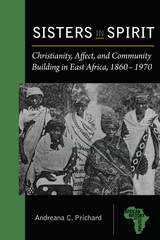 Sisters in Spirit: Christianity, Affect, and Community Building in East Africa, 1860–1970
Andreana C. Prichard
Michigan State University Press, 2017 In this pioneering study, historian Andreana Prichard presents an intimate history of a single mission organization, the Universities’ Mission to Central Africa (UMCA), told through the rich personal stories of a group of female African lay evangelists. Founded by British Anglican missionaries in the 1860s, the UMCA worked among refugees from the Indian Ocean slave trade on Zanzibar and among disparate communities on the adjacent Tanzanian mainland. Prichard illustrates how the mission’s unique theology and the demographics of its adherents produced cohorts of African Christian women who, in the face of linguistic and cultural dissimilarity, used the daily performance of a certain set of “civilized” Christian values and affective relationships to evangelize to new inquirers. The UMCA’s “sisters in spirit” ultimately forged a united spiritual community that spanned discontiguous mission stations across Tanzania and Zanzibar, incorporated diverse ethnolinguistic communities, and transcended generations. Focusing on the emotional and personal dimensions of their lives and on the relationships of affective spirituality that grew up among them, Prichard tells stories that are vital to our understanding of Tanzanian history, the history of religion and Christian missions in Africa, the development of cultural nationalisms, and the intellectual histories of African women.
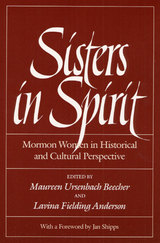 Sisters in Spirit: Mormon Women in Historical and Cultural Perspective
Edited by Maureen Ursenbach Beecher and Lavina Fielding Anderson
University of Illinois Press, 1987 This book of essays about Mormon women, all written and edited by scholars who are themselves Mormon women, is a brave and important work. Readers will fully appreciate just how brave and important it really is, however, if they can see how this work of historical theology fits into the history of historical writing about Mormon women, as well as how it fits into Mormon history itself.
"The women who contributed to this book are among the best of the Mormon literati . . . [they] hold that there is hope within the church for change, for reform, for expansion of the place of women." -- Women's Review of Books
"Historians of women in America have a great deal to learn from the history of Mormon women. This fine set of essays provides an excellent introduction to a subject about which we should all know more." -- Anne Firor Scott, author of Making the Invisible Woman Visible.
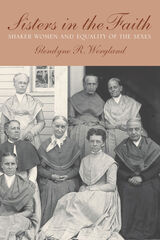 Sisters in the Faith: Shaker Women and Equality of the Sexes
Glendyne R. Wergland
University of Massachusetts Press, 2011 In 1788, following the death of charismatic founder Mother Ann Lee, the celibate religious group known as the Shakers set out to institutionalize equality of the sexes in their theology, government, and daily practice. In this book, Glendyne Wergland evaluates how well they succeeded in that mission by examining the experiences of women within Shaker communities over more than a century.
Drawing on an extensive archive of primary documents, Wergland discusses topics ranging from girlhood, health, and dress to why women joined the Shakers and how they were viewed by those outside their community. She analyzes the division of labor between men and women, showing that there was considerable cooperation and reciprocity in carrying out most tasks-from food production to laundering to gathering firewood-even as gendered conflicts remained.
In her conclusion, Wergland draws together all of these threads to show that Shaker communities achieved a remarkable degree of gender equality at a time when women elsewhere still suffered under the legal and social strictures of the traditional patriarchal order. In so doing, she argues, the experience of Shaker women served as a model for promoting women's rights in American political culture.
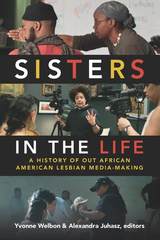 Sisters in the Life: A History of Out African American Lesbian Media-Making
Yvonne Welbon and Alexandra Juhasz, editors
Duke University Press, 2018 From experimental shorts and web series to Hollywood blockbusters and feminist porn, the work of African American lesbian filmmakers has made a powerful contribution to film history. But despite its importance, this work has gone largely unacknowledged by cinema historians and cultural critics. Assembling a range of interviews, essays, and conversations, Sisters in the Life tells a full story of African American lesbian media-making spanning three decades. In essays on filmmakers including Angela Robinson, Tina Mabry and Dee Rees; on the making of Cheryl Dunye's The Watermelon Woman (1996); and in interviews with Coquie Hughes, Pamela Jennings, and others, the contributors center the voices of black lesbian media makers while underscoring their artistic influence and reach as well as the communities that support them. Sisters in the Life marks a crucial first step in narrating the history and importance of these compelling yet unsung artists.
Contributors. Jennifer DeVere Brody, Jennifer DeClue, Raul Ferrera-Balanquet, Alexis Pauline Gumbs, Thomas Allen Harris, Devorah Heitner, Pamela L. Jennings, Alexandra Juhasz, Kara Keeling, Candace Moore, Marlon Moore, Michelle Parkerson, Roya Rastegar, L. H. Stallings, Yvonne Welbon, Patricia White, Karin D. Wimbley
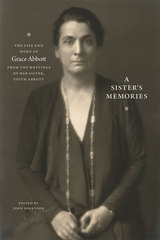 A Sister's Memories: The Life and Work of Grace Abbott from the Writings of Her Sister, Edith Abbott
Edited by John Sorensen
University of Chicago Press, 2015 Among the great figures of Progressive Era reform, Edith and Grace Abbott are perhaps the least sung. Peers, companions, and coworkers of legendary figures such as Jane Addams and Sophonisba Breckinridge, the Abbott sisters were nearly omnipresent in turn-of-the-century struggles to improve the lives of the poor and the working-class people who fed the industrial engines and crowded into diverse city neighborhoods. Grace’s innovative role as a leading champion for the rights of children, immigrants, and women earned her a key place in the history of the social justice movement. As her friend and colleague Eleanor Roosevelt wrote, Grace was “one of the great women of our day . . . a definite strength which we could count on for use in battle.”
A Sister’s Memories is the inspiring story of Grace Abbott (1878–1939), as told by her sister and social justice comrade, Edith Abbott (1876–1957). Edith recalls in vivid detail the Nebraska childhood, impressive achievements, and struggles of her sister who, as head of the Immigrants’ Protective League and the U.S. Children’s Bureau, championed children’s rights from the slums of Chicago to the villages of Appalachia. Grace’s crusade can perhaps be best summed up in her well-known credo: “Justice for all children is the high ideal in a democracy.” Her efforts saved the lives of thousands of children and immigrants and improved those of millions more. These trailblazing social service works led the way to the creation of the Social Security Act and UNICEF and caused the press to nickname her “The Mother of America’s 43 Million Children.” She was the first woman in American history to be nominated to the presidential cabinet and the first person to represent the United States at a committee of the League of Nations.
Edited by Abbott scholar John Sorensen, A Sister’s Memories is destined to become a classic. It shapes the diverse writings of Edith Abbott into a cohesive narrative for the first time and fills in the gaps of our understanding of Progressive Era reforms. Readers of all backgrounds will find themselves engrossed by this history of the unstoppable, pioneer feminist Abbott sisters.
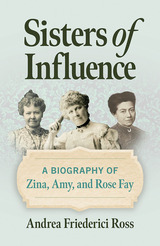 Sisters of Influence: A Biography of Zina, Amy, and Rose Fay
Andrea Friederici Ross
Southern Illinois University Press, 2025 Three sisters who forged intertwined paths to empowerment
A real-life Little Women, Sisters of Influence is the untold story of three extraordinary sisters who defied Victorian-era expectations to leave their marks on history. Andrea Friederici Ross breathes new life into the fascinating stories of Zina, Amy, and Rose Fay, intertwining their narratives into a captivating family biography.
Born into modest circumstances as daughters of an Episcopal rector and a poet, the seven Fay siblings’ upbringing in small-town Vermont was shaped by financial struggles, rare educational opportunities, and the early loss of their mother. While their sisters pursued traditional paths and their brother Norman helped them all, Zina, Amy, and Rose boldly charted their own courses, becoming trailblazers in music, writing, and women’s advocacy.
Zina Fay Peirce envisioned a life of intellectual partnership with her husband, philosopher Charles Sanders Peirce, only to find her dreams frustrated by domestic expectations. Undeterred, she became a writer and a conservative feminist, championing improved education for women and pioneering cooperative housekeeping initiatives. Despite challenges, Zina’s vision for women’s empowerment laid a foundation for future reform.
Amy Fay, a gifted pianist, pursued music studies abroad, including under the tutelage of Franz Liszt. Her letters home, filled with vivid accounts of her experiences in Europe, were edited into a memoir by Zina and published to critical acclaim. As a concert pianist, music teacher, and advocate for women in music, Amy inspired generations of women to follow their artistic passions.
Rose Fay Thomas, initially a quiet supporter of her sisters, emerged as a formidable force in her own right, becoming a founder of the Anti-Cruelty Society. Her leadership in Chicago’s Amateur Musical Club and the National Federation of Music Clubs helped shape the American classical music scene. As the wife of conductor Theodore Thomas, Rose played a pivotal role in establishing the Chicago Symphony Orchestra. Her later writings on gardening and her husband’s life further solidified her legacy.
Through her exploration of the Fay sisters’ lives, Ross illuminates the shifting roles of women during a transformative era. From advocating for women’s education to advancing the arts and social reform, Zina, Amy, and Rose exemplify the resilience and determination that bridged the restrictive norms of the Victorian age and the activism of the Progressive Era. Their remarkable journeys will inspire readers to reimagine the possibilities of women’s contributions to history and culture.
Sisters of Liberty: Marseille, Lyon, Paris and the Reaction to a Centralized State, 1868-1871
Louis M. Greenberg
Harvard University Press, 1971 Although the Paris Commune of 1871 has been the subject of voluminous writing, especially on the place of the uprising in the development of socialist thought and practice, little was previously done on provincial communal movements.
First published in 1971, this book offers an exploration of the insurrection as part of the nationwide struggle for municipal and departmental liberties, bringing to the fore the Commune's relationship to the broader historical problem of the consolidation and future character of the Third Republic, especially in the provinces. Greenberg thus sees the event as part of a long developing effort to decentralize political power in France.
Sisters on a Journey: Portraits of American Midwives
Chester, Penfield
Rutgers University Press, 1997 Sisters on a Journey is a moving collection of twenty-seven profiles-interviews and photographs-of contemporary American midwives. These extraordinary women speak with unusual frankness about what brought them to midwifery, what they see as their greatest challenges and rewards, their recollections of their fist home births, and their thoughts about the place of midwives in the American health care system. This book celebrates midwives from very different ethnic, religious, and ideological backgrounds-in all of their richness and diversity. Chester presents a community of voices of women who share a commitment to other women and who strive together to ensure for a practice with such a long history a successful and vibrant future.
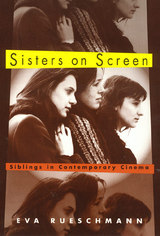 Sisters On Screen
Eva Rueschmann
Temple University Press, 2000 Perhaps the most vital, emotionally complex, and lasting attachments between women occur between sisters. Whether as best friends or antagonists, "sisters remain entangled in a common tapestry of mutual experience and remembrance, family and history," according to author Eva Ruschmann. Although many of the women-centered films in the last three decades depict the relationship between sisters as a pivotal aspect of a character's psychological development, the now substantial body of feminist film criticism has not taken up this theme in any sustained way.
In Sisters on Screen, Eva Rueschmann explores the sister bond in a wide range of modernist feature films that depart from the conventional cinematic rendering of women's lives. Drawing on the psychoanalytic concept of intersubjectivity, this book emphasizes the role of a woman's relationship and inner world in her continual quest for self-knowledge.
Offering an original and absorbing perspective on women's filmic images, Sisters on Screen reveals how post-1960s cinema has articulated the way sin which biological sisters negotiate mutuality and difference, co-author family histories, and profoundly shape each other's political and personal identities. The films in focus question standards of femininity as they probe in to memory, fantasy, and desire, bringing women's realities into view in the process.
Structuring her discussion in terms of life-cycle stages -- adolescence and adulthood -- Rueschmann offers an in-depth discussion of such films as An Angel at my Table, Double Happiness, Eve's Bayou, Gas Food Lodging, Heavenly Creatures, Little Women, Marianne and Juliane, Paura e amore, Peppermint Soda, The Silence, Sweetie, and Welcome to the Dollhouse. Rueschmann draws upon the works of filmmakers from the 1970s to the 1990s. Some of the directors included in her study are Allison Anders, Gillian Armstrong, Ingmar Bergman, Jane Campion, Peter Jackson, Mina Shum, Diane Kurys, Kasi Lemmons, Todd Solondz, and Margarethe von Trotta.
Sisters on Screen will appeal to anyone interested in women's studies, film studies, psychoanalytic readings of cinema, women directors, and international modern film.
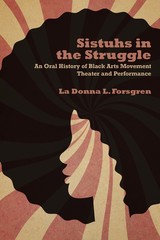 Sistuhs in the Struggle: An Oral History of Black Arts Movement Theater and Performance
La Donna L. Forsgren
Northwestern University Press, 2021 Outstanding Academic Title, CHOICE
The first oral history to fully explore the contributions of black women intellectuals to the Black Arts Movement, Sistuhs in the Struggle reclaims a vital yet under-researched chapter in African American, women’s, and theater history. This groundbreaking study documents how black women theater artists and activists—many of whom worked behind the scenes as directors, designers, producers, stage managers, and artistic directors—disseminated the black aesthetic and emboldened their communities. Drawing on nearly thirty original interviews with well-known artists such as Ntozake Shange and Sonia Sanchez as well as less-studied figures including distinguished lighting designer Shirley Prendergast, dancer and choreographer Halifu Osumare, and three-time Tony-nominated writer and composer Micki Grant, La Donna L. Forsgren centers black women’s cultural work as a crucial component of civil rights and black power activism. Sistuhs in the Struggle is an essential collection for theater scholars, historians, and students interested in learning how black women’s art and activism both advanced and critiqued the ethos of the Black Arts and Black Power movements.
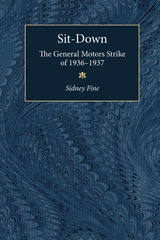 Sit-Down: The General Motors Strike of 1936-1937
Sidney Fine
University of Michigan Press, 1969 In the first documented book-length study of this violent confrontation, Sidney Fine portrays the dramatic events of the 1936-37 strike that catapulted the UAW into prominence and touched off a wave of sit-down strikes across the land. Basing his account on an impressive variety of manuscript sources, the author analyzes the strategy and tactics of GM and the UAW, describes the life of the workers in the occupied plants, and examines the troubled governmental and public reaction to the alleged breakdown of law and order in the strikes. In addition, Dr. Fine provides vivid portraits of Governor Frank Murphy and the major figures on both sides of the conflict: Alfred Sloan, Jr., William Knudson, Robert Travis, Roy Victor, and Walter Reuther, Homer Martin, and Wyndham Mortimer. Of particular interest today are the author's concluding remarks regarding the similarities between the sit-down strike movement of the 1930's and the civil rights movement and the college sit-ins of our own era. The GM sit-down strike marks the close of one era of labor-management relations in the United States and the beginning of another. Professor Fine has provided us with the definitive account of that momentous conflict.
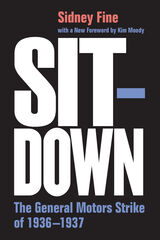 Sit-Down: The General Motors Strike of 1936-1937
Sidney Fine
University of Michigan Press, 2020 In this classic study, Sidney Fine portrays the dramatic events of the 1936–37 Flint Sit-down Strike against General Motors, which catapulted the UAW into prominence and touched off a wave of sit-down strikes across the United States. Basing his account on an impressive variety of manuscript sources, Fine analyzes the strategy and tactics of GM and the UAW, describes the life of the workers in the occupied plants, and examines the troubled governmental and public reaction to the alleged breakdown of law and order in the strikes. In addition, Fine provides vivid portraits of the major figures on both sides of the conflict: Governor Frank Murphy; Alfred Sloan, Jr.; William Knudsen; Robert Travis; Roy, Victor, and Walter Reuther; Homer Martin; and Wyndham Mortimer. The GM sit-down strike marks the close of one era of labor-management relations in the United States and the beginning of another. A half century after its initial publication, Fine’s work remains the definitive account of that momentous conflict. A new foreword by Kim Moody’s revisits Sit-Down in order to demonstrate its continued relevance to today’s unions, workers, and activists.
 Site Design for Multifamily Housing: Creating Livable, Connected Neighborhoods
Nico Larco, Kristin Kelsey, and Amanda Stocker West
Island Press, 2014 The United States is over eighty percent urbanized, yet over half of the population still lives in suburban settings, characterized by low-density, automobile-dependent development with separated land uses. These disconnected and isolated models of development have been linked to increased greenhouse-gas emissions and reduced quality of life, health, and social connections. In Site Design for Multifamily Housing: Creating Livable, Connected Neighborhoods, the authors explain that creating more livable and vital communities is within reach and the design and development of multifamily housing is a key component to reaching this goal.
Multifamily housing is an important component of increasing density, but large lot multifamily developments often lack connectivity and hence limit livability and walkability. Multifamily housing in suburban areas presents greater challenges than in urban areas due in part to larger lot sizes and street patterns that are often a mix of cul-de-sac, curved, looped, and dead-end streets. Increasing the livability of these developments is an important first step in affecting the livability of the country as a whole.
This handbook introduces planners, developers, and designers to ten key elements of multifamily site design, comparing typical and recommended conditions. Case studies of successful large lot multifamily developments as well as retrofit proposals for existing developments with low internal and external connectivity will demonstrate how the tools in the book can be applied. Examples are drawn from Oregon, California, North Carolina, and Arizona. The ideas and tools in this book, including the planning checklist, code guide, and code summaries, will help users to create more livable, vibrant, and healthy communities.
Site of Deportation, Site of Memory: The Amsterdam Hollandsche Schouwburg and the Holocaust
Edited by Frank van Vree, Hetty Berg, and David Duindam
Amsterdam University Press, 2019 The Hollandsche Schouwburg is a former theatre in Amsterdam where, during the Nazi occupation of the Netherlands, tens of thousands of Jews were assembled before being deported to transit and concentration camps. Before the war, the theatre had been an example of Jewish integration in the Netherlands, and after the war it became a memorial for the Jewish victims of Nazi persecution. This book is the first international publication to address all the historical aspects of the site, putting it in a broader European and historical context.
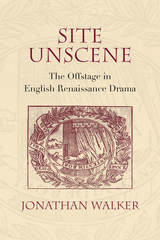 Site Unscene: The Offstage in English Renaissance Drama
Jonathan Walker
Northwestern University Press, 2017 Site Unscene: The Offstage in English Renaissance Drama explores the key role of dramatic episodes that occur offstage and beyond the knowledge-generating faculty of playgoers’ sight. Does Ophelia drown? Is Desdemona unfaithful to Othello? Does Macbeth murder Duncan in his sleep? Site Unscene considers how the drama’s nonvisible and eccentric elements embellish, alter, and subvert visible action on the stage.
Jonathan Walker demonstrates that by removing scenes from visible performance, playwrights take up the nondramatic mode of storytelling in order to transcend the limits of the stage. Through this technique, they present dramatic action from the subjective, self-interested, and idiosyncratic perspectives of individual characters. By recovering these offstage elements, Walker reveals the pervasive and formative dynamic between the onstage and offstage and between the seen and unseen in Renaissance drama.
Examining premodern dramatic theory, Renaissance plays, period amphitheaters, and material texts, this interdisciplinary work considers woodcuts, engravings, archaeology, architecture, rhetoric, the history of the book, as well as plays by Shakespeare, Marlowe, Kyd, Ford, Middleton, and Webster, among others. It addresses readers engaged in literary criticism, dramatic theory, theater history, and textual studies.
Site Unseen: The Politics of Siting a Nuclear Waste Repository
Gerald Jacob
University of Pittsburgh Press, 1990
Gerald Jacob views the history of public policy regarding nuclear waste, culminating in the 1982 Nuclear Waste Policy act and its aftermath. The 1982 act promised a solution, but Jacob believes it deferred to the interests of the nuclear utilities and the U.S. Department of Energy. He describes how the nuclear establishment used science and geography to protect its interests and dominate nuclear waste policy making. He examines the federal promotion of nuclear power, and asserts that federal policies strong-armed public opposition, and locked the country into a single, but flawed waste disposal solution.
Sites: A Third Memoir
Wallace Fowlie
Duke University Press, 1987 Wallace Fowlie here gives us his third book of memoirs—the best yet. Sites is thematically focused on places that marked Fowlie's life and affected his way of looking at the world. This brilliantly written book exhibits great clarity and elegant simplicity, virtues that only an experienced—and good—writer can achieve. Although Sites has a strong unfolding narrative pattern that encourages you to read it from beginning to end, it can be browsed in to good purpose, for you can read any chapter out of sequence and still relish it.
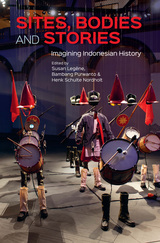 Sites, Bodies and Stories: Imagining Indonesian History
Edited by Susan Legêne, Bambang Purwanto, and Henk Schulte Nordholt
National University of Singapore Press, 2015 Sites, Bodies and Stories examines the intimate links between history and heritage as they have developed in postcolonial Indonesia. Sites discussed in the book include Borobudur in Central Java, a village in Flores built around megalithic formations, and ancestral houses in Alor. Bodies refers to legacies of physical anthropology, exhibition practices and Hollywood movies. The Stories are accounts of the Mambesak movement in Papua, the inclusion of wayang puppetry in UNESCO’s List of the Intangible Cultural Heritage of Humanity, and subaltern history as written by the people of Blambangan in their search for national heroes. Throughout the book, citizenship entitlement figures as a leitmotif in heritage initiatives.
Contemporary heritage formation in Indonesia is intrinsically linked to a canon of Indonesian art and culture developed during Dutch colonial rule, institutionalized within Indonesia’s heritage infrastructure and in the Netherlands, and echoed in museums and exhibitions throughout the world. The authors in this volume acknowledge colonial legacies but argue against a colonial determinism, considering instead how contemporary heritage initiatives can lead to new interpretations of the past.
 Sites of Desire/Economies of Pleasure: Sexualities in Asia and the Pacific
Edited by Lenore Manderson and Margaret Jolly
University of Chicago Press, 1997 Discussions of sexuality in Asia and the Pacific have long been tinged with conceptions of the exotic Orient. Examining a world of erotic encounter between European, Asian, and Pacific people, these essays explore how sexual practices and sexual meanings have been constructed across cultural borders in Thailand, the Philippines, Burma/Myanmar, Japan, Fiji, Papua New Guinea, and the Polynesian islands. Considering sexuality as embedded in a complex social and political world structured and saturated by gender, race, and class relations, these scholars challenge the categories with which sex and gender have been named and studied. They examine these sites of desire through specific historic and cultural circumstances, from the first explorations of Europeans, through colonial power, to the contemporary issues of sexual tourism, prostitution, and the HIV/AIDS pandemic.
A unique and important contribution to the study of sexuality, this book also suggests that the history of sexuality in the West was shaped by myths of the legendary Orient and the exotic "Other."
Sites of European Antisemitism in the Age of Mass Politics, 1880–1918
Edited by Robert Nemes and Daniel Unowsky
Brandeis University Press, 2014 This innovative collection of essays on the upsurge of antisemitism across Europe in the decades around 1900 shifts the focus away from intellectuals and well-known incidents to less-familiar events, actors, and locations, including smaller towns and villages. This “from below” perspective offers a new look at a much-studied phenomenon: essays link provincial violence and antisemitic politics with regional, state, and even transnational trends. Featuring a diverse array of geographies that include Great Britain, France, Austria-Hungary, Romania, Italy, Greece, and the Russian Empire, the book demonstrates the complex interplay of many factors—economic, religious, political, and personal—that led people to attack their Jewish neighbors.
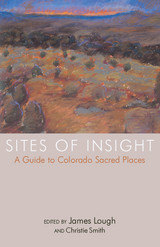 Sites of Insight: A Guide to Colorado Sacred Places
James Lough
University Press of Colorado, 2003 Co-Winner of the 2004 Colorado Endowment for the Humanities Publication Prize. In these eighteen illuminating essays, some of Colorado's most accomplished novelists, essayists, and poets write in intimate detail about their most poignant experiences in the Colorado wilderness. Readers are given access - both physically and spiritually - to settings that inspire reverence for and contemplation about one's relationship to the land. From above tree line in the Rawah Mountains down into the broad San Luis Valley, from the Western Slope to the high plains in the east, the reader is taken on a vivid journey through a rich assortment of Colorado's awe-inspiring landscapes. Essays by Tom Noel, Fred Baca, Kristen Iversen, and Reyes Garcia are historical in makeup, while those by Sangeeta Reddy, Merrill Gilfillan, and Amy England feature engaging spiritual and philosophical explorations, even epiphanies. Reg Saner and Nick Sutcliffe share experiences of pitting themselves against nature. And in the tradition of Thoreau, John Muir, and Annie Dillard, all of these essayists explore the intense and vibrant relationships people have with the wilderness. Sites of Insight belongs on the bookshelves of tourists, outdoor enthusiasts, and Coloradoans - both longtime residents and newcomers - who seek to apprehend something in nature that is larger than themselves.
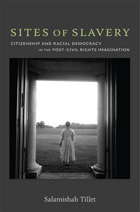 Sites of Slavery: Citizenship and Racial Democracy in the Post–Civil Rights Imagination
Salamishah Tillet
Duke University Press, 2012 More than forty years after the major victories of the civil rights movement, African Americans have a vexed relation to the civic myth of the United States as the land of equal opportunity and justice for all. In Sites of Slavery Salamishah Tillet examines how contemporary African American artists and intellectuals—including Annette Gordon-Reed, Barbara Chase-Riboud, Bill T. Jones, Carrie Mae Weems, and Kara Walker—turn to the subject of slavery in order to understand and challenge the ongoing exclusion of African Americans from the founding narratives of the United States. She explains how they reconstruct "sites of slavery"—contested figures, events, memories, locations, and experiences related to chattel slavery—such as the allegations of a sexual relationship between Thomas Jefferson and Sally Hemings, the characters Uncle Tom and Topsy in Harriet Beecher Stowe's novel Uncle Tom's Cabin, African American tourism to slave forts in Ghana and Senegal, and the legal challenges posed by reparations movements. By claiming and recasting these sites of slavery, contemporary artists and intellectuals provide slaves with an interiority and subjectivity denied them in American history, register the civic estrangement experienced by African Americans in the post–civil rights era, and envision a more fully realized American democracy.
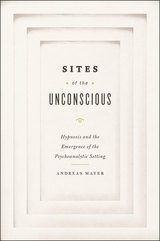 Sites of the Unconscious: Hypnosis and the Emergence of the Psychoanalytic Setting
Andreas Mayer
University of Chicago Press, 2013 In the late nineteenth century, scientists, psychiatrists, and medical practitioners began employing a new experimental technique for the study of neuroses: hypnotism. Though the efforts of the famous French neurologist Jean-Martin Charcot to transform hypnosis into a laboratory science failed, his Viennese translator and disciple Sigmund Freud took up the challenge and invented psychoanalysis. Previous scholarship has viewed hypnosis and psychoanalysis in sharp opposition or claimed that both were ultimately grounded in the phenomenon of suggestion and thus equally flawed. In this groundbreaking study, Andreas Mayer reexamines the relationship between hypnosis and psychoanalysis, revealing that the emergence of the familiar Freudian psychoanalytic setting cannot be understood without a detailed analysis of the sites, material and social practices, and controversies within the checkered scientific and medical landscape of hypnotism.
Sites of the Unconscious analyzes the major controversies between competing French schools of hypnotism that emerged at this time, stressing their different views on the production of viable evidence and their different ways of deploying hypnosis. Mayer then reconstructs in detail the reception of French hypnotism in German-speaking countries, arguing that the distinctive features of Freud’s psychoanalytic setting of the couch emerged out of the clinical laboratories and private consulting rooms of the practitioners of hypnosis.
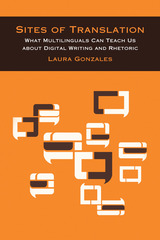 Sites of Translation: What Multilinguals Can Teach Us about Digital Writing and Rhetoric
Laura Gonzales
University of Michigan Press, 2018 Winner of the 2016 Sweetland Digital Rhetoric Collaborative Book Prize
Sites of Translation illustrates the intricate rhetorical work that multilingual communicators engage in as they translate information for their communities. Blending ethnographic and empirical methods from multiple disciplines, Laura Gonzales provides methodological examples of how linguistic diversity can be studied in practice, both in and outside the classroom, and provides insights into the rhetorical labor that is often unacknowledged and made invisible in multilingual communication. Sites of Translation is relevant to researchers and teachers of writing as well as technology designers interested in creating systems, pedagogies, and platforms that will be more accessible and useful to multilingual audiences. Gonzales presents multilingual communication as intellectual labor that should be further valued in both academic and professional spaces, and supported by multilingual technologies and pedagogies that center the expertise of linguistically diverse communicators.
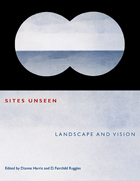 Sites Unseen: Landscape and Vision
Dianne Harris
University of Pittsburgh Press, 2007 Sites Unseen challenges conventions for viewing and interpreting the landscape, using visual theory to move beyond traditional practices of describing and classifying objects to explore notions of audience and context. While other fields, such as art history and geography, have engaged poststructuralist theory to consider vision and representation, the application of such inquiry to the natural or built environment has lagged behind. This book, by treating landscape as a spatial, psychological, and sensory encounter, aims to bridge this gap, opening a new dialogue for discussing the landscape outside the boundaries of current art criticism and theory.
As the contributors reveal, the landscape is a widely adaptable medium that can be employed literally or metaphorically to convey personal or institutional ideologies. Walls, gates, churchyards, and arches become framing devices for a staged aesthetic experience or to suit a sociopolitical agenda. The optic stimulation of signs, symbols, bodies, and objects combines with physical acts of climbing and walking and sensory acts of touching, smelling, and hearing to evoke an overall “vision” of landscape.
Sites Unseen considers a variety of different perspectives, including ancient Roman visions of landscape, the framing techniques of a Moghul palace, and a contemporary case study of Christo's The Gates, as examples of human attempts to shape our sensory, cognitive, and emotional experiences in the landscape.
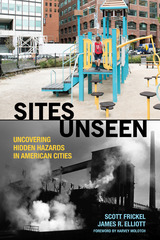 Sites Unseen: Uncovering Hidden Hazards in American Cities
Scott Frickel
Russell Sage Foundation, 2018 Winner of the 2020 Robert E. Park Award for Best Book from the Community and Urban Sociology Section of the American Sociological Association
From a dive bar in New Orleans to a leafy residential street in Minneapolis, many establishments and homes in cities across the nation share a troubling and largely invisible past: they were once sites of industrial manufacturers, such as plastics factories or machine shops, that likely left behind carcinogens and other hazardous industrial byproducts. In Sites Unseen, sociologists Scott Frickel and James Elliott uncover the hidden histories of these sites to show how they are regularly produced and reincorporated into urban landscapes with limited or no regulatory oversight. By revealing this legacy of our industrial past, Sites Unseen spotlights how city-making has become an ongoing process of social and environmental transformation and risk containment.
To demonstrate these dynamics, Frickel and Elliott investigate four very different cities—New Orleans, Minneapolis, Philadelphia, and Portland, Oregon. Using original data assembled and mapped for thousands of former manufacturers’ locations dating back to the 1950s, they find that more than 90 percent of such sites have now been converted to urban amenities such as parks, homes, and storefronts with almost no environmental review. And because manufacturers tend to open plants on new, non-industrial lots rather than on lots previously occupied by other manufacturers, associated hazards continue to spread relatively unabated. As they do, residential turnover driven by gentrification and the rising costs of urban living further obscure these sites from residents and regulatory agencies alike.
Frickel and Elliott show that these hidden processes have serious consequences for city-dwellers. While minority and working class neighborhoods are still more likely to attract hazardous manufacturers, rapid turnover in cities means that whites and middle-income groups also face increased risk. Since government agencies prioritize managing polluted sites that are highly visible or politically expedient, many former manufacturing sites that now have other uses remain invisible. To address these oversights, the authors advocate creating new municipal databases that identify previously undocumented manufacturing sites as potential environmental hazards. They also suggest that legislation limiting urban sprawl might reduce the flow of hazardous materials beyond certain boundaries.
A wide-ranging synthesis of urban and environmental scholarship, Sites Unseen shows that creating sustainable cities requires deep engagement with industrial history as well as with the social and regulatory processes that continue to remake urban areas through time.
A Volume in the American Sociological Association's Rose Series in Sociology.
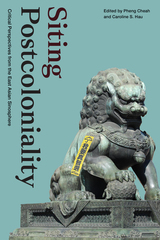 Siting Postcoloniality: Critical Perspectives from the East Asian Sinosphere
Pheng Cheah and Caroline Hau, editors
Duke University Press, 2023 The contributors to Siting Postcoloniality reevaluate the notion of the postcolonial by focusing on the Sinosphere—the region of East and Southeast Asia that has been significantly shaped by relations with China throughout history. Pointing out that the history of imperialism in China and Southeast Asia is longer and more complex than Euro-American imperialism, the contributors complicate the traditional postcolonial binaries of center-periphery, colonizer-colonized, and developed-developing. Among other topics, they examine socialist China’s attempts to break with Soviet cultural hegemony; the postcoloniality of Taiwan as it negotiates the legacy of Japanese colonial rule; Southeast Asian and South Asian diasporic experiences of colonialism; and Hong Kong’s complex colonial experiences under the British, the Japanese, and mainland China. The contributors show how postcolonial theory’s central concepts cannot adequately explain colonialism in the Sinosphere. Challenging fundamental axioms of postcolonial studies, this volume forcefully suggests that postcolonial theory needs to be rethought.
Contributors. Pheng Cheah, Dai Jinhua, Caroline S. Hau, Elaine Yee Lin Ho, Wendy Larson, Liao Ping-hui, Lin Pei-yin, Lo Kwai-Cheung, Lui Tai-lok, Pang Laikwan, Lisa Rofel, David Der-wei Wang, Erebus Wong, Robert J. C. Young
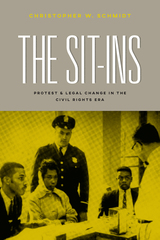 The Sit-Ins: Protest and Legal Change in the Civil Rights Era
Christopher W. Schmidt
University of Chicago Press, 2018 On February 1, 1960, four African American college students entered the Woolworth department store in Greensboro, North Carolina, and sat down at the lunch counter. This lunch counter, like most in the American South, refused to serve black customers. The four students remained in their seats until the store closed. In the following days, they returned, joined by growing numbers of fellow students. These “sit-in” demonstrations soon spread to other southern cities, drawing in thousands of students and coalescing into a protest movement that would transform the struggle for racial equality.
The Sit-Ins tells the story of the student lunch counter protests and the national debate they sparked over the meaning of the constitutional right of all Americans to equal protection of the law. Christopher W. Schmidt describes how behind the now-iconic scenes of African American college students sitting in quiet defiance at “whites only” lunch counters lies a series of underappreciated legal dilemmas—about the meaning of the Constitution, the capacity of legal institutions to remedy different forms of injustice, and the relationship between legal reform and social change. The students’ actions initiated a national conversation over whether the Constitution’s equal protection clause extended to the activities of private businesses that served the general public. The courts, the traditional focal point for accounts of constitutional disputes, played an important but ultimately secondary role in this story. The great victory of the sit-in movement came not in the Supreme Court, but in Congress, with the passage of the Civil Rights Act of 1964, landmark legislation that recognized the right African American students had claimed for themselves four years earlier. The Sit-Ins invites a broader understanding of how Americans contest and construct the meaning of their Constitution.
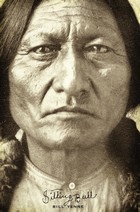 Sitting Bull
Bill Yenne
Westholme Publishing, 2008 An Acclaimed Biography of the Greatest American Indian Leader
Sitting Bull's name is still the best known of any American Indian leader, but his life and legacy remain shrouded with misinformation and half-truths. Sitting Bull's life spanned the entire clash of cultures and ultimate destruction of the Plains Indian way of life. He was a powerful leader and a respected shaman, but neither fully captures the enigma of Sitting Bull. He was a good friend of Buffalo Bill and skillful negotiator with the American government, yet erroneously credited with both murdering Custer at the Little Big Horn and with being the chief instigator of the Ghost Dance movement. The reality of his life, as Bill Yenne reveals in his absorbing new portrait, Sitting Bull, is far more intricate and compelling. Tracing Sitting Bull's history from a headstrong youth and his first contact with encroaching settlers, through his ascension as the spiritual and military leader of the Lakota, friendship with a Swiss-American widow from New York, and death at the hands of the Indian police on the eve of the massacre at Wounded Knee, Yenne scoured rare contemporary records and consulted Sitting Bull's own "Hieroglyphic Autobiography" in the course of his research. While Sitting Bull was the leading figure of Plains Indian resistance his message, as Yenne explains, was of self-reliance, not violence. At the Battle of the Little Bighorn, Sitting Bull was not confronting Custer as popular myth would have it, but riding through the Lakota camp making sure the most defenseless of his tribe--the children--were safe. In Sitting Bull we find a man who, in the face of an uncertain future, helped ensure the survival of his people.
Sitting In: Selected Writings on Jazz, Blues, and Related Topics
Hayden Carruth
University of Iowa Press, 1993 This collection of essays and poems about the influence of jazz on writing and culture in this country, an expanded edition of the 1986 publication, is a rewarding volume for all those entranced by jazz. Carruth brings his considerable poetic and literary sensibilities to bear on a topic very near to his heart: "Those who are devoted primarily to jazz, to poetry, to all the arts, are also those who contribute more intelligently than others to our practical and moral, political and social, advancement."
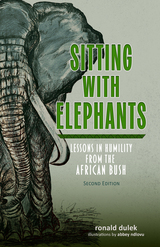 Sitting with Elephants: Lessons in Humility from the African Bush, Enhanced and Expanded Second Edition
Ronald Dulek, Illustrations by Abbey Ndlovu
University of Alabama Press, 2026 A professor of communication and strategy reveals deep lessons from life in the African bush. Sitting with Elephants is a heartfelt memoir that follows a middle-aged American professor and his wife as they trade suburban life for a remote bush house in South Africa. What begins as a spontaneous decision becomes a life-changing experience—one shaped by lions at the backdoor, baboons in the rafters, and above all, a herd of elephants who frequent their yard like neighbors. Told through a series of emails to their adult children and brought to life by vivid illustrations from Abbey Ndlovu, Ronald Dulek’s narrative explores the profound lessons nature teaches: patience, humility, and deep respect for the wild. As the couple learns to communicate with elephants and navigate the rhythms of bush life, they also reflect on the unexpected beauty of slowing down and embracing the unknown. Blending lighthearted anecdotes with moments of quiet insight, Sitting with Elephants invites readers into a story of transformation—both personal and environmental. This second edition includes expanded content with new stories and reflections, offering a deeper look into the couple’s unforgettable time in the African bush.
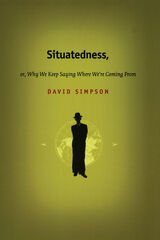 Situatedness, or, Why We Keep Saying Where We're Coming From
David Simpson
Duke University Press, 2002 “Let me tell you where I'm coming from . . .”—so begins many a discussion in contemporary U.S. culture. Pressed by an almost compulsive desire to situate ourselves within a definite matrix of reference points (for example, “as a parent of two children” or “as an engineer” or “as a college graduate”) in both scholarly inquiry and everyday parlance, we seem to reject adamantly the idea of a universal human subject. Yet what does this rhetoric of self-affiliation tell us? What is its history? David Simpson’s Situatedness casts a critical eye on this currently popular form of identification, suggesting that, far from being a simple turn of phrase, it demarcates a whole structure of thinking.
Simpson traces the rhetorical syndrome through its truly interdisciplinary genealogy. Discussing its roles within the fields of legal theory, social science, fiction, philosophy, and ethics, he argues that the discourse of situatedness consists of a volatile fusion of modesty and aggressiveness. It oscillates, in other words, between accepting complete causal predetermination and advocating personal agency and responsibility. Simpson’s study neither fully rejects nor endorses the present-day language of self-specification. Rather it calls attention to the limitations and opportunities of situatedness—a notion whose ideological slippage it ultimately sees as allowing late-capitalist liberal democracies to function.
Given its wide scope and lively rendering, Situatedness will attract a range of scholars in the humanities and legal studies. It will also interest all those for whom the politics of subjectivity pose real problems of authority, identity, and belief.
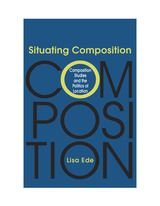 Situating Composition: Composition Studies and the Politics of Location
Lisa Ede
Southern Illinois University Press, 2004 Responding to a growing pedagogical paralysis in debates over the nature and status of composition studies as an academic discipline, Lisa Ede offers a provocative inquiry into the politics of composition’s place in the academy. The result is a timely and engaging reflection on the rhetoric, ideology, and ethics of scholarship and instruction in composition studies today. Situating Composition: Composition Studies and the Politics of Location delves into some of the most vexing issues presently facing the field: its status in relation to English studies, the nature and consequences of the writing process movement, the uneven professionalization of composition teachers, and the widening chasm between theory and practice. Ede interrogates key moments and texts in composition’s evolution, from the writing process movement to Susan Miller’s Textual Carnivals, through the interpretive lenses of historical analysis, theoretical critique, feminist and cultural theory, and Ede’s own two decades of experiences as a teacher and writing program administrator. Questioning the narratives of progress and paradigm shifts that inform the field’s highly regarded recent theoretical studies, Ede urges scholars to carefully reconsider these claims, to honor the roles of teachers and students as more than dupes of ideology, and to more fully acknowledge—and utilize—the differences between the practice of theory and the practice of teaching. As academic hierarchies of knowledge increasingly privilege scholarship over instruction, Ede warns researchers to be cognizant of the politics and power inherent in their own location in the academy, particularly when professing to speak for teachers and students. To that end, the volume’s conclusion advocates pragmatic avenues for change and proffers topics for future discussion and debate.
 Situating Data: Inquiries in Algorithmic Culture
Karin van Es
Amsterdam University Press, 2023 aking up the challenges of the datafication of culture, as well as of the scholarship of cultural inquiry itself, this collection contributes to the critical debate about data and algorithms. How can we understand the quality and significance of current socio-technical transformations that result from datafication and algorithmization? How can we explore the changing conditions and contours for living within such new and changing frameworks? How can, or should we, think and act within, but also in response to these conditions?
This collection brings together various perspectives on the datafication and algorithmization of culture from debates and disciplines within the field of cultural inquiry, specifically (new) media studies, game studies, urban studies, screen studies, and gender and postcolonial studies. It proposes conceptual and methodological directions for exploring where, when, and how data and algorithms (re)shape cultural practices, create (in)justice, and (co)produce knowledge.
Situating Portfolios
edited by Kathleen Blake Yancey & Irwin Weiser
Utah State University Press, 1997 Yancey and Weiser bring together thirty-one writing teachers from diverse levels of instruction, institutional settings, and regions to create a stimulating volume on the current practice in portfolio writing assessment. Contributors reflect on the explosion in portfolio practice over the last decade, why it happened, what comes next; discuss portfolios in hypertext, the web, and other electronic spaces; and consider emerging trends and issues that are involving portfolios in teacher assessment, faculty development, and graduate student experience. Contributors: Peter Elbow, Pat Belanoff, Gail Hawisher, Cynthia Selfe, Brian Huot, Sandra Murphy, William Condon
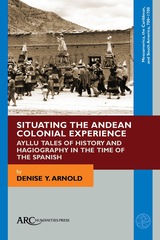 Situating the Andean Colonial Experience: Ayllu Tales of History and Hagiography in the Time of the Spanish
Denise Y. Arnold
Arc Humanities Press, 2021 Re-situating Andean colonial history from the perspective of the local historians of ayllu Qaqachaka, in highland Bolivia, this book draws on regional oral history combined with local and public written archives. Rejecting the binary models in vogue in colonial and postcolonial studies (indigenous/non-indigenous, Andean/Western, conquered/conquering), it explores the complex intercalation of legal pluralism and local history in the negotiations around Spanish demands, resulting in the so-called “Andean pact.”
The Qaqachaka’s point of reference was the preceding Inka occupation, so in fulfilling Spanish demands they sought cultural continuity with this recent past. Spanish colonial administration, with its roots in Roman-Germanic and Islamic law, infiltrated many practices into the newly-conquered territories. Two major cycles of ayllu tales trace local responses to these colonial demands, in the practices for establishing settlements, and the feeding and dressing of the Catholic saints inside the new church, with their forebears in the Inka mummies.
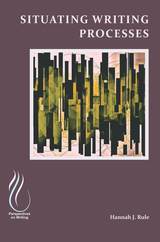 Situating Writing Processes: Physicality, Improvisation, and the Teaching of Writing
Hannah Rule
University Press of Colorado, 2020 What should it mean today to "teach writing as a process"? In Situating Writing Processes, Hannah J. Rule takes stock of this familiar commonplace in composition studies, arguing for a renewed understanding of process that emphasizes situatedness. To situate processes is to physically locate them: to observe the infinite ways they are shaped by particular bodies and affects, environments and spaces, others near and distant, and various tools or objects. When we call attention to the physical, material, and located dimensions of processes, we foreground the differences, contingencies, and lived experiences of composing. Doing so is critical, Rule argues, to finally letting go of discrete skills and instead teaching writing as experience in seeing and responding to ranging constraints immediate and distant, material and social. Situating processes ultimately emphasizes vulnerability: how all writing involves risk, uncertainty, and the possibility of failure, as processes are susceptible to the participation and control of forces on ranging scales and always in excess of the writer alone. Accounting for context, difference, and improvisation, Situating Writing Processes helps writing teachers and scholars freshly reimagine the histories and potential of an enduring concept.
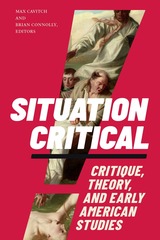 Situation Critical: Critique, Theory, and Early American Studies
Max Cavitch and Brian Connolly, editors
Duke University Press, 2024 The contributors to Situation Critical argue for the continued importance of critique to early American studies, pushing back against both reductivist neo-empiricism and so-called postcritique. Bringing together essays by a diverse group of historians and literary scholars, editors Max Cavitch and Brian Connolly demonstrate that critique is about acknowledging that we are never simply writing better or worse accounts of the past, but accounts of the present as well. The contributors examine topics ranging from the indeterminacy of knowledge and history to Black speculative writing and nineteenth-century epistemology, the role of the unconscious in settler colonialism, and early American writing about masturbation, repression, religion, and secularism and their respective influence on morality. The contributors also offer vital new interpretations of major lines of thought in the history of critique—especially those relating to Freud and Foucault—that will be valuable both for scholars of early American studies and for scholars of the humanities and interpretive social sciences more broadly.
Contributors. Max Cavitch, Brian Connolly, Matthew Crow, John J. Garcia, Christopher Looby, Michael Meranze, Mark J. Miller, Justine S. Murison, Britt Rusert, Ana Schwartz, Joan W. Scott, Jordan Alexander Stein
The Situation in Logic
Jon Barwise
CSLI, 1989 Situation theory and situation semantics are recent approaches to language and inforamtion, approaches first formulated by Jon Barwise amd John Perry in Situations and Attitudes (1983). The present volume collects some of Barwise's papers written since then, those directly concerned with relations between logic, situation theory, and situation semantics. Several appers appear here mfor the first time.
JON BARWISE is director of the Symbolic Systems Program and professor of philosophy at Stanford University and a researcher at CSLI.
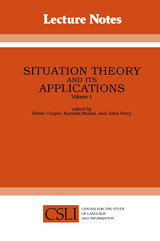 Situation Theory and Its Applications, Volume 1
Edited by Robin Cooper, Kuniaki Mukai, and John Perry
CSLI, 1990 Situation Theory grew out of attempts by Jon Barwise in the late 1970s to provide semantics for "naked-infinitive" perceptual reports such as 'Claire saw Jon run'. Barwise's intuition was that Claire didn't just see Jon, an individual, but Jon doing something, a situation. Situations are individuals having properties and standing in relations. A theory of situations would allow us to study and compare various types of situations or situation-like entities, such as facts, events and scenes.
One of the central themes of situation theory is that a theory of meaning and reference should be set within a general theory of information, one moreover that is rich enough to do justice to perception, communication and thought. By now many people have contributed to the development and application of situation theory, constrained by the need to account for certain kinds of semantic phenomena, and by the need to give a rigorous mathematical account of the principles of information that underwrite the theory.
This volume presents work that evolved out of the First Conference on Situation Theory and Its Applications held by CSLI at Asilomar, California, in March 1989. The nineteen papers included here fall into three categories. Those in Part I explore logical and mathematical issues that arise within situation theory. The papers in Part II connect situation theory with other approaches to logical issues, while those in Part III apply various version of situation theory to a number of linguistic issues.
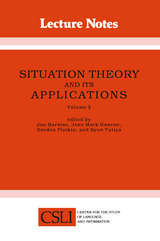 Situation Theory and Its Applications, Volume 2
Edited by Jon Barwise, Jean Mark Gawron, Gordon Plotkin, and Syun Tutiya
CSLI, 1991 Situation theory is the result of an interdisciplinary effort to create a full-fledged theory of information. Created by scholars and scientists from cognitive science, computer science, AI, linguistics, logic, philosophy, and mathematics, the theory is forging a common set of tools for the analysis of phenomena from all these fields.
This volume presents work that evolved out of the Second Conference on Situation Theory and its Applications. Twenty-six essays exhibit the wide range of the theory, covering such topics as natural language semantics, philosophical issues about information, mathematical aplications, and the visual representation of the information in computer systems.
Jon Barwise is a professor of philosophy, mathematics, and logic at indiana university in Bloomington. Jean Mark Gawron is a researcher at SRI International and a consultant at Hewlett-Packard Laboratories. Gordon Plotkin is a professor of theoretical computer science at the University of Edinburgh. Syun Tutiya is in the philosophy department at Chiba University in Japan.
Center for the Study of Language and Information- Lecture Notes, Number 26
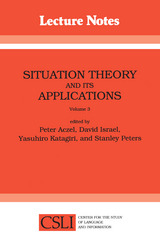 Situation Theory and Its Applications, Volume 3
Edited by Peter Aczel, David Israel, Stanley Peters, and Yasuhiro Katagiri
CSLI, 1993 These essays evolved from research presented at the Third International Conference on situation theory and its applications.
Situation Theory is the result of an interdisciplinary effort to create a full-fledged theory of information. Created by scholars and scientists from cognitive science, computer science and AI, linguistics, logic, philosophy, and mathematics, it aims to provide a common set of tools for the analysis of phenomena from all of these fields. The research presented in this volume reflects a growing international and interdisciplinary activity of importance to many fields concerned with the information.
Peter Aczel is professor of mathematical logic and computer logic at Manchester University. David Israel is a senoir computer scientist in the Artificial Intelligence Center at SRI International abd a consulting professor in the Philosophy Department at Stanford University. Yasuhiro Katagiri is a research scientist in the Information Science Research Laboratory of NTT Basic Research Laboratories. Stanley Peters is professor of linguistics and symbolic systems at Stanford University.
The Situationist International: A Critical Handbook
Alastair Hemmens
Pluto Press, 2020 Formed amidst the incendiary violence and political turmoil of the 1960s, beyond the barricades, the Situationist International (SI) remains to this day influential in anti-capitalist cultural, political and philosophical debates.
Looking at philosophy, sociology, critical theory, art, architecture and literature, The Situationist International is an up-to-date and comprehensive survey of the SI and its thought. Leading thinkers analyze the SI's interdisciplinary challenges, its roots in the artistic avant-garde and the traditional workers' movements, its engagement with the problems of postcolonialism and issues of gender and sexuality.
Including contributions from key thinkers, including Anselm Jappe and Michael Lowy, as well as new and upcoming scholars, The Situationist International unpacks the complexity of a group that has come to define radical politics and culture in the postwar period.
Situations and Attitudes
Jon Barwise and John Perry
CSLI, 1983 In this provocative book, Barwise and Perry tackle the slippery subject of "meaning," a subject that has long vexed linguists, language philosophers, and logicians. Meaning does not exist solely within words and sentences but resides largely in the situation and the attitudes brought to it by those involved. The authors present an unusually lucid treatment of important innovations in the field of natural semantics, contending that the standard view of logic (as derived from Frege, Russell, and work in mathematics and logic) is inappropriate for many of the uses to which it has been put by scholars. In Situations and Attitudes they provide the basics of a realistic model-theoretic semantics of natural language, explain the main ideas of the theory, and contrast them with those of competing theories.
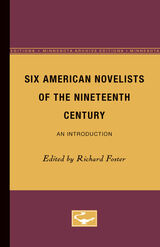 Six American Novelists of the Nineteenth Century: An Introduction
Richard Foster
University of Minnesota Press, 1968
Six American Novelists of the Nineteenth Century was first published in 1968.This volume, based on material from the University of Minnesota Pamphlets on American Writers, provides concise critical introductions to six nineteenth-century American novelists of major importance. The novelists discussed and the contributing authors are “James Fenimore Cooper” by Robert E. Spiller, “Nathaniel Hawthorne” by Hyatt H. Waggoner, “Herman Melville” by Leon Howard, “Mark Twain” by Lewis Leary, “William D. Howells” by William M. Gibson, and “Henry James” by Leon Edel. Biographical information about the writers is included with the critical discussions of their work. A selected bibliography for each novelists lists his works and critical and biographical writing about him.In his introduction to the volume Professor Foster offers a perspective view of the genius of nineteenth century American literature, a literature of innovative vision which he calls unique in its time. “Only one other national literature of the nineteenth century was so marked by intensity, idiosyncrasy, and the spirit of discovery as America’s - that of Russia,” Professor Foster writes. “If their typical postures in relation to ‘Europe’ were different, American and Russian writers of the nineteenth century nevertheless had in common something far more significant: the uniquely dramatic subject matter, bequeathed them by history, of a nation’s self-discovery and self-creation. This was epic material; and fiction, especially the novel, was the aptest means of imaginatively encompassing it.”
 Six American Poets from Emily Dickinson to the Present: An Introduction
Allen Tate
University of Minnesota Press, 1969
Six American Poets from Emily Dickinson to the Present was first published in 1969. Minnesota Archive Editions uses digital technology to make long-unavailable books once again accessible, and are published unaltered from the original University of Minnesota Press editions.This volume provides critical introductions to the work of Emily Dickinson, Hart Crane, Edwin Arlington Robinson, Conrad Aiken, Marianne Moore, and E.E. Cummings, six American poets all of whom were born in the nineteenth century and whose various life spans overlap to cover a period of nearly a century and a half, reaching into the present. In his introduction, Allen Tate discusses the significance of this group of poets and their influence on contemporary poetry. He points out that the overlap in their ages gives a somewhat longer perspective to modern American poetry than the rise of modernism around 1912 has led us to look for. “The impressive variety and versatility of contemporary American poetry, including its ‘modernist’ development,” he writes, “has been the achievement of men and women born before 1901.”In discussing the six poets introduced in this volume, Mr. Tate offers interesting comments on the place in literary history of a number of other poets including Ezra Pound, T.S. Eliot, Wallace Stevens, Robert Frost, Phelps Putnam, Mark Van Doren, John Hall Wheelock, and John Crowe Ransom.The introductions to the six poets are based on the material of six of the pamphlets in the series of University of Minnesota Pamphlets on American Writers: Emily Dickinson by Denis Donoghue, Hart Crane by Monroe K. Spears, Edwin Arlington Robinson by Louis Coxe, Conrad Aiken by Reuel Denney, Marianne Moore by Jean Garrigue, and E.E. Cummings by Eve Triem.
Six Days in Marapore: A Novel
Paul Scott
University of Chicago Press, 1953 A moving novel of the last days of British imperial rule in India
In this swiftly paced and lyrical novel about British expatriates at the time of Indian independence, Paul Scott grapples with the themes of race, possession, and history that dominate all four novels of his masterpiece, The Raj Quartet, especially The Jewel in the Crown. As always, Scott fills his book with vivid characters: the seductive, bigoted war widow; the sophisticated, wily Hindu politician; and the athletic young American who only gradually begins to understand the legacy of pain and hatred veiling the woman he has come to rescue. Set against the backdrop of a nation in violent transition—a climate of exhilaration and shifting loyalties—Six Days in Marapore unfolds amidst the possibility of reconciliation, freedom, and healing.
 Six Drawing Lessons
William Kentridge
Harvard University Press, 2014 “A beautiful and necessary book...as brisk as it is insightful.”—Choice
South Africa’s most celebrated artist on art, colonialism, and studio practice.
Over the last three decades, the visual artist William Kentridge has garnered international acclaim for his work across media including drawing, film, sculpture, printmaking, and theater. Rendered in stark contrasts of black and white, his images reflect his native South Africa and, like endlessly suggestive shadows, point to something more elemental as well. Based on the 2012 Charles Eliot Norton Lectures, Six Drawing Lessons is the most comprehensive collection available of Kentridge’s thoughts on art, art-making, and the studio.
Art, Kentridge says, is its own form of knowledge. It does not simply supplement the real world, and it cannot be purely understood in the rational terms of traditional academic disciplines. The studio is the crucial location for the creation of meaning: the place where linear thinking is abandoned and the material processes of the eye, the hand, the charcoal and paper become themselves the guides of creativity. Drawing has the potential to educate us about the most complex issues of our time. This is the real meaning of “drawing lessons.”
Incorporating elements of graphic design and ranging freely from discussions of Plato’s cave to the Enlightenment’s role in colonial oppression to the depiction of animals in art, Six Drawing Lessons is an illustration in print of its own thesis of how art creates knowledge. Foregrounding the very processes by which we see, Kentridge makes us more aware of the mechanisms—and deceptions—through which we construct meaning in the world.
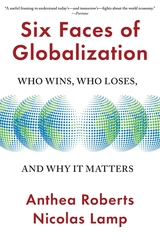 Six Faces of Globalization: Who Wins, Who Loses, and Why It Matters
Anthea Roberts and Nicolas Lamp
Harvard University Press, 2021 A Financial Times Best Book of the Year
A Fortune Best Book of the Year
A ProMarket Best Political Economy Book of the Year
An essential guide to the intractable public debates about the virtues and vices of economic globalization, cutting through the complexity to reveal the fault lines that divide us and the points of agreement that might bring us together.
Globalization has lifted millions out of poverty. Globalization is a weapon the rich use to exploit the poor. Globalization builds bridges across national boundaries. Globalization fuels the populism and great-power competition that is tearing the world apart.
When it comes to the politics of free trade and open borders, the camps are dug in, producing a kaleidoscope of claims and counterclaims, unlikely alliances, and unexpected foes. But what exactly are we fighting about? And how might we approach these issues more productively? Anthea Roberts and Nicolas Lamp cut through the confusion with an indispensable survey of the interests, logics, and ideologies driving these intractable debates, which lie at the heart of so much political dispute and decision making. The authors expertly guide us through six competing narratives about the virtues and vices of globalization: the old establishment view that globalization benefits everyone (win-win), the pessimistic belief that it threatens us all with pandemics and climate change (lose-lose), along with various rival accounts that focus on specific winners and losers, from China to America’s Rust Belt.
Instead of picking sides, Six Faces of Globalization gives all these positions their due, showing how each deploys sophisticated arguments and compelling evidence. Both globalization’s boosters and detractors will come away with their eyes opened. By isolating the fundamental value conflicts—growth versus sustainability, efficiency versus social stability—driving disagreement and showing where rival narratives converge, Roberts and Lamp provide a holistic framework for understanding current debates. In doing so, they showcase a more integrative way of thinking about complex problems.
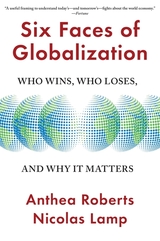 Six Faces of Globalization: Who Wins, Who Loses, and Why It Matters
Anthea Roberts and Nicolas Lamp
Harvard University Press A Financial Times Book of the Year
A Fortune Book of the Year
“This book compels us to change our position, move out of our comfort zone, and see the world differently.”—Branko Milanovic, author of Capitalism, Alone
“A very smart book…not just about globalization, but also about the power and importance of narrative…Highly recommended.”—Anne-Marie Slaughter, CEO, New America
“An indispensable guide to how and why many people have abandoned the old, time-tested ways of thinking about politics and the economy. This is the book the world needs to read now.”—Richard Baldwin, author of The Great Convergence
When it comes to the politics of free trade and open borders, the camps are clear, producing a kaleidoscope of claims and counterclaims. But what exactly are we fighting about? Anthea Roberts and Nicolas Lamp cut through the confusion and mudslinging with an indispensable survey of the interests, logics, and ideologies driving these seemingly intractable arguments.
Instead of picking sides, Six Faces of Globalization guides us through six competing narratives about the virtues and vices of globalization, giving each position its due and showing how each deploys sophisticated arguments and compelling evidence. Both globalization’s boosters and detractors will come away with their eyes opened. By isolating the fundamental value conflicts driving disagreement—growth versus sustainability, efficiency versus social stability—and showing where rival narratives converge, this book provides an invaluable framework for understanding ongoing debates and finding a way forward.
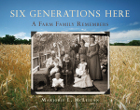 Six Generations Here: A Farm Family Remembers
Marjorie McLellan
Wisconsin Historical Society Press, 1997 Six Generations Here: A Farm Family Remembers
by Marjorie L. McLellan, with an essay by Kathleen Neils Conzen and a foreword by Dan Freas Discover the story of the Krueger family, as images of farm, family, and landscape reveal the struggles of rural immigrant life in Wisconsin. Drawing on snapshots, memorabilia, and interviews, Six Generations Here brings together the voices of the past and the present to create a distinctive portrait of Wisconsin farm life.
Leaving their German home in 1851, the Kruegers came to America for economic opportunity. But like other immigrant families, they struggled to make ends meet. Only with the whole family helping out did they manage to get their Watertown farm up and running. By the turn of the century, they had achieved a life of middle-class comfort in the midst of the rigors of dairy farming. Over the generations, the Kruegers incorporated their past traditions with the needs of the present, adapting to the challenges of rural American life and, when necessary, breaking from the past. Despite these changes, their commitment to hard work and family persisted, shaped their identity, and ensured their success.
Through photographs, documents, and family stories, the Kruegers left a deep history of who they were and how they sought to be remembered. Follow their family through six generations as they compile a rich and varied record of Wisconsin life.
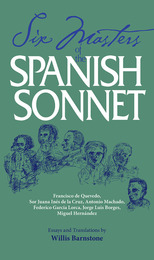 Six Masters of the Spanish Sonnet: Francisco de Quevedo, Sor Juana Ines de la Cruz, Antonio Machado, Federico Garcia Lorca, Jorge Luis Borges, Miguel Hernandez
Essays and Translations by Willis Barnstone
Southern Illinois University Press, 1997 With poems selected and translated by one of the preeminent translators of our day, this bilingual collection of 112 sonnets by six Spanish-language masters of the form ranges in time from the seventeenth to the twentieth centuries and includes the works of poets from Spanish America as well as poets native to Spain. Willis Barnstone’s selection of sonnets and the extensive historical and biographical background he supplies serve as a compelling survey of Spanish-language poetry that should be of interest both to lovers of poetry in general and to scholars of Spanish-language literature in particular. Following an introductory examination of the arrival of the sonnet in Spain and of that nation’s poetry up to Francisco de Quevedo, Barnstone takes up his six masters in chronological turn, preceding each with an essay that not only presents the sonneteer under discussion but also continues the carefully delineated history of Spanish-language poetry. Consistently engaging and informative and never dull or pedantic, these essays stand alone as appreciations—in the finest sense of that word—of some of the greatest poets ever to write. It is, however, Barnstone’s subtle, musical, clear, and concise translations that form the heart of this collection. As Barnstone himself says, "In many ways all my life has been some kind of preparation for this volume."
 Six Memos for the Next Millennium
Italo Calvino
Harvard University Press, 1988 Italo Calvino, one of the world's best storytellers, died on the eve of his departure for Harvard, where he was to deliver the Charles Eliot Norton Lectures in 1985-86. Reticent by nature, he was always reluctant to talk about himself, but he welcomed the opportunity to talk about the making of literature. In the process of devising his lectures--his wife recalls that they were an "obsession" for the last year of his life--he could not avoid mention of his own work, his methods, intentions, and hopes. This book, then, is Calvino's legacy to us: those universal values he pinpoints for future generations to cherish become the watchword for our appreciation of Calvino himself.
What about writing should be cherished? Calvino, in a wonderfully simple scheme, devotes one lecture (a memo for his reader) to each of five indispensable literary values. First there is "lightness" (leggerezza), and Calvino cites Lucretius, Ovid, Boccaccio, Cavalcanti, Leopardi, and Kundera--among others, as always--to show what he means: the gravity of existence has to be borne lightly if it is to be borne at all. There must be "quickness," a deftness in combining action (Mercury) with contemplation (Saturn). Next is "exactitude," precision and clarity of language. The fourth lecture is on "visibility," the visual imagination as an instrument for knowing the world and oneself. Then there is a tour de force on "multiplicity," where Calvino brilliantly describes the eccentrics of literature (Elaubert, Gadda, Musil, Perec, himself) and their attempt to convey the painful but exhilarating infinitude of possibilities open to humankind.
The sixth and final lecture - worked out but unwritten - was to be called "Consistency." Perhaps surprised at first, we are left to ponder how Calvino would have made that statement, and, as always with him, the pondering leads to more. With this book Calvino gives us the most eloquent, least defensive "defense of literature" scripted in our century - a fitting gift for the next millennium.
Esther Calvino has supervised the preparation of this book. She is Italo Calvino's Argentinian-born wife and a translator for several international organizations. Among Calvino's best-known works of fiction are Invisible Cities, Cosmicomics, The Baron in the Trees, if on a winter's night a traveler, and Mr. Palomar.
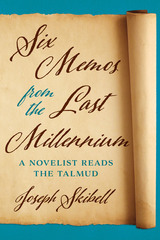 Six Memos from the Last Millennium: A Novelist Reads the Talmud
By Joseph Skibell
University of Texas Press, 2016 A thief-turned-saint, killed by an insult. A rabbi burning down his world in order to save it. A man who lost his sanity while trying to fathom the origin of the universe. A beautiful woman battling her brother’s and her husband’s egos to preserve their family. Stories such as these enliven the pages of the Talmud, the great repository of ancient wisdom that is one of the sacred texts of the Jewish people. Comprised of the Mishnah, the oral law of the Torah, and the Gemara, a multigenerational metacommentary on the Mishnah dating from between 3950 and 4235 (190 and 475 CE), the Talmud presents a formidable challenge to understand without scholarly training and study. But what if one approaches it as a collection of tales with surprising relevance for contemporary readers? In Six Memos from the Last Millennium, critically acclaimed novelist Joseph Skibell reads some of the Talmud’s tales with a storyteller’s insight, concentrating on the lives of the legendary rabbis depicted in its pages to uncover the wisdom they can still impart to our modern age. He unifies strands of stories that are scattered throughout the Talmud into coherent narratives or “memos,” which he then analyzes and interprets from his perspective as a novelist. In Skibell’s imaginative and personal readings, this sacred literature frequently defies our conventional notions of piety. Sometimes wild, rude, and even bawdy, these memos from the last millennium pursue a livable transcendence, a way of fusing the mundane hours of earthly life with a cosmic sense of holiness and wonder.
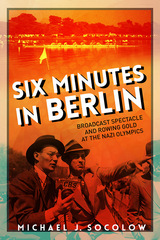 Six Minutes in Berlin: Broadcast Spectacle and Rowing Gold at the Nazi Olympics
Michael J Socolow
University of Illinois Press, 2016 The Berlin Olympics, August 14, 1936. German rowers, dominant at the Games, line up against America's top eight-oared crew. Hundreds of millions of listeners worldwide wait by their radios. Leni Riefenstahl prepares her cameramen. Grantland Rice looks past the 75,000 spectators crowding the riverbank. Above it all, the Nazi leadership, flush with the propaganda triumph the Olympics have given their New Germany, await a crowning victory they can broadcast to the world.
The Berlin Games matched cutting-edge communication technology with compelling sports narrative to draw the blueprint for all future sports broadcasting. A global audience--the largest cohort of humanity ever assembled--enjoyed the spectacle via radio. This still-novel medium offered a "liveness," a thrilling immediacy no other technology had ever matched. Michael J. Socolow's account moves from the era's technological innovations to the human drama of how the race changed the lives of nine young men. As he shows, the origins of global sports broadcasting can be found in this single, forgotten contest. In those origins we see the ways the presentation, consumption, and uses of sport changed forever.
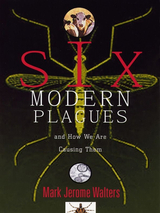 Six Modern Plagues and How We Are Causing Them
Mark Jerome Walters
Island Press, 2003 West Nile Virus—Mad Cow Disease—HIV/AIDS—Hantavirus—Lyme Disease ... and a new strain of Salmonella. Such modern epidemics have emerged over the past few decades as mysterious, yet significant risks to human health. These "plagues" are forcing us to modify our lifestyles in ways that minimize our chances of becoming a statistic in the latest tally of the afflicted.
In Six Modern Plagues, Mark Jerome Walters offers us the first book for the general reader that connects these emerging health risks and their ecological origins. Drawing on new research, interviews, and his own investigations, Mark Jerome Walters weaves together a compelling argument: that changes humans have made to the environment, from warming the climate to clearing the forests, have contributed to, if not caused a rising tide of diseases that are afflicting humans and many other species.
According to Mark Jerome Walters, humans are not always innocent bystanders to infectious disease. To the contrary, in the case of many modern epidemics, we are the instigators. Six Modern Plagues, a ground-breaking introduction to the connection between disease and environmental degradation should be read by all those interested in their health and the health of others.
 Six Modernist Moments in Poetry
David Young
University of Iowa Press, 2006 This study of six modernist poems by six different poets demonstrates the multiple facets of modernism. By showing not only what the poets and poems have in common but also by exploring their remarkable diversity, David Young reveals that the modernist narrative is really many narratives at once. Young believes that modernist poetic practice can best be demonstrated through close attention to particular poems. In this composite portrait of high modernist poetry, each of the book's six chapters reads one key modernist poem in the light of emergent modernism. The six poets discussed here--four writing in English, one in German, and one in Italian--emerge as distinctive practitioners of a common aesthetic, one that challenged received ideas and patterns of thinking from a variety of perspectives. “Making it new” was very much what modernism was all about, and these six examples demonstrate that fully.Along with the four poems written in English, the two non-English poems are presented and discussed in Young's own translations. He describes the provenance of each of the six poems, puts it in the context of its time and the poet's career, and surrounds it with references to other poems that are quoted generously. In this way, each poem is not only fully explicated but also presented as a kind of preeminent example representing other poems of its type.Combining close reading with contextual discussion, this book is a significant contribution to the fields of poetry and modernism. The impeccable scholarship is presented in an accessible, engaging manner. Written for general readers as well as for scholars, it will shed a new and timely light on some of the 20th century's finest poems.
Six O'Clock Mine Report
IRENE MCKINNEY
University of Pittsburgh Press, 1989 The speaker in Irene McKinney’s poems is most often alone, sitting at the side of a stream, or standing at her own chosen gravesite in the Appalachian mountains, and the meditations spoken out of this essential solitude are powerfully clear, witty, and wide-ranging in content and tone. The center sequence of poems in the Emily Dickinson persona explores and magnifies that great and enigmatic figure.
The poems are firmly grounded in concern for the ways in which the elemental powers are at work in the earth and in us: on the surface of our lives, and deeper in the underworld of the coalmines. In McKinney’s poems, the human world is never seen as separate from the natural one.
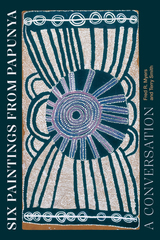 Six Paintings from Papunya: A Conversation
Fred R. Myers and Terry Smith
Duke University Press, 2024 In the early 1970s at Papunya, a remote settlement in the Central Australian desert, a group of Indigenous artists decided to communicate the sacred power of their traditional knowledge to the wider worlds beyond their own. Their exceptional, innovative efforts led to an outburst of creative energy across the continent that gave rise to the contemporary Aboriginal art movement that continues to this day. In their new book, anthropologist Fred Myers and art critic Terry Smith discuss six Papunya paintings featured in a 2022 exhibition in New York. They draw on several discourses that have developed around First Nations art—notably anthropology, art history, and curating as practiced by Indigenous and non-Indigenous interpreters. Their focus on six key paintings enables unusually close and intense insight into the works’ content and extraordinary innovation. Six Paintings from Papunya also includes a reflection by Indigenous curator and scholar Stephen Gilchrist, who considers the nature and significance of this rare transcultural conversation.
Six Plays for Children
By Aurand Harris
University of Texas Press, 1977 Six Plays for Children by Aurand Harris brings together a variety of dramatic forms that have enormously enriched the literature of children's theatre in this country and around the world. These works by this respected children's theatre playwright show Harris's great versatility: in the commedia dell'arte of Androcles and the Lion; the musical melodrama Rags to Riches; the sober, absurd comedy Punch and Judy; the realistic historical drama Steal Away Home; the farce Peck's Bad Boy; and the musical review Yankee Doodle. Each of the six plays exhibits a vital theatricality which is sure to win a child's attention and response. Editor Coleman A. Jennings traces Harris's development as a playwright in a biographical study based on interviews with Harris. This enlightening section treats Harris's philosophy and teaching methods, as well as his creative process.
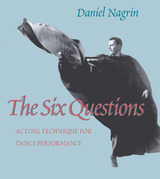 The Six Questions: Acting Technique For Dance Performance
Daniel Nagrin
University of Pittsburgh Press, 1997 In the late twenties, actors and directors of the Group Theatre, who were pioneering the use of Stanislavski's teachings, saw the value of teaching ballet and the emerging modern dance. Actors now routinely learn dance, but dancers rarely study acting. In The Six Questions, Nagrin maintains that a command of acting techniques allows the dancer to couple the passion of a body in motion with the heart and mind of the dancer.
In five parts, the book first examines the personal essentials demanded by dance. The second part looks at the pitfalls inherent in the act of performing from vanity to self-hatred. The third part, the core of the book, poses six questions: Who? is doing what? to whom? where and when? and why? and against what obstacle? In the fourth part, Nagrin looks at the tools for working on the role, and the fifth part enters into the very act of performing. All of the work is handled in terms of movement alone: no dialogue or scenes from plays are used.
The Six Questions is a companion piece to Nagrin's other works, How To Dance Forever, and Dance and the Specific Image: Improvisation. Together they present an invaluable teaching and learning tool for anyone in love with dance.
Six Turkish Filmmakers
Laurence Raw
University of Wisconsin Press, 2017 Examining the vanguard of New Turkish Cinema, Laurence Raw shows how these films reveal the effects of profound socioeconomic change on ordinary people in contemporary Turkey.
In analysis of and personal interviews with Dervis Zaim, Zeki Demirkubuz, Semih Kaplanoglu, Çagan Irmak, Tolga Örnek, and Palme d'Or winner Nuri Bilge Ceylan, Raw draws connections with Turkish theater, art, sculpture, literature, poetry, philosophy, and international cinema. A native of England and a twenty-five-year resident of Turkey, Raw interleaves his film discussion with thoughtful commentary on nationalism, gender, personal identity, and cultural pluralism.
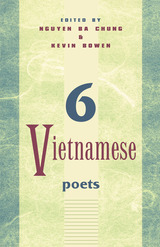 Six Vietnamese Poets: Bilingual Edition
Edited by Kevin Bowen and Nguyen Ba Chung
Northwestern University Press, 2001 Six Vietnamese Poets brings together for the first time the works of six writers, three women and three men, who came of age during the American War in Vietnam. In their verse, contemporary readers discover the richness and diversity of Vietnamese life and literature from a bold range of poetic styles, from free verse to romantic lyric to traditional classic Vietnamese forms. This bilingual edition features poets from North and South, men and women, combat soldiers and poet-soldiers writing of life in Vietnam through the turbulent final four decades of the twentieth century. Speaking to the Heart After a long night up writing poems,
a streak of sunlight leapt into my room.
I ran to the yard,
running as if I were a child,
footprints breaking the earth's first dew,
chest brushing softly the short grass.
Earth and sky seeped into me like wine.
Startled,
I saw my heart in the shape of a ploughshare<
resting on the earth's shoulder,
the heart thumping, steadily ploughing into time. —Lam Thi My Da
Six Walks in the Fictional Woods
Umberto Eco
Harvard University Press, 1998 In Six Walks in the Fictional Woods Umberto Eco shares with us his Secret Life as a reader—his love for MAD magazine, for Scarlett O'Hara, for the nineteenth-century French novelist Nerval's Sylvie, for Little Red Riding Hood, Agatha Christie, Agent 007 and all his ladies. We see, hear, and feel Umberto Eco, the passionate reader who has gotten lost over and over again in the woods, loved it, and come back to tell the tale, The Tale of Tales. Eco tells us how fiction works, and he also tells us why we love fiction so much. This is no deconstructionist ripping the veil off the Wizard of Oz to reveal his paltry tricks, but the Wizard of Art himself inviting us to join him up at his level, the Sorcerer inviting us to become his apprentice.
 Six Walks in the Fictional Woods
Umberto Eco
Harvard University Press, 2025 “Erudite, wide-ranging, and slyly humorous.”
—The Atlantic
One of the great novelists and public intellectuals of our time gives a master class on the philosophy of fiction.
Umberto Eco was fond of pointing out that all writing is narrative. He published his famed debut novel The Name of the Rose when he was forty-eight years old, yet he believed that everything he had written to that point—from treatises on semiotics to essays on mass culture—took the form of a story. To Eco, scholarship, much like fiction, was shaped by narrative. It was the stuff of life itself.
Six Walks in the Fictional Woods, a collection of essays based on Eco’s 1992–1993 Norton Lectures at Harvard, illuminates fiction’s porous boundaries—in particular, the myriad ways that literary works conscript readers’ experiences and expectations. Fiction, says Eco, can offer metaphysical comfort by appealing to our desire for a smaller, more legible world, one that gives a definitive answer to the question of “whodunnit?” But it also makes demands of us, presupposing a model reader who possesses the cultural knowledge necessary to interpret the text, as well as a willingness to follow the never-quite-specified rules of the literary game.
Whether he is dissecting grammatical ambiguities in Gérard de Nerval’s nineteenth-century romantic masterpiece Sylvie, studying the rhythms of Ian Fleming’s James Bond novels, or tracing the web of fraud and misattribution that produced the antisemitic conspiracy theory of The Protocols of the Elders of Zion, this is Eco at his very best: intellectually omnivorous, endlessly fascinated by hoaxes, and always an adept navigator of the narrative forests that surround us.
 Six Women Who Shaped What Americans Eat: Food Choice in an Age of Abundance
Michelle Mart, Foreword by Mark D. Hersey
University of Alabama Press, 2025 How six groundbreaking women redefined American food—what we eat, how we eat it, and why it matters. From wartime nutrition science to modern food activism, Six Women Who Shaped What Americans Eat examines the pivotal roles six women played in rewriting the rules of American cuisine. Michelle Mart offers a rich and accessible narrative that connects dietary trends, food marketing, and public health movements to the voices of the women who helped drive them. Part one highlights Hazel Stiebeling’s development of dietary guidelines and RDAs, Poppy Cannon’s promotion of processed foods for convenience and gourmet meals, and Julia Child’s introduction of French cuisine with an emphasis on fresh ingredients and culinary techniques. Part two shifts the focus to women who challenged the food system itself: Frances Moore Lappé’s advocacy for vegetarianism and sustainable practices, Marion Nestle’s exposure of food corporations’ manipulative practices, and Alice Waters’s emphasis on locally sourced, organic ingredients and sustainable food systems. Thoughtful and timely, this book explores how culture, politics, and personal vision collided in the kitchens and campaigns of six food pioneers—leaving a lasting imprint on what America eats today.
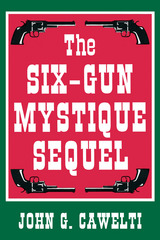 The Six-Gun Mystique Sequel
John G. Cawelti
University of Wisconsin Press, 1999 The Six-Gun Mystique Sequel is a revised and considerably expanded edition of The Six-Gun Mystique, a pioneering study of the Western as a popular genre that has been widely influential since its original publication in 1970.
In this expanded version, Cawelti revises his analysis of the structural characteristics of the Western novel and film, synthesizing much of the rich discussion of the Western genre that has appeared since The Six-Gun Mystique's original publication. To this structural analysis he adds a new account of the genre's history and its relationship to the myths of the West that have played such an influential role in American history. The Six-Gun Mystique Sequel concludes with an exploration of the continuing influence of Western themes and symbols on many aspects of postmodern American culture, and an assessment of the critical tradition that has developed around the Western genre. The appendices of the book are also revised and expanded to include useful lists of the most important Western novels and films, as well as the best critical and historical studies of different aspects of the genre.
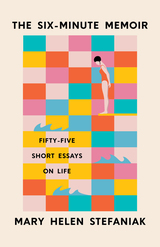 The Six-Minute Memoir: Fifty-Five Short Essays on Life
Mary Helen Stefaniak
University of Iowa Press, 2022 This collection of short essays delivers more joy than many books twice its size. Culled from two decades’ worth of Mary Helen Stefaniak’s “Alive and Well” column in the Iowa Source, each essay invites readers into the ordinary life of a woman “with a family and friends and a job . . . and a series of cats and a history living in one old house after another at the turn of the twenty-first century in the middle of the Middle West.” One great aunt presides over nineteen acres of pecan grove profitably strewn with junk. A borrowed hammer rings with the sound of immortality. Famous poets pipe up where you least expect them. Living and dying are found to be two sides of the same remarkable coin.
What’s more, writing prompts at the end of the book invite readers to search their own lives for such moments—the kind that could be forgotten but instead are turned, by the gift of perspective and perfectly chosen detail, into treasure. The Six-Minute Memoir encourages people to tell their own stories even if they think they don’t have the kind of story that belongs in a memoir.
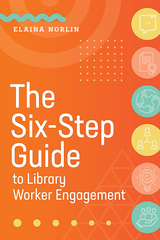 The Six-Step Guide to Library Worker Engagement
Elaina Norlin
American Library Association, 2021 Gallup’s 2019 State of the American Workplace Report found that 70 percent of employees are disengaged at work. Why is worker engagement so important? Engaged workers lead to engaged libraries — vibrant institutions that nurture their workers’ dedication, creativity, and innovation so they can serve their communities most effectively. This guide walks library managers and administrators through concrete steps to change their organization’s culture so that it fosters worker engagement, using first-hand accounts from library staff to illustrate both successes and failures. Readers will discover - why libraries often fall short at hiring good leadership and ways to develop better recruitment strategies moving forward;
- how lack of trust pushes workplace culture towards incivility, hostility, and lower morale, and what library leaders can do to rebuild it;
- methods for using recognition and praise as tools for sustaining a positive work environment;
- the rationale for eliminating annual performance reviews in favor of less formal one-on-one conversations and “just in time” continuous feedback;
- the secrets behind high performing teams, strategies to support dysfunctional teams, and tips on how to develop remote teamwork; and
- why viewing diversity, equity, and inclusion (DEI) as separate from workplace culture is counterproductive, since it is actually the positive result of a strong foundation, with advice on combating the factors that contribute to low retention rates of BIPOC librarians.
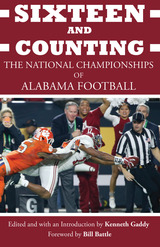 Sixteen and Counting: The National Championships of Alabama Football
Edited and with an Introduction by Kenneth Gaddy; Foreword by Bill Battle
University of Alabama Press, 2017 Dramatic accounts of every University of Alabama National Championship football season recounted by noted sports writers, players, and Alabamians.
Dating back to 1925, when Wallace Wade coached the Crimson Tide to an undefeated season and earned a spot in the Rose Bowl, the driving goal of every University of Alabama football season has been a national championship. A winning team surfaced that very next year, when Hoyt “Wu” Winslett’s squad sealed the national championship at the Rose Bowl for a second time. Winning seasons and bowl games culminating in the coveted crown followed again in 1930, 1934, 1941, 1961, 1964, 1965, 1973, 1978, 1979, 1992, 2009, 2011, 2012, and 2015—more championships than any other college team in the nation.
Sixteen and Counting features a chapter highlighting each of these championship seasons and collects the legendary stories of many of the outstanding coaches and players on the University of Alabama’s championship teams. College football legends such as Wallace Wade, Wu Winslett, Johnny Mack Brown, Pooley Herbert, Frank Thomas, Dixie Howell, Don Hutson, Jimmy Nelson, Holt Rast, Pat Trammel, Sam Bailey, Lee Roy Jordan, Harry Gilmer, Bill Lee, Ken Stabler, Joe Namath, Gary Rutledge, Randy Billingsley, Barry Krauss, Clem Gryska, Gene Stallings, Paul “Bear” Bryant, and, of course, Nick Saban all make prominent appearances.
A seventeenth chapter is included that looks at the uncrowned teams commonly referred to as “the other five,” who were considered national champions by at least one national ranking service at the end of the season. Every glorious milestone and high point in Alabama football history is included here: “Mama called,” the wishbone formation, “The Goal Line Stand,” the Million Dollar Band, the coaching tower, the Davis kicking dynasty, the Notre Dame box, Coach of the Year, Team of the Decade, and two Heisman trophy winners.
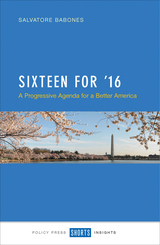 Sixteen for '16: A Progressive Agenda for a Better America
Salvatore Babones
Bristol University Press, 2015 The election of the next US president is upon us, and with established politicians such as Hillary Clinton and Jeb Bush poised to be key players, the campaigns seem destined to be as contentious, as ugly, and as seemingly removed from the reality of American lives as ever. In Sixteen for ’16, Salvatore Babones takes the politics out of policy, bringing the debate back to the issues that matter in a new, unified agenda for the 2016 elections.
Decades of destructive social and economic policies have devastated poor, working, and middle-class American communities. It is now clear that harsh austerity does not bring prosperity, that the wealthy have no intention of seeing their wealth trickle down, and that each generation is no longer better off than the ones that came before. But what to do? In this progressive election field manual, Babones outlines sixteen core principles to combat these entrenched problems: America needs jobs, infrastructure, a rededication to public education, universal healthcare, higher taxes on higher incomes, a more secure Social Security, an end to the rule of the bankers, stronger unions, a living minimum wage, better working conditions, an end to the prison state, secure reproductive rights, voter equality, a more moral foreign policy, a more humane refugee policy, and action on global warming.
A clear, concise manifesto supported by hard data, Sixteen for ’16 makes a compelling case for each of these ambitious positions. And as ambitious as Babones’s suggested policies are, they represent a beginning, not an end. The progressive movement is on the march in America, and this accessible book charts a realistic path toward a destination all can believe in: a better tomorrow.
Sixteen Modern American Authors: A Survey of Research and Criticism
Jackson R. Bryer, ed.
Duke University Press, 1973 “Students of modern American literature have for some years turned to Fifteen Modern American Authors (1969) as an indispensable guide to significant scholarship and criticism about twentieth-century American writers. In its new form—Sixteenth Modern American Authors—it will continue to be indispensable. If it is not a desk-book for all Americanists, it is a book to be kept in the forefront of the bibliographical compartment of their brains.”—American Studies
Sixteen Modern American Authors: A Survey of Research and Criticism since 1972
Jackson R. Bryer, ed.
Duke University Press, 1989 Praise for the earlier edition:
“Students of modern American literature have for some years turned to Fifteen Modern American Authors (1969) as an indispensable guide to significant scholarship and criticism about twentieth-century American writers. In its new form—Sixteenth Modern American Authors—it will continue to be indispensable. If it is not a desk-book for all Americanists, it is a book to be kept in the forefront of the bibliographical compartment of their brains.”—American Studies
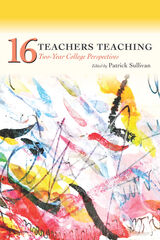 Sixteen Teachers Teaching: Two-Year College Perspectives
Patrick Sullivan
Utah State University Press, 2020 Sixteen Teachers Teaching is a warmly personal, full-access tour into the classrooms and teaching practices of sixteen distinguished two-year college English professors. Approximately half of all basic writing and first-year composition classes are now taught at two-year colleges, so the perspectives of English faculty who teach at these institutions are particularly valuable for our profession. This book shows us how a group of acclaimed teachers put together their classes, design reading and writing assignments, and theorize their work as writing instructors.
All of these teachers have spent their careers teaching multiple sections of writing classes each semester or term, so this book presents readers with an impressive—and perhaps unprecedented—abundance of pedagogical expertise, teaching knowledge, and classroom experience. Sixteen Teachers Teaching is a book filled with joyfulness, wisdom, and pragmatic advice. It has been designed to be a source of inspiration for high school and college English teachers as they go about their daily work in the classroom.
Contributors: Peter Adams, Jeff Andelora, Helane Adams Androne, Taiyon J. Coleman, Renee DeLong, Kathleen Sheerin DeVore, Jamey Gallagher, Shannon Gibney, Joanne Baird Giordano, Brett Griffiths, Holly Hassel, Darin Jensen, Jeff Klausman, Michael C. Kuhne, Hope Parisi, and Howard Tinberg
The Sixteenth Century Journal, volume 54 number 1-2 (Spring 2023)
The University of Chicago Press
University of Chicago Press Journals, 2023 This is volume 54 issue 1-2 of The Sixteenth Century Journal. The Sixteenth Century Journal (SCJ) publishes research and inquiry related to the sixteenth century broadly defined (1450-1650) in all fields and all world regions. The international readership and authorship of the SCJ include leaders in their fields as well as early career scholars. As its subtitle, The Journal of Early Modern Studies, indicates, the SCJ is an interdisciplinary journal, with articles in history, art history, literature, religious studies, gender studies, the history of science, music, material culture, and many other fields.
The Sixteenth Century Journal, volume 54 number 3-4 (Fall 2023)
The University of Chicago Press
University of Chicago Press Journals, 2023 This is volume 54 issue 3-4 of The Sixteenth Century Journal. The Sixteenth Century Journal (SCJ) publishes research and inquiry related to the sixteenth century broadly defined (1450-1650) in all fields and all world regions. The international readership and authorship of the SCJ include leaders in their fields as well as early career scholars. As its subtitle, The Journal of Early Modern Studies, indicates, the SCJ is an interdisciplinary journal, with articles in history, art history, literature, religious studies, gender studies, the history of science, music, material culture, and many other fields.
The Sixteenth Century Journal, volume 55 number 1-2 (Spring 2024)
The University of Chicago Press
University of Chicago Press Journals, 2024 This is volume 55 issue 1-2 of The Sixteenth Century Journal. The Sixteenth Century Journal (SCJ) publishes research and inquiry related to the sixteenth century broadly defined (1450-1650) in all fields and all world regions. The international readership and authorship of the SCJ include leaders in their fields as well as early career scholars. As its subtitle, The Journal of Early Modern Studies, indicates, the SCJ is an interdisciplinary journal, with articles in history, art history, literature, religious studies, gender studies, the history of science, music, material culture, and many other fields.
The Sixteenth Century Journal, volume 55 number 3-4 (Fall 2024)
The University of Chicago Press
University of Chicago Press Journals, 2024 This is volume 55 issue 3-4 of The Sixteenth Century Journal. The Sixteenth Century Journal (SCJ) publishes research and inquiry related to the sixteenth century broadly defined (1450-1650) in all fields and all world regions. The international readership and authorship of the SCJ include leaders in their fields as well as early career scholars. As its subtitle, The Journal of Early Modern Studies, indicates, the SCJ is an interdisciplinary journal, with articles in history, art history, literature, religious studies, gender studies, the history of science, music, material culture, and many other fields.
The Sixteenth Century Journal, volume 56 number 1 (Spring 2025)
The University of Chicago Press
University of Chicago Press Journals, 2025 This is volume 56 issue 1 of The Sixteenth Century Journal. The Sixteenth Century Journal (SCJ) publishes research and inquiry related to the sixteenth century broadly defined (1450-1650) in all fields and all world regions. The international readership and authorship of the SCJ include leaders in their fields as well as early career scholars. As its subtitle, The Journal of Early Modern Studies, indicates, the SCJ is an interdisciplinary journal, with articles in history, art history, literature, religious studies, gender studies, the history of science, music, material culture, and many other fields.
The Sixteenth Century Journal, volume 56 number 2 (Summer 2025)
The University of Chicago Press
University of Chicago Press Journals, 2025 This is volume 56 issue 2 of The Sixteenth Century Journal. The Sixteenth Century Journal (SCJ) publishes research and inquiry related to the sixteenth century broadly defined (1450-1650) in all fields and all world regions. The international readership and authorship of the SCJ include leaders in their fields as well as early career scholars. As its subtitle, The Journal of Early Modern Studies, indicates, the SCJ is an interdisciplinary journal, with articles in history, art history, literature, religious studies, gender studies, the history of science, music, material culture, and many other fields.
The Sixteenth Century Journal, volume 56 number 3 (Fall 2025)
The University of Chicago Press
University of Chicago Press Journals, 2025 This is volume 56 issue 3 of The Sixteenth Century Journal. The Sixteenth Century Journal (SCJ) publishes research and inquiry related to the sixteenth century broadly defined (1450-1650) in all fields and all world regions. The international readership and authorship of the SCJ include leaders in their fields as well as early career scholars. As its subtitle, The Journal of Early Modern Studies, indicates, the SCJ is an interdisciplinary journal, with articles in history, art history, literature, religious studies, gender studies, the history of science, music, material culture, and many other fields.
Sixteenth Century Maiolica Pottery in the Valley of Mexico
Florence C. Lister and Robert H. Lister
University of Arizona Press, 1982 The Anthropological Papers of the University of Arizona is a peer-reviewed monograph series sponsored by the School of Anthropology. Established in 1959, the series publishes archaeological and ethnographic papers that use contemporary method and theory to investigate problems of anthropological importance in the southwestern United States, Mexico, and related areas.
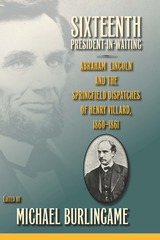 Sixteenth President-in-Waiting: Abraham Lincoln and the Springfield Dispatches of Henry Villard, 1860–1861
Edited by Michael Burlingame
Southern Illinois University Press, 2018 Winner, ISHS Best of Illinois History Award, 2019
Between Abraham Lincoln’s election in November 1860 and his departure for Washington three months later, journalist Henry Villard sent scores of dispatches from Springfield, Illinois, to various newspapers describing the president-elect’s doings, quoting or paraphrasing his statements, chronicling events in the Illinois capital, and analyzing the city’s mood. With Sixteenth President-in-Waiting Michael Burlingame has collected all of these dispatches in one insightful and informative volume.
Best known as a successful nineteenth-century railroad promoter and financier, German-born Henry Villard (1835–1900) was also among the most conscientious and able journalists of the 1860s. The dispatches gathered in this volume constitute the most intensive journalistic coverage that Lincoln ever received, for Villard filed stories from the Illinois capital almost daily to the New York Herald, slightly less often to the Cincinnati Commercial, and occasionally to the San Francisco Bulletin.
Lincoln welcomed Villard and encouraged him to ask questions, as he was the only full-time correspondent for out-of-town papers. He spoke with inside sources, such as Lincoln’s private secretaries John G. Nicolay and John Hay, devoted friends like Jesse K. Dubois and Stephen T. Logan, political leaders like Governor Richard Yates, and journalists like William M. Springer and Robert R. Hitt.
Villard boasted that he did Lincoln a service by scaring off would-be office seekers who, fearing to see their names published in newspapers, gave up plans to visit the Illinois capital to badger the president-elect. Villard may have done an even greater service by publicizing Lincoln’s views on the secession crisis.
His little-known coverage of the 1858 Lincoln-Douglas Senate race, translated from the German for the first time, is included as an appendix. At the time Villard was an ardent Douglas supporter, and his reports criticized Lincoln.
Not only informative but also highly readable, Villard’s vivid descriptions of Lincoln’s appearance, daily routine, and visitors, combined with fresh information about Springfielders, state political leaders, and the capital, constitute an invaluable resource.
 Sixteenth Street NW: Washington, DC's Avenue of Ambitions
John DeFerrari and Douglas Peter Sefton
Georgetown University Press, 2023 A richly illustrated architectural “biography” of one of DC’s most important boulevards Sixteenth Street NW in Washington, DC, has been called the Avenue of the Presidents, Executive Avenue, and the Avenue of Churches. From the front door of the White House, this north-south artery runs through the middle of the District and extends just past its border with Maryland. The street is as central to the cityscape as it is to DC’s history and culture. In Sixteenth Street NW: Washington, DC’s Avenue of Ambitions, John DeFerrari and Douglas Peter Sefton depict the social and architectural history of the street and immediate neighborhoods, inviting readers to explore how the push and pull between ordinary Washingtonians and powerful elites has shaped the corridor—and the city. This highly illustrated book features notable buildings along Sixteenth Street and recounts colorful stories of those who lived, worked, and worshipped there. Maps offer readers an opportunity to create self-guided tours of the places and people that have defined this main thoroughfare over time. What readers will find is that both then and now, Sixteenth Street NW has been shaped by a diverse array of people and communities. The street, and the book, feature a range of sites—from Black Lives Matter Plaza to the White House, from mansions and rowhomes to apartment buildings, from Meridian Hill (Malcolm X) Park with its drum circles to Rock Creek Park with its tennis tournaments, and from hotels to houses of worship. Sixteenth Street, NW reveals a cross section of Washington, DC, that shows the vibrant makeup of our nation’s capital.
 Sixteenth-Century Polyphony: A Basis for the Study of Counterpoint
Arthur Tillman Merritt
Harvard University Press Interest in counterpoint suffered greatly during the latter part of the eighteenth century and all through the nineteenth. At the present time, however, many of our foremost composers are doing their best compositions in this field. They have naturally not reverted to the exact type of counterpoint used during the highest period of its development in the sixteenth century; but the point of view is strikingly similar, namely, that one must look very carefully to one's strands of melody, and independence of rhythm is the thing that possibly counts most. The majority of composers and teachers now agree that for the beginner the study of sixteenth century technique is best. Professor Merritt therefore starts with Gregorian chant, which offers the finest examples of single excellent lines. Rather than make arbitrary rules as the older writers did, he simply tries to get the student into contact with the music and to explain or point out the most important aspects of it. His book is valuable not only as a systematic study of counterpoint but as an introduction to the music of the sixteenth century.
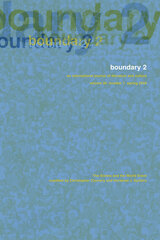 The Sixties and the World Event, Volume 36
Christopher Connery and Hortense Spillers, eds.
Duke University Press This special issue of boundary 2 revisits the 1960s through a global and multidisciplinary lens. It treats the decade as a global historical event, comprising decolonization, liberation, revolution, and movements against various establishments. Engaging questions of history and temporality, this issue illustrates that continued exploration and consideration of the 1960s around the world are crucial to a critical engagement with the present. Contributors to this issue represent a wide range of disciplines, from Latin American studies and sociology to political theory and literary criticism. They bring a global perspective to the social and political legacy of the 1960s, touching on the Caribbean, Latin America, the former USSR, China, and France, as well as the United States. One contributor presents a reexamination of Latin American armed struggles in the 1960s that foregrounds the relatively positive influence of these struggles on present-day Latin American society and politics. Another contributor translates a seminal essay on José Martí written by one of Cuba’s foremost intellectuals in the mid-1960s, when the course of the Cuban revolution was still uncertain. Yet another contributor considers the forces that have sought to neutralize the struggles and negate the gains of the African American liberation movement in the 1960s American South. Contributors. John Beverley, Anthony Bogues, Christopher Connery, Roberto Fernández Retamar, Wlad Godzich, Boris Kagarlitsky, Nina Power, Hortense Spillers, Silvia D. Spitta, Alberto Toscano
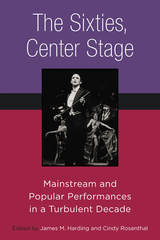 The Sixties, Center Stage: Mainstream and Popular Performances in a Turbulent Decade
Edited by James M. Harding and Cindy Rosenthal
University of Michigan Press, 2017 The Sixties, Center Stage offers rich insights into the innovative and provocative political underpinnings of mainstream and popular performances in the 1960s. While much critical attention has been focused on experimental and radical theater of the period, the essays confirm that mainstream performances not only merit more scholarly attention than they have received, but through serious examination provide an important key to understanding the 1960s as a period.
The introduction provides a broad overview of the social, political, and cultural contexts of artistic practices in mainstream theater from the mid-fifties to mid-seventies. Readers will find detailed examinations of the mainstream’s surprising attention to craft and innovation; to the rich exchange between European and American theatres; to the rise of regional theaters; and finally, to popular cultural performances that pushed the conceptual boundaries of mainstream institutions. The book looks afresh at productions of Hair, Cabaret, Raisin in the Sun, and Fiddler on the Roof, as well as German theater, and performances outside the Democratic National Convention of 1968.
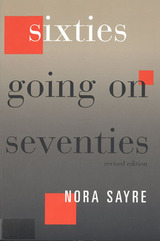 Sixties Going on Seventies
Sayre, Nora
Rutgers University Press, 1996 Nora Sayre guides us through our nation’s transformation during an explosive decade. She explores the landscapes of the era--student strikes at Harvard and Yale, anti-war veterans, John Birchers, Timothy Leary, Yippies and Aquarians, utopias gone wrong, George McGovern, Spiro Agnew, Richard Nixon, George Wallace, black anger in Watts, the media at work, policemen in college, off-off Broadway, the 1972 Democratic and Republican Conventions, and the rebirth of feminism. Sixties Going on Seventies, nominated for a 1974 National Book Award, is also a chronicle of the shattering of cities, the problems of the left, the momentum of the right--and above all, the authentic voices of the people concerned. Sayre recorded all of these events and personalities in exhilarating prose; her witty observations are remarkably fresh today.
Now back in print, this revised edition contains the best of the original volume and brings the commentary up to date, allowing us to view the period with hindsight from the nineties.
Sixties Rock: Garage, Psychedelic, and Other Satisfactions
Michael Hicks
University of Illinois Press, 1999 Unlike their rock 'n' roll predecessors, many rock musicians of the mid-sixties came to consider themselves as artists--self-consciously presenting themselves as creators of a new sonic medium.
Sixties Rock offers a provocative look at these artists and their innovations in two pivotal rock genres: garage rock and psychedelic music. Delving into everything from harmony to hardware, Michael Hicks shows what makes this music tick and what made it unique in its time. Looking at bands like the Doors, the Rolling Stones, the Yardbirds, and Love, Hicks puts legends and flashes in the pan alike through a rigorous analysis that places their music within rock history while exploring its place in the oft-swirling contexts of the time.
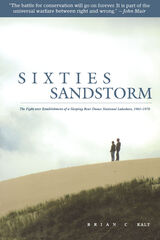 Sixties Sandstorm: The Fight over Establishment of a Sleeping Bear Dunes National Lakeshore, 1961-1970
Brian C. Kalt
Michigan State University Press, 2001 In 1961, Senator Philip Hart of Michigan introduced legislation to add Michigan's Sleeping Bear Dunes and 77,000 surrounding acres to America's National Park system. The 1,600 people who lived in the proposed park area feared not only that the federal government would confiscate their homes, but that a wave of tourists would ensue and destroy their beloved and fragile lands. In response, they organized citizen action groups and fought a nine-year battle against the legislation.
Sixties Sandstorm is not a book about dunes as much as it is a book about people and their government. It chronicles the public meetings, bills, protests, and congressional interactions that led to the signing of the Sleeping Bear Sand Dunes Act in 1970. The Dunes park fight is a case study of the politics, the legislative process, citizen response to the expanded role of government in the 1960s, and the rise of the environmental movement in America during that decade. Since Hart's legislation was made law, millions of Americans have traveled to the Sleeping Bear Sand Dunes National Lakeshore. Few imagine what the area would look like today if not for the efforts of people like Senator Hart. On the other hand, few appreciate the sacrifice of the landowners who-not always willingly-gave up their property in this place where, as one resident put it, "stars are closer to the earth than anywhere else in the world."
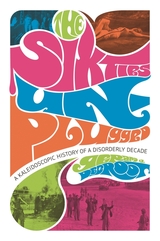 The Sixties Unplugged: A Kaleidoscopic History of a Disorderly Decade
Gerard J. DeGroot
Harvard University Press, 2009 “If you remember the Sixties,” quipped Robin Williams, “you weren’t there.” That was, of course, an oblique reference to the mind-bending drugs that clouded perception—yet time has proven an equally effective hallucinogen. This book revisits the Sixties we forgot or somehow failed to witness. In a kaleidoscopic global tour of the decade, Gerard DeGroot reminds us that the “Ballad of the Green Beret” outsold “Give Peace a Chance,” that the Students for a Democratic Society were outnumbered by Young Americans for Freedom, that revolution was always a pipe dream, and that the Sixties belong to Reagan and de Gaulle more than to Kennedy and Dubcek.
The Sixties Unplugged shows how opportunity was squandered, and why nostalgia for the decade has obscured sordidness and futility. DeGroot returns us to a time in which idealism, tolerance, and creativity gave way to cynicism, chauvinism, and materialism. He presents the Sixties as a drama acted out on stages around the world, a theater of the absurd in which China’s Cultural Revolution proved to be the worst atrocity of the twentieth century, the Six-Day War a disaster for every nation in the Middle East, and a million slaughtered Indonesians martyrs to greed.
The Sixties Unplugged restores to an era the prevalent disorder and inconvenient truths that longing, wistfulness, and distance have obscured. In an impressionistic journey through a tumultuous decade, DeGroot offers an object lesson in the distortions nostalgia can create as it strives to impose order on memory and value on mayhem.
Sixty Years of Journalism
Smith
University of Wisconsin Press, 1985 The late James M. Cain was a newspaperman, playwright, and novelist. Although best known for his controversial novels (The Postman Always Rings Twice, Double Indemnity, Mildred Pierce, Serenade, The Butterfly, and Past All Dishonor), Cain always considered himself a journalist, a "newpaperman who wrote yarns on the side." The book includes some of Cain's best articles and essays. The material is sometimes serious, sometimes humorous and provides a unique look at 60 years of history.
 Sixty Years' War for the Great Lakes, 1754-1814
David Curtis Skaggs
Michigan State University Press, 2001 The Sixty Years' War for the Great Lakes contains twenty essays concerning not only military and naval operations, but also the political, economic, social, and cultural interactions of individuals and groups during the struggle to control the great freshwater lakes and rivers between the Ohio Valley and the Canadian Shield. Contributing scholars represent a wide variety of disciplines and institutional affiliations from the United States, Canada, and Great Britain.
Collectively, these important essays delineate the common thread, weaving together the series of wars for the North American heartland that stretched from 1754 to 1814. The war for the Great Lakes was not merely a sideshow in a broader, worldwide struggle for empire, independence, self-determination, and territory. Rather, it was a single war, a regional conflict waged to establish hegemony within the area, forcing interactions that divided the Great Lakes nationally and ethnically for the two centuries that followed.
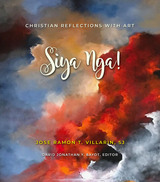 Siya Nga!: Christian Reflections with Art
Jose Ramon T. Villarin
Sussex Academic Press, 2022 “Siya Nga!” is a Filipino expression of wonder and, thus, of openness to possibilities. It is an expression of epiphany and eureka! This book offers the readers short reflections by Jose Ramon T. Villarin, SJ on fifty-two “familiar” terms in the Christian faith — terms that the author and editor deem significant in the life and living of those who share the Christian faith, either by religious affiliation or by spiritual aspiration.
The reflections are elucidated by images of eighty artworks by fifty-four Filipino artists. The reflections seek to make these terms of faith —Incarnation, Trinity, Word, Freedom, even Christmas, for example — once again unfamiliar. In that way, and in Fr. Villarin's own words, “the newness of God will never grow old, and the bigness of his love ... will never grow small.” Reflection, etymologically speaking, means “bending back.” The bending back of perspectives allows readers to dwell once more on Christian wonder, openness, possibility, and epiphany.
The Size of the Universe
Joseph Cardinale
University of Alabama Press, 2010 The landscape of this novel in stories—Joseph Cardinale’s first book-length work of fiction—is as familiar as childhood yet beguilingly surreal. The question of whether or not the child in the first fiction and the man in the last story are the same person—and whether any person is the same from one moment to the next—is perhaps the book’s main question. In prose as spare as it is meticulous, The Size of the Universe conjures an elegant labyrinth of time, space, and memory, in which a wavering self, a self on the verge of becoming nothing, seeks a safe haven from the throes of near-religious ecstasy. It is a debut work that is inviting, perplexing, and bold.
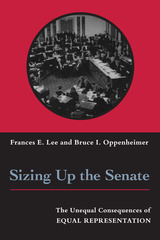 Sizing Up the Senate: The Unequal Consequences of Equal Representation
Frances E. Lee and Bruce I. Oppenheimer
University of Chicago Press, 1999 We take it for granted that every state has two representatives in the United States Senate. Apply the "one person, one vote" standard, however, and the Senate is the most malapportioned legislature in the democratic world.
But does it matter that California's 32 million people have the same number of Senate votes as Wyoming's 480,000? Frances Lee and Bruce Oppenheimer systematically show that the Senate's unique apportionment scheme profoundly shapes legislation and representation. The size of a state's population affects the senator-constituent relationship, fund-raising and elections, strategic behavior within the Senate, and, ultimately, policy decisions. They also show that less populous states consistently receive more federal funding than states with more people. In sum, Lee and Oppenheimer reveal that Senate apportionment leaves no aspect of the institution untouched.
This groundbreaking book raises new questions about one of the key institutions of American government and will interest anyone concerned with issues of representation.
 The Sizzler: George Sisler, Baseball's Forgotten Great
Rick Huhn
University of Missouri Press, 2013 “Gorgeous George” Sisler, a left-handed first baseman, began his major-league baseball career in 1915 with the St. Louis Browns. During his sixteen years in the majors, he played with such baseball luminaries as Ty Cobb (who once called Sisler “the nearest thing to a perfect ballplayer”), Babe Ruth, and Rogers Hornsby. He was considered by these stars of the sport to be their equal, and Branch Rickey, one of baseball’s foremost innovators and talent scouts, once said that in 1922 Sisler was “the greatest player that ever lived.” During his illustrious career he was a .340 hitter, twice achieving the rare feat of hitting more than .400. His 257 hits in 1920 is still the record for the “modern” era. Considered by many to be one of the game’s most skillful first basemen, he was the first at his position to be inducted into the National Baseball Hall of Fame. Yet unlike many of his peers who became household names, Sisler has faded from baseball’s collective consciousness. Now in The Sizzler, this “legendary player without a legend” gets the treatment he deserves. Rick Huhn presents the story of one of baseball’s least appreciated players and studies why his status became so diminished. Huhn argues that the answer lies somewhere amid the tenor of Sisler’s times, his own character and demeanor, the kinds of individuals who are chosen as our sports heroes, and the complex definition of fame itself. In a society obsessed with exposing the underbellies of its heroes, Sisler’s lack of a dark side may explain why less has been written about him than others. Although Sisler was a shy, serious sort who often shunned publicity, his story is filled with its own share of controversy and drama, from a lengthy struggle among major-league moguls for his contractual rights—a battle that helped change the structure of organized baseball forever—to a job-threatening eye disorder he developed during the peak of his career and popularity.
By including excerpts from Sisler’s unpublished memoir, as well as references to the national and international events that took place during his heyday, Huhn reveals the full picture of this family man who overcame great obstacles, stood on high principles, and left his mark on a game he affected in a positive way for fifty-eight years.
 Skate Life: Re-Imagining White Masculinity
Emily Chivers Yochim
University of Michigan Press, 2009 "Intellectually deft and lively to read, Skate Life is an important addition to the literature on youth cultures, contemporary masculinity, and the role of media in identity formation."
---Janice A. Radway, Northwestern University, author of Reading the Romance: Women, Patriarchy, and Popular Literature "With her elegant research design and sophisticated array of anthropological and media studies approaches, Emily Chivers Yochim has produced one of the best books about race, gender, and class that I have read in the last ten years. In a moment where celebratory studies of youth, youth subcultures, and their relationship to media abound, this book stands as a brilliantly argued analysis of the limitations of youth subcultures and their ambiguous relationship to mainstream commercial culture."
---Ellen Seiter, University of Southern California "Yochim has made a valuable contribution to media and cultural studies as well as youth and American studies by conducting this research and by coining the phrase 'corresponding cultures,' which conceptualizes the complex and dynamic processes skateboarders employ to negotiate their identities as part of both mainstream and counter-cultures."
---JoEllen Fisherkeller, New York University Skate Life examines how young male skateboarders use skate culture media in the production of their identities. Emily Chivers Yochim offers a comprehensive ethnographic analysis of an Ann Arbor, Michigan, skateboarding community, situating it within a larger historical examination of skateboarding's portrayal in mainstream media and a critique of mainstream, niche, and locally produced media texts (such as, for example, Jackass, Viva La Bam, and Dogtown and Z-Boys). The book uses these elements to argue that adolescent boys can both critique dominant norms of masculinity and maintain the power that white heterosexual masculinity offers. Additionally, Yochim uses these analyses to introduce the notion of "corresponding cultures," conceptualizing the ways in which media audiences both argue with and incorporate mediated images into their own ideas about identity. In a strong combination of anthropological and media studies approaches, Skate Life asks important questions of the literature on youth and provides new ways of assessing how young people create their identities. Emily Chivers Yochim is Assistant Professor in the Department of Communication Arts, Allegheny College. Cover design by Brian V. Smith
Skateboarding and Urban Landscapes in Asia: Endless Spots
Duncan McDuie-Ra
Amsterdam University Press, 2021 As urban development in Asia has accelerated, cities in the region have become central to skateboarding culture, livelihoods, and consumption. Asia's urban landscapes are desired for their endless supply of 'spots'. Spots are not built for skateboarding; they are accidents of urban planning and commercial activity; glitches in the urban machine. Skateboarders and filmers chase these spots to make skate video, skateboarding's primary cultural artefact. Once captured, skate video circulates rapidly through digital platforms to millions of viewers, enrolling spots from Shenzhen to Ramallah into an alternative cartography of Asia. This book explores this way of desiring and consuming urban Asia, and the implications for relational and comparative hierarchies of urban development.
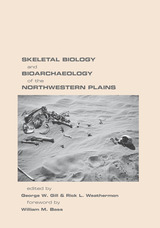 Skeletal Biology and Bioarchaeology of the Northwestern Plains
Edited by George W. Gill and Rick L. Weathermon
University of Utah Press, 2008 Northwestern Plains prehistory and early history as told by human bones is vivid and dramatic. The skeletal and burial record spans thousands of years, a wide geographic expanse, and contains important evidence of human existence in this vast region of North America. This book helps clarify the emerging picture. Most of the contributions assembled here were initially presented as part of a symposium at the Plains Conference in Oklahoma City in 2003. Twenty-one preeminent scholars, working across many fields within bioarchaeology and skeletal biology—including paleopathology, dental pathology, and human osteology—bring their expertise to bear not only on prehistoric Native American burials, but on numerous other case studies. They look at specific Wyoming samples of pioneer-era burials, Indian War–era casualties, historic Chinese burials, and remains from the Benick Ranch and the Korell-Bordeaux sites. Reports on Crow Indian mummies from Montana and military burials from Missouri and Nebraska continue the exploration into recent historic times. Human burials provide a rich source of information about people’s lives—who they were, what activities they pursued, and how they may have participated in rituals of death and mourning. This volume is an authoritative statement on both the skeletal biology and bioarchaeology of the entire Northwestern Plains.
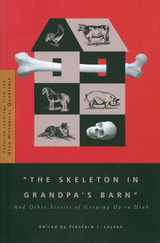 "The Skeleton in Grandpa's Barn": And Other Stories of Growing Up in Utah
Stanford J. Layton
Signature Books, 2008 The loft of Grandpa’s barn in Salt Lake City was “off limits,” the trap door padlocked. For boys like Zack Lund, Grandpa might as well have hung out a large “welcome” sign inviting them to break in and see what was hidden there. In Parowan, young Nevada Driggs decided to discover for himself whether Captain Fremont had really slept in his grandma’s bed. Fae Decker Dix tells of how her father refused to accept the church’s newly censored version of a nineteenth-century hymn. To her embarrassment, he sang the original hellfire lyrics to O Ye Mountains High as loudly as he could above the rest of the congregation. All told, this new anthology features sixteen priceless stories: quirky and fun, informative and serious, but all engaging—nostalgic for when Utah was little more than a wide spot in the road, or as Robert Mikkelsen remembers, when both sides of the tracks were the “wrong side.”
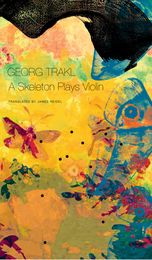 A Skeleton Plays Violin: Book Three of Our Trakl
Georg Trakl
Seagull Books, 2017 The work of poet Georg Trakl, a leading Austrian-German expressionist, has been praised by many, including his contemporaries Rainer Maria Rilke and Else Lasker-Schüler, as well as his patron Ludwig Wittgenstein. Wittgenstein famously wrote that while he did not truly understand Trakl’s poems, they had the tone of a “truly ingenious person,” which pleased him.
A Skeleton Plays Violin comprises the final volume in a trilogy of works by Trakl published by Seagull Books. This selection gathers Trakl’s early, middle, and late work, none of it published in book form during his lifetime. The work here ranges widely, from his haunting prose pieces to his darkly beautiful poems documenting the first bloody weeks of World War I on the Eastern Front.
Book Three of Our Trakl—the series that began with Trakl’s first book Poems and his posthumously published Sebastian Dreaming—also includes translations of unpublished poems and significant variants. Interpolated throughout this comprehensive and chronological selection is a biographical essay that provides more information about Trakl’s gifted and troubled life, especially as it relates to his poetry, as well as the necessary context of his relationship with his favorite sibling, his sister Grete, whose role as a muse to her brother is still highly controversial. Trakl’s life was mysterious and fascinating, a fact reflected in his work. A Skeleton Plays Violin should not be missed.
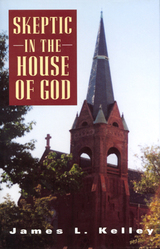 Skeptic in the House of God
Kelley, James L
Rutgers University Press, 1997 James L.Kelley, a skeptic about religion, writes with insight and humor of his journey through St. Mark's, an Episcopal church that welcomes doubters without pressuring them to compromise their intellectual integrity. When Kelley first visited the church well into his forties, he was searching for a respite from urban malaise and found himself filled with disquieting questions: How could he reconcile his convictions with the central purpose of the church-to worship a God he didn't believe in? Could he say the prayers and sing the hymns while remaining an honest skeptic? After fifteen years of full participation in a church that is open not only to skeptics but also to gay men and lesbians, blacks and Jews, where members are invited to critique Sunday sermons, and where hymns are rewritten to reflect feminist concerns, Kelley found that his agnosticism remained but his skepticism about church participation had disappeared. Modern urban life can be a sterile, isolating experience. Yet in St. Mark's Kelley discovered a place of vibrant community, honest inquiry, and support over the hard places in life.
 A Skeptical Biochemist
Joseph Fruton
Harvard University Press, 1992 An eminent pioneer of modern protein chemistry looks back on six decades in biochemical research and education to advance stimulating thoughts about science—how it is practiced, how it is explained, and how its history is written. Taking the title of his book from Robert Boyle’s classic, The Sceptical Chymist (1661), and Joseph Needham’s The Sceptical Biologist (1929), Joseph Fruton brings his own skeptical vision to bear on how chemistry and biology interact to describe living systems.
Scientists, philosophers, historians, and sociologists will seize upon the questions Fruton raises: What is the nature of the tension between the chemical and the biological sciences? What are the roots and future direction of molecular biology? What is the proper place of expert scientists in the historiography of science? How does the “scientific method” really work in practice? These and many other topics are fair game for this author’s wise critiques. In a stimulating final chapter, Fruton analyzes the evolution of key terms and symbols—the conceptual underpinnings used in the biochemical literature.
Skeptical Essays
Benson Mates
University of Chicago Press, 1981 "In philosophy," the author writes in his preface, "we have learned to get our satisfaction from showing that the other fellow is mistaken rather than from establishing the truth of our own positive tenets." The impeccably professional work of a mature and distinguished logician and scholar, Skeptical Essays propounds the view that the principal traditional problems of philosophy are genuine intellectual knots; they are intelligible enough, but at the same time the are absolutely insoluble.
The problems Mates discusses are: the Liar paradox and Russell's Antinomy of the class of all nonself-membered classes; the problem of determinism and moral responsibility; and the existence of the external world. Clearly written and effectively organized, the book will be an excellent text for advanced students.
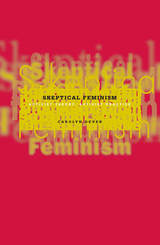 Skeptical Feminism: Activist Theory, Activist Practice
Carolyn Dever
University of Minnesota Press, 2003 A clarion call for a new approach to feminist thought In this major work, Carolyn Dever considers the ambivalence or outright hostility many feminists feel toward theory, arguing that a fundamental skepticism toward abstraction has been vital to the development of the movement. Dever analyzes the politics of feminist theory by looking at its popular, activist, and academic modes, from the liberation movements of the 1970s to gender and queer studies now. Using key moments in the history of modern feminism-consciousness-raising, best-selling books like Sexual Politics by Kate Millett and The Women’s Room by Marilyn French, and media representations of women’s struggle for equality—Dever outlines heated debates over psychoanalysis, sexuality, and activism. The abstract and the grounded converge in discussions about the relationship between the feminist mind and the feminist body and in the preoccupation, both uneasy and utopian, with lesbian sexuality. Powerful, illuminating, and galvanizing, Skeptical Feminism traces the strategies the women’s movement has used to make theory matter—and points toward a new, politically engaged approach to feminist thought.
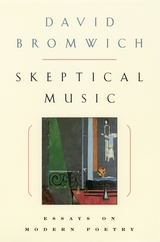 Skeptical Music: Essays on Modern Poetry
David Bromwich
University of Chicago Press, 2001 Skeptical Music collects the essays on poetry that have made David Bromwich one of the most widely admired critics now writing. Both readers familiar with modern poetry and newcomers to poets like Marianne Moore and Hart Crane will relish this collection for its elegance and power of discernment. Each essay stakes a definitive claim for the modernist style and its intent to capture an audience beyond the present moment.
The two general essays that frame Skeptical Music make Bromwich's aesthetic commitments clear. In "An Art without Importance," published here for the first time, Bromwich underscores the trust between author and reader that gives language its subtlety and depth, and makes the written word adequate to the reality that poetry captures. For Bromwich, understanding the work of a poet is like getting to know a person; it is a kind of reading that involves a mutual attraction of temperaments. The controversial final essay, "How Moral Is Taste?," explores the points at which aesthetic and moral considerations uneasily converge. In this timely essay, Bromwich argues that the wish for excitement that poetry draws upon is at once primitive and irreducible.
Skeptical Music most notably offers incomparable readings of individual poets. An essay on the complex relationship between Hart Crane and T. S. Eliot shows how the delicate shifts of tone and shading in their work register both affinity and resistance. A revealing look at W. H. Auden traces the process by which the voice of a generation changed from prophet to domestic ironist. Whether discussing heroism in the poetry of Wallace Stevens, considering self-reflection in the poems of Elizabeth Bishop, or exploring the battle between the self and its images in the work of John Ashbery, Skeptical Music will make readers think again about what poetry is, and even more important, why it still matters.
 Skeptical Visionary: A Seymour Sarason Educational Reader
Robert Fried
Temple University Press, 2002 Seymour Sarason, in the words of Carl Glickman, is "one of America's seminal thinkers about public education." For over four decades his has been a voice of much-needed skepticism about our plans for school reform, teacher training, and educational psychology. Now, for the first time, Sarason's essential writings on these and other issues are collected together, offering student and researcher alike with the range, depth, and originality of Sarason's contributions to American thinking on schooling.As we go from debate to debate on issues such as school choice, charter schools, inclusive education, national standards, and other problems that seem to drag on without solution, Sarason's critical stance on the folly of many of our attempts to fix schools has always had at the center a concern for the main players in our educational institutions: the students, the teachers and the parents. Any plans that cannot account for their well-being are doomed to failure. And in the face of such failure, the clarity of Sarason's vision for real educational success is a much-needed antidote to much of the rhetoric that currently passes for substantial debate.A wide-ranging and comprehensive selection of Sarason's most significant writings, The Skeptical Visionary should find a prized space on any student's or teacher's bookshelf.
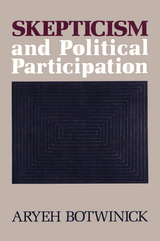 Skepticism
Aryeh Botwinick
Temple University Press, 1990 Aryeh Botwinick argues for the recovery of a radical democratic tradition that emphasizes the role of individual participation in the development and control of social and political institutions. Such involvement implies philosophical skepticism—the assumption that the truth about what is the best course of action cannot be known with certainty and that, therefore, every person’s opinion has an equal claim to be considered. The crucial stumbling block to reappropriating this radical egalitarian tradition is the supposed unviability of a consistent skepticism. In an effort to chart a new course of philosophical inquiry into political matters, Botwinick grapples with the formulation of a consistent version of skepticism, claiming that it provides "a continually renewing impetus for the expansion of political participation." Twentieth-century philosophers have, for the most part, opted for some version of mitigated skepticism, which, the author argues, "has blinded them to the radical political implications of skepticism." Underscoring a pattern of convergence between Anglo-American and Continental philosophy, Botwinick proposes a number of strategies to rehabilitate the rationality of participatory democratic political institutions by articulating an acceptable version of consistent skepticism.
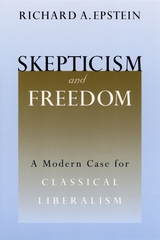 Skepticism and Freedom: A Modern Case for Classical Liberalism
Richard A. Epstein
University of Chicago Press, 2003 With this book, Richard A. Epstein provides a spirited and systematic defense of classical liberalism against the critiques mounted against it over the past thirty years. One of the most distinguished and provocative legal scholars writing today, Epstein here explains his controversial ideas in what will quickly come to be considered one of his cornerstone works.
He begins by laying out his own vision of the key principles of classical liberalism: respect for the autonomy of the individual, a strong system of private property rights, the voluntary exchange of labor and possessions, and prohibitions against force or fraud. Nonetheless, he not only recognizes but insists that state coercion is crucial to safeguarding these principles of private ordering and supplying the social infrastructure on which they depend. Within this framework, Epstein then shows why limited government is much to be preferred over the modern interventionist welfare state.
Many of the modern attacks on the classical liberal system seek to undermine the moral, conceptual, cognitive, and psychological foundations on which it rests. Epstein rises to this challenge by carefully rebutting each of these objections in turn. For instance, Epstein demonstrates how our inability to judge the preferences of others means we should respect their liberty of choice regarding their own lives. And he points out the flaws in behavioral economic arguments which, overlooking strong evolutionary pressures, claim that individual preferences are unstable and that people are unable to adopt rational means to achieve their own ends. Freedom, Epstein ultimately shows, depends upon a skepticism that rightly shuns making judgments about what is best for individuals, but that also avoids the relativistic trap that all judgments about our political institutions have equal worth.
A brilliant defense of classical liberalism, Skepticism and Freedom will rightly be seen as an intellectual landmark.
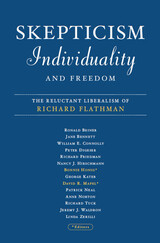 Skepticism, Individuality, and Freedom: The Reluctant Liberalism Of Richard Flathman
Bonnie Honig
University of Minnesota Press, 2002 Major thinkers grapple with the challenge of this renowned liberal thinker. As one of liberal theory’s most important gadflies, Richard Flathman has during the past four decades produced a significant body of work that is iconoclastic, idiosyncratic, and increasingly influential. Flathman criticizes liberal theory’s role in justifying a politics of governance that has drifted substantially from liberalism’s central commitments to individuality and freedom. It is this challenge, and its implications for the future of liberal theory, that brings together the diverse and distinguished authors of this volume. Topics include the relationships between theory and practice, skepticism and knowledge, individuality and egoism, negative and positive freedom, Hobbes and liberalism, as well as the uneasy connections among liberalism, feminism, and democratic politics. Contributors: Ronald Beiner, U of Toronto; Jane Bennett, Goucher; William E. Connolly, Johns Hopkins; Peter Digeser, U of California, Santa Barbara; Richard Friedman, SUNY, Buffalo; Nancy J. Hirschmann, Cornell; George Kateb, Princeton; Patrick Neal, U of Vermont; Anne Norton, U of Pennsylvania; Richard Tuck, Harvard; Jeremy J. Waldron, Columbia; Linda Zerilli, Northwestern.
Sketch for a Self-Analysis
Pierre Bourdieu
University of Chicago Press, 2008 Over the past four decades, French sociologist Pierre Bourdieu produced one of the most imaginative and subtle bodies of social theory of the postwar era. When he died in 2002, he was considered to be the most influential sociologist in the world and a thinker on a par with Foucault and Lévi-Strauss—a public intellectual as important to his generation as Sartre was to his.
Sketch for a Self-Analysis is the ultimate outcome of Bourdieu’s lifelong preoccupation with reflexivity. Vehemently not an autobiography, this unique book is instead an application of Bourdieu’s theories to his own life and intellectual trajectory; along the way it offers compelling and intimate insights into the most important French intellectuals of the time—including Foucault, Sartre, Aron, Althusser, and de Beauvoir—as well as Bourdieu’s own formative experiences at boarding school and his moral outrage at the colonial war in Algeria.
 Sketchbook, 1946–1949
Max Frisch
Seagull Books, 2022 A new translation of one of the earliest volumes of Max Frisch’s innovative notebooks.
Throughout his life, the great Swiss playwright and novelist Max Frisch (1911–1991) kept a series of diaries, or sketchbooks, as they came to be known in English. First published in English translation in the 1970s, these sketchbooks played a major role in establishing Frisch as, according to the New York Times, “the most innovative, varied and hard-to-categorize of all major contemporary authors.” His diaries, said the Times, “read like novels and his best novels are written like diaries.”
Now Seagull Books presents the first unabridged English translation of Sketchbooks, 1946–1949 in a new translation by Simon Pare. This edition reinstates material omitted from the 1977 edition, including a screenplay for an unmade film. In this first volume, which covers the years 1946 to 1949, Frisch chronicles the intellectual and material situation in postwar Europe from the vantage point of a citizen of a neutral, German-speaking country. His notes on travels to the scarred cities of Germany, to Austria, France, Italy, Prague, Wroclaw, and Warsaw paint a complex and stimulating picture of a continent emerging from the rubble as new fault lines are drawn between East and West. As Frisch completes his final architectural projects and garners early success as a writer, he reflects on theater, language, and writing, and he sketches the outlines of plays, including The Fire Raisers and Count Öderland.
Whatever experience he chronicles in the sketchbook—whether it’s a Bastille Day party, an Italian fish market, or a tightrope display amid the ruins of Frankfurt or an afternoon by Lake Zurich with Bertolt Brecht, to take just a few examples—his keen dramatist’s eye immerses the reader in the setting while also probing the deeper significance and motivations underlying the scene. This new translation will serve to draw out the immediacy and contemporary quality of Frisch’s observations from the shadow of his status as a classic author, bringing his work to life for a new audience.
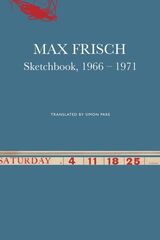 Sketchbook, 1966–1971
Max Frisch
Seagull Books, 2023 A fresh translation of the second volume of Max Frisch’s diaries.
By the time Swiss author Max Frisch published the second volume of his diaries or sketchbooks, he had achieved international recognition as a writer and dramatist. In this volume, he develops his version of the literary diary as a mosaic of musings on architecture and writing, travelogue, autobiography, and political insight. He considers Cold War tensions as well as the civil rights and anti–Vietnam War movements in the United States. Now middle-aged himself, he looks squarely at men’s evolving attitude to life, love, sex, women, and status. And for all the idyllic descriptions of his new home in Berzona, Frisch becomes increasingly critical of his native Switzerland, in particular the crackdowns on left-wingers and protestors, and receives abuse for his stance. Based on the second German edition that reinstated material that had been removed from the original 1972 version, this fresh and definitive translation brings an important mid-twentieth-century European classic back to life.
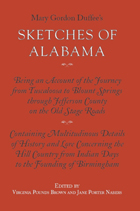 Sketches of Alabama
Mary Duffee, edited by Jane Porter Nabers and Virginia Pounds Brown
University of Alabama Press, 1970 Mary Gordon Duffee's father, Matthew Duffee was born in Ireland and immigrated to Tuscaloosa, Alabama in 1823. In Tuscaloosa he operated a popular tavern, and he later bought a resort hotel at Blount Springs. Mary Duffee was born in Alabama in 1840 and spent many summers with her family at the resort. It was the journey to and from Blount Springs that inspired Duffee's best-known work, Sketches of Alabama, which originally appeared as fifty-nine articles in the Birmingham Weekly Iron Age in 1886 and 1887. She also contributed articles to several out-of-state newspapers, wrote guide books, advertising copy, and poetry. She died in 1920. This collection contains typescripts of some of Mary Gordon Duffee's Iron Age columns "Sketches of Alabama," manuscripts of seven of Duffee's poems, a typed biographical sketch of Duffee, undated, and Duffee's obituary from the Birmingham Age-Herald.
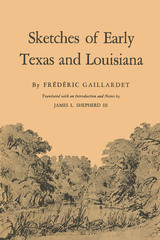 Sketches of Early Texas and Louisiana
By Frédéric Gaillardet
University of Texas Press, 1966 A lively report of travels in early nineteenth-century Texas and Louisiana and a fascinating account of the discovery, exploration, and settlement of those areas is presented in the work of this ebullient young French dramatist and journalist who traveled to Louisiana in 1837 and to Texas in 1839. Frédéric Gaillardet, an alert and talented writer of the romantic school, was lured away for a decade from a successful career in Paris to satisfy his wanderlust and to seek inspiration on the American frontier. During that time he visited the American Southwest, and he talked with many personages there—men like Sam Houston, Mirabeau B. Lamar, and Achille Murat. His character sketches of these men add zest to the book, as do the facets of Gaillardet's own personality and life displayed in these pages. Gaillardet's reports of his travels were published in various French-language newspapers of the time; a few were incorporated into the author's posthumous memoirs. His opinions, as recorded in his writings, exerted undeniable influence in the French decision to recognize Texas; one of his theses was that the Republic of Texas might become a curb, rather than a stepping stone, to an expanding United States. Despite Gaillardet's historical importance, however, none of these chapters has ever appeared before in English translation. This collection was gathered from several sources: the Journal des Débats, the Constitutionnel, the Courrier des États-Unis, and Gaillardet's memoirs, entitled L'Aristocratie en Amérique. The latter chapters concentrate on the career of a prominent Louisiana lawyer, politician, and diplomat, Pierre Soulé, whose much maligned name Gaillardet repeatedly and stoutly defended. A less favorable treatment of Soulé, contained in Fanny Calderón de la Barca's Attaché in Madrid, is reprinted in the appendix to aid the reader in judging the accuracy of Gaillardet's analysis of this arresting figure. Copious footnotes to clarify the text have been added by the translator. His introduction presents a biographical sketch of Gaillardet, together with a careful analysis of the book, which has been translated lucidly and vividly.
Sketches of Slave Life and From and From Slave Cabin to the Pulpit
Peter Randolph
West Virginia University Press, 2016 This book is the first anthology of the autobiographical writings of Peter Randolph, a prominent nineteenth-century former slave who became a black abolitionist, pastor, and community leader.
Randolph’s story is unique because he was freed and relocated from Virginia to Boston, along with his entire plantation cohort. A lawsuit launched by Randolph against his former master’s estate left legal documents that corroborate his autobiographies.
Randolph's writings give us a window into a different experience of slavery and freedom than other narratives currently available and will be of interest to students and scholars of African American literature, history, and religious studies, as well as those with an interest in Virginia history and mid-Atlantic slavery.
 The Ski Jumpers: A Novel
Peter Geye
University of Minnesota Press, 2022 Now in paperback: a writer and former ski jumper facing a terminal diagnosis takes one more leap—into a past of soaring flights and broken family bonds A brilliant ski jumper has to be fearless—Jon Bargaard remembers this well. His memories of daring leaps and risks might be the key to the book he’s always wanted to write: a novel about his family, beginning with Pops, once a champion ski jumper himself, who also took Jon and his younger brother Anton to the heights. But Jon has never been able to get past the next, ruinous episode of their history, and now that he has received a terrible diagnosis, he’s afraid he never will. In a bravura performance, Peter Geye follows Jon deep into the past he tried so hard to leave behind, telling the story he spent his life escaping. It begins with a flourish, his father and his hard-won sweetheart fleeing Chicago, and a notoriously ruthless gangster, to land in North Minneapolis. That, at least, was the tale Jon heard, one that becomes more and more suspect as he revisits the events that eventually tore the family in two, sending his father to prison, his mother to the state hospital, and placing himself, a teenager, in charge of thirteen-year-old Anton. Traveling back and forth in time, Jon tells his family’s story—perhaps his last chance to share it—to his beloved wife Ingrid, circling ever closer to the truth about those events and his own part in them, and revealing the perhaps unforgivable violence done to the brothers’ bond. The dream of ski jumping haunts Jon as his tale unfolds, daring time to stop just long enough to stick the landing. As thrilling as those soaring flights, as precarious as the Bargaard family’s complicated love, as tender as Jon’s backward gaze while disease takes him inexorably forward, Peter Geye’s gorgeous prose brings the brothers to the precipice of their relationship, where they have to choose: each other, or the secrets they’ve held so tightly for so long. Cover alt text: Lightly gradiented periwinkle sky background with white cloud in upper right corner and snow in lower left. At top, a cutout black-and-white image of a ski jumper appears and is cut off at the neck. Foreground: Book title in all-caps red, with author name beneath in all-caps white and “A Novel” beneath in all-cap dark grey. All text reads at a motion slant.
Skid
Dean Young
University of Pittsburgh Press, 2002 Dean Young is one of the premier surrealist poets writing today. In Skid, his fifth book of poems, social outrage vies with comic excess. He embraces the autobiographical urge with fury and musically lush exclamations. Whether through the dark facts of mortality or the celebratory surprises of the imagination, these poems proclaim vitality and alertness, wasting nothing. From Wile E. Coyote and the Roadrunner’s "Meep! Meep!" to remembrances of lost loves and laments about the future, Young’s poems reveal his faith in the genius of calamity and the redemptive power of fun.
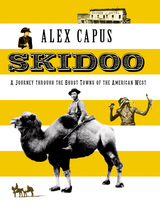 Skidoo: A Journey through the Ghost Towns of the American West
Alex Capus
Haus Publishing, 2013 Decades after westward expansion swept over it, settled it, and domesticated it, the Wild West remains a potent source of American myth and mystery. But the actual history, and the traces of it that remain, are at least as interesting as the fiction, and in Skidoo, writer and novelist Alex Capus takes us on a fascinating tour of the skeleton of the American West—the ghost towns and collapsing mines that lie far from interstates and airports, lost in history.
Walking in the footsteps of bank robbers and grave diggers, desperadoes and Native Americans, beer brewers and child brides, Capus uncovers story after story of adventure, violence, and exploration. Near Salt Wells, Nevada, he learns the story of a luckless inventor whose corpse was discovered frozen in the desert, an icicle hanging from its nose. In Skidoo, California, he tells us of a brawling bartender, Hootch Simpson, who was hanged twice—once by a mob, once by the law—before being beheaded during his autopsy. And in Flagstaff, Arizona, Capus traces the long-lost origins of Route 66, as a narrow, isolated trail for Edward Fitzgerald Beale’s Camel Corps.
Packed with period detail, and told with a verve and enthusiasm to rival Pecos Bill, the stories in Skidoo are sure to enchant any lover of Western tales or America’s wild history.
Skijor With Your Dog
Mari Høe-Raitto and Carol Kaynor
University of Alaska Press, 1991 Skijoring is the exciting sport of being pulled on skis by one or more dogs in harness. With 200 pages and more than 75 photos and illustrations, Skijor With Your Dog is the first full-length volume written for those interested in this simple, enjoyable Scandinavian sport. In this book you will find: how to teach your dog to pull, what equipment you need, how to include children, racing tips and how to train for competition, and how to camp and travel with dogs. Designed for easy reading, this practical guide to skijoring is a must for anyone interested in dogs, skiing, and winter fun.
Skijor with Your Dog: Second Edition
Mari Høe-Raitto and Carol Kaynor
University of Alaska Press, 2012 Skijoring, or being pulled on skis by a dog in harness, is a great sport in which almost everyone—and almost any breed of dog—can participate. It requires little beyond a pair of skis and a dog with a desire to pull. The second edition of this popular and practical guide to the sport covers what equipment is needed, how to teach a dog to pull, and how to work with your dog year-round. Although it is geared toward beginners, Skijor with Your Dog offers plenty of useful information for experienced skijorers as well, including racing tips, how to involve children, how to camp and travel with dogs, and how to train for competition. The book also covers canicross, bikejoring, and other ways to work with dogs when there’s no snow.With this book in hand, readers will have all the information they need to begin enjoying the outdoors with their dogs in a whole new way.
Skills Development for Engineers: Innovative model for advanced learning in the workplace
Kevin Hoag
The Institution of Engineering and Technology, 2001 This book presents an innovative model for skills development for engineering professionals. Organizations operate in an increasingly competitive environment, which drives a need for continuous employee skills development. The rapid pace of technological change requires everyone to continue learning throughout life and this book questions the effectiveness of current employee learning in most organizations. Conversely, the new lifelong learning model described in this book has been proven very successful and less costly than existing systems. This highly readable book is amply illustrated with many practical examples and case studies based on the author's experience as a training manager in a large North American engineering company.
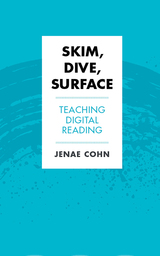 Skim, Dive, Surface: Teaching Digital Reading
Jenae Cohn
West Virginia University Press, 2021 Students are reading on screens more than ever—how can we teach them to be better digital readers?
Smartphones, laptops, tablets: college students are reading on-screen all the time, and digital devices shape students’ understanding of and experiences with reading. In higher education, however, teachers rarely consider how digital reading experiences may have an impact on learning abilities, unless they’re lamenting students’ attention spans or the distractions available to students when they’re learning online. Skim, Dive, Surface offers a corrective to these conversations—an invitation to focus not on losses to student learning but on the spectrum of affordances available within digital learning environments. It is designed to help college instructors across the curriculum teach digital reading in their classes, whether they teach face-to-face, fully online, or somewhere in between. Placing research from cognitive psychology, neuroscience, learning science, and composition in dialogue with insight from the scholarship of teaching and learning, Jenae Cohn shows how teachers can better frame, scaffold, and implement effective digital reading assignments. She positions digital reading as part of a cluster of literacies that students should develop in order to communicate effectively in a digital environment.
Skin
April Lindner, with introduction by Robert A. Fink
Texas Tech University Press, 2002 Haven’t we all been told how beauty is thin as truth? And don’t we believe and disbelieve this “lie we’d carve and starve for. / We’d suck it till the juice ran down our arms”? Skin compels us, repels us. Beauty may be only skin deep, a fine covering—sensuous, at times Translatorlucent, almost Translatorparent, and yet so obdurate. Skin insulates, guarding its vital organs just beneath this surface that teases us to peek, to try to penetrate. We call this desire by many names, the best of which is love. April Lindner’s sensuously orchestrated collection of poems conveys the beauty and truth of love, how we know it to be paradoxical, obsessive, fearful, rapacious, holy. —Robert Fink, from the Introduction byduction
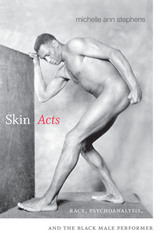 Skin Acts: Race, Psychoanalysis, and the Black Male Performer
Michelle Ann Stephens
Duke University Press, 2014 In Skin Acts, Michelle Ann Stephens explores the work of four iconic twentieth-century black male performers—Bert Williams, Paul Robeson, Harry Belafonte, and Bob Marley—to reveal how racial and sexual difference is both marked by and experienced in the skin. She situates each figure within his cultural moment, examining his performance in the context of contemporary race relations and visual regimes. Drawing on Lacanian psychoanalysis and performance theory, Stephens contends that while black skin is subject to what Frantz Fanon called the epidermalizing and hardening effects of the gaze, it is in the flesh that other—intersubjective, pre-discursive, and sensuous—forms of knowing take place between artist and audience. Analyzing a wide range of visual, musical, and textual sources, Stephens shows that black subjectivity and performativity are structured by the tension between skin and flesh, sight and touch, difference and sameness.
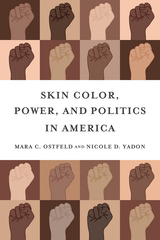 Skin Color, Power, and Politics in America
Mara Cecilia Ostfeld
Russell Sage Foundation, 2022 A person’s skin color affects their life experiences including income, educational attainment, health outcomes, exposure to discrimination, interactions with the criminal justice system and one’s sense of ethnoracial group belonging. But, do these disparate experiences affect the relationship between skin color and political views? In Skin Color, Power, and Politics in America, political scientists Mara Ostfeld and Nicole Yadon explore the relationship between skin color and political views in the U.S. among Latino, Black, and White Americans. They examine how skin color influences an individual’s politics and whether a person’s political views influence how they assess their own skin color.
Ostfeld and Yadon surveyed over 1,300 people about their political views, including party affiliation, their opinions on welfare, and the importance of speaking English in the U.S. The authors created a matrix grounded in their “Roots of Race” framework, which predicts the relationship between skin color and political attitudes for each ethnoracial group based on the blurriness of the group’s boundaries and historical levels of privilege. They draw upon three distinct measures of skin color to conceptualize the relationship between skin color and political views: “Machine-Rated Skin Color,” measured with a light-reflectance meter; “Self-Assessed Skin Color,” using the Yadon-Ostfeld Skin Color Scale; and “Skin Color Discrepancy,” the difference between one’s Machine-Rated and Self-Assessed Skin Color.
Ostfeld and Yadon examine patterns that emerge among these measures, and their relationships with life experiences and political stances. Among Latinos, a group with relatively blurry group boundaries and low levels of historical privilege, the authors find a robust relationship between political views and Self-Assessed Skin Color. Latinos who overestimate the lightness of their skin color are more likely to hold conservative views on current racialized political issues, such as policing. Latinos who overestimate the darkness of their skin color, on the other hand, are more likely to hold liberal political views. As America’s major political parties remain divided on issues of race, this suggests that for Latinos, self-reported skin color is used as a means of aligning oneself with valued political coalitions.
African Americans, another group with low levels of historical privilege but with more clearly defined group boundaries, demonstrated no significant relationship between skin color and political attitudes. Thus, the lived experiences associated with being African American appeared to supersede the differences in life experiences due to skin color.
Whites, a group with more historical privilege and increasingly blurry group boundaries, showed a clear relationship between machine-assessed skin color and attitudes on political issues. Those with darker Machine-Rated Skin Color are more likely to hold conservative views, suggesting that they are responding to the threat of losing their privilege in a multicultural society.
At a time when the U.S. is both more diverse and politically divided, Skin Color, Power, and Politics in Americais a timely account of the ways in which skin color and politics are intertwined.
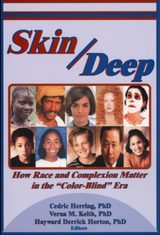 Skin Deep: How Race and Complexion Matter in the "Color-Blind" Era
Edited by Cedric Herring, Verna M. Keith, and Hayward Derrick Horton
University of Illinois Press, 2004 Shattering the myth of the color-blind society, the essays in Skin Deep examine skin tone stratification in America, which affects relations not only among different races and ethnic groups but also among members of individual ethnicities.
Written by some of the nation's leading thinkers on race and colorism, these essays ask whether skin tone differentiation is imposed upon communities of color from the outside or is an internally-driven process aided and abetted by community members themselves. They also question whether the stratification process is the same for African Americans, Hispanics, and Asian Americans.
Skin Deep addresses such issues as the relationship between skin tone and self esteem, marital patterns, interracial relationships, socioeconomic attainment, and family racial identity and composition. The essays also grapple with emerging issues such as biracialism, color-blind racism, and 21st century notions of race.
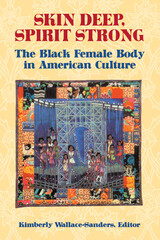 Skin Deep, Spirit Strong: The Black Female Body in American Culture
Kimberly Wallace-Sanders, Editor
University of Michigan Press, 2002 The essays in Skin Deep, Spirit Strong: The Black Female Body in American Culture chart the ways that the simultaneous interrogation of gender, race, and corporeality shape the construction of black female representation. Kimberly Wallace-Sanders has enlisted a wide variety of scholarly perspectives and critical approaches about the place of black women's bodies within the American cultural consciousness. An impressive gathering of essays and visual art by feminist scholars and artists, the book presents a persuasive argument for broadening the ongoing scholarly conversations about the body. It makes clear that the most salient discourses in poststructuralist and feminist theory are made richer and more complex when the black female body is considered.
The collection blends original and classic essays to reveal the interconnections among art, literature, public policy, the history of medicine, and theories about sexuality with regard to bodies that are both black and female. Contributors include Rachel Adams, Elizabeth Alexander, Lisa Collins, Bridgette Davis, Lisa E.Farrington, Anne Fausto-Sterling, Beverly Guy-Sheftall, Evelynn Hammonds, Terri Kapsalis, Jennifer L. Morgan, Siobhan B. Somerville, Kimberly Wallace-Sanders, Carla Williams, and Doris Witt.
Skin Deep, Spirit Strong: The Black Female Body in American Culture will appeal to both the academic reader attempting to integrate race into discussion about the female body and to the general reader curious about the history of black female representation.
Kimberly Wallace-Sanders is Assistant Professor, Graduate Institute of Liberal Arts and Institute of Women's Studies, Emory University.
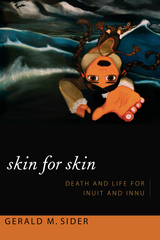 Skin for Skin: Death and Life for Inuit and Innu
Gerald M. Sider
Duke University Press, 2014 Since the 1960s, the Native peoples of northeastern Canada, both Inuit and Innu, have experienced epidemics of substance abuse, domestic violence, and youth suicide. Seeking to understand these transformations in the capacities of Native communities to resist cultural, economic, and political domination, Gerald M. Sider offers an ethnographic analysis of aboriginal Canadians' changing experiences of historical violence. He relates acts of communal self-destruction to colonial and postcolonial policies and practices, as well as to the end of the fur and sealskin trades. Autonomy and dignity within Native communities have eroded as individuals have been deprived of their livelihoods and treated by the state and corporations as if they were disposable. Yet Native peoples' possession of valuable resources provides them with some income and power to negotiate with state and business interests. Sider's assessment of the health of Native communities in the Canadian province of Labrador is filled with potentially useful findings for Native peoples there and elsewhere. While harrowing, his account also suggests hope, which he finds in the expressiveness and power of Native peoples to struggle for a better tomorrow within and against domination.
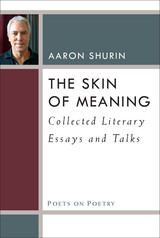 The Skin of Meaning: Collected Literary Essays and Talks
Aaron Shurin
University of Michigan Press, 2016 A volume in the Poets on Poetry series, which collects critical works by contemporary poets, gathering together the articles, interviews, and book reviews by which they have articulated the poetics of a new generation. In The Skin of Meaning, Aaron Shurin has collected thirty years’ worth of his provocative essays. Fueled by gender and queer studies and combined with radical traditions in poetry, Shurin’s essays combine a highly personal and lyrical vision with a trenchant social analysis of poetry’s possibilities. Whether he’s examining innovations in poetic form, analyzing the gestures of drag queens, or dissecting the language of AIDS, Shurin’s writing is evocative, his investigations rigorous, and his point of view unabashed. Shurin’s poetic practice braids together many strands in contemporary, innovative writing, from the San Francisco Renaissance to Language Poetry and New Narrative Writing. His mentorships with Robert Duncan and Denise Levertov; his studies at New College of California, where he was the first graduate of the epochal Poetics Program; and his years of teaching writing provide a rich background for these essays. San Francisco provides the color and context for formulations of “prosody now,” propositions of textual collage, and theories of radical narrativity, while the heart of the book searches through the dire years of the AIDS epidemic to uncover poetic meaning, and “make the heroes heroes.”
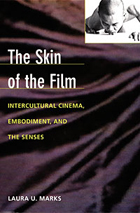 The Skin of the Film: Intercultural Cinema, Embodiment, and the Senses
Laura U. Marks
Duke University Press, 2000 Memories that evoke the physical awareness of touch, smell, and bodily presence can be vital links to home for people living in diaspora from their culture of origin. How can filmmakers working between cultures use cinema, a visual medium, to transmit that physical sense of place and culture? In The Skin of the Film Laura U. Marks offers an answer, building on the theories of Gilles Deleuze and others to explain how and why intercultural cinema represents embodied experience in a postcolonial, transnational world. Much of intercultural cinema, Marks argues, has its origin in silence, in the gaps left by recorded history. Filmmakers seeking to represent their native cultures have had to develop new forms of cinematic expression. Marks offers a theory of “haptic visuality”—a visuality that functions like the sense of touch by triggering physical memories of smell, touch, and taste—to explain the newfound ways in which intercultural cinema engages the viewer bodily to convey cultural experience and memory. Using close to two hundred examples of intercultural film and video, she shows how the image allows viewers to experience cinema as a physical and multisensory embodiment of culture, not just as a visual representation of experience. Finally, this book offers a guide to many hard-to-find works of independent film and video made by Third World diasporic filmmakers now living in the United States, Great Britain, and Canada. The Skin of the Film draws on phenomenology, postcolonial and feminist theory, anthropology, and cognitive science. It will be essential reading for those interested in film theory, experimental cinema, the experience of diaspora, and the role of the sensuous in culture.
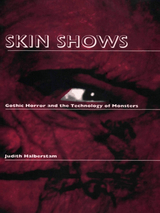 Skin Shows: Gothic Horror and the Technology of Monsters
Jack Halberstam
Duke University Press, 1995 In this examination of the monster as cultural object, Judith Halberstam offers a rereading of the monstrous that revises our view of the Gothic. Moving from the nineteenth century and the works of Shelley, Stevenson, Stoker, and Wilde to contemporary horror film exemplified by such movies as Silence of the Lambs, Texas Chainsaw Massacre, and Candyman, Skin Shows understands the Gothic as a versatile technology, a means of producing monsters that is constantly being rewritten by historically and culturally conditioned fears generated by a shared sense of otherness and difference.
Deploying feminist and queer approaches to the monstrous body, Halberstam views the Gothic as a broad-based cultural phenomenon that supports and sustains the economic, social, and sexual hierarchies of the time. She resists familiar psychoanalytic critiques and cautions against any interpretive attempt to reduce the affective power of the monstrous to a single factor. The nineteenth-century monster is shown, for example, as configuring otherness as an amalgam of race, class, gender, and sexuality. Invoking Foucault, Halberstam describes the history of monsters in terms of its shifting relation to the body and its representations. As a result, her readings of familiar texts are radically new. She locates psychoanalysis itself within the gothic tradition and sees sexuality as a beast created in nineteenth century literature. Excessive interpretability, Halberstam argues, whether in film, literature, or in the culture at large, is the actual hallmark of monstrosity.
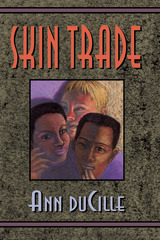 Skin Trade
Ann DuCille
Harvard University Press, 1996 How does the notion of colorblind equality fit with the social and economic realities of black Americans? Challenging the increasingly popular argument that blacks should settle down, stop whining, and get jobs, Skin Trade insists that racism remains America's premier national story and its grossest national product. From Aunt Jemima Pancakes to ethnic Barbie dolls, corporate America peddles racial and gender stereotypes, packaging and selling them to us as breakfast food or toys for our kids.
Moving from the realm of child's play through the academy and the justice system, Ann duCille draws on icons of popular culture to demonstrate that it isn't just race and gender that matter in America but race and gender as reducible to skin color, body structure, and other visible signs of difference. She reveals that Mattel, Inc., uses stereotypes of gender, race, and cultural difference to mark--and market--its Barbie dolls as female, white, black, Asian, and Hispanic. The popularity of these dolls suggests the degree to which we have internalized dominant definitions of self and other.
In a similar move, Skin Trade interrogates the popular discourse surrounding the trial of O. J. Simpson, arguing that much of the mainstream coverage of the case was a racially coded message equally dependent on stereotypes. Focusing on Newsweek and Time in particular, duCille shows how the former All-American was depicted as un-American. She explores other collusions and collisions among race, gender, and capital as well. Especially concerned with superficial distinctions perpetuated within the academic community, the author argues that the academy indulges in its own skin trade in which both race and gender are hot properties.
By turns biting, humorous, and hopeful, Skin Trade is always riveting, full of strange connections and unexpected insights.
Skinheads Shaved For Battle: A Cultural History of American Skinheads
Jack Moore
University of Wisconsin Press, 1993 This book describes who American skinheads are, how they have developed within larger youth group scenes, their ideas and activities, the role of music in their formation and development, how they have been perceived by the media in America, and what damage they have done in American society. Jack B. Moore focuses on the cultural history of this group in America during the 1980s and suggests that while they were originally a minor distraction on the punk scene, they have grown into a dangerous and far more politically engaged source of hate thought and crime.
 Skinny Streets and Green Neighborhoods: Design for Environment and Community
Cynthia Girling and Ronald Kellett
Island Press, 2006 Cities are growing at unprecedented rates. Most continue to sprawl into the countryside. Some are only now adopting policies that attempt to control air pollution from vehicles, reduce water pollution from urban runoff, and repair fragmented urban ecosystems. Can good urban design and sound environmental design coincide at a neighborhood level to create healthy communities? Absolutely, and the strategies presented by Cynthia Girling and Ronald Kellett in Skinny Streets and Green Neighborhoods illustrate how to weave together contemporary thinking in urban planning with open space planning and urban ecology. Drawing from eighteen case studies, these green neighborhoods are the best examples of how the natural environment can play integral roles in neighborhoods. Green neighborhoods offer a mix of housing types in order to serve a broad cross-section of people with a finely-grained variety of land uses and services, all close to home. In ecologically sound communities, the urban landscape is a functioning part of the whole ecosystem. Wooded areas, meandering streams, wetlands, and open spaces are planned and engineered to clean the air and the water. Skinnier streets and practical pathways weave into a functional, economical network to provide a range of equally good transportation choices, from walking to mass transit, that move people efficiently and economically. This book moves beyond identifying problems to demonstrate proven methods and models that solve multiple, complex problems in concert. With innovative ideas and practical advice, Skinny Streets and Green Neighborhoods is a guide for today's planners, architects, engineers, and developers to design better neighborhoods and a more natural metropolis.
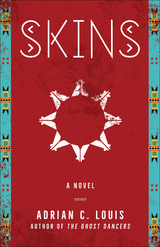 Skins: A Novel
Adrian C. Louis
University of Nevada Press, 2022 By the end of the twentieth century, Adrian C. Louis had become one of the most powerful voices in the canon of Native American literature. Skins, his best-known work, is now offered by the University of Nevada Press with a new foreword by David Pichaske.
It’s the early 1990s and Rudy Yellow Shirt and his brother, Mogie, are living on the Pine Ridge Reservation in South Dakota, home of the legendary Oglala Sioux warrior Crazy Horse. Both Vietnam veterans, the men struggle with daily life on the rez. Rudy, a criminal investigator with the Pine Ridge Public Safety Department, must frequently arrest his neighbors and friends, including his brother, who has become a rez wino.
But when Rudy falls and hits his head on a rock while pursuing a suspected murderer, Iktome the trickster enters his brain. Iktome restores Rudy’s youthful sexual vigor—long-lost to years of taking high blood pressure pills—and ignites his desire for political revenge via an alter ego, the “Avenging Warrior.” As the Avenging Warrior, Rudy takes direct action to punish local criminals. In a violent act, he torches the local liquor store, nearly burning Mogie alive while he is hiding on the store’s roof, plotting to steal booze. Although the brothers reconcile before Mogie dies, he leaves the Avenging Warrior with one final mission: go to Mount Rushmore and blow the nose off George Washington’s face.
Louis’s critically acclaimed novel was made into a movie in 2002, directed by Chris Eyre.
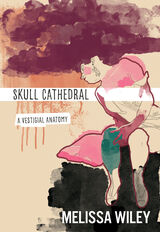 Skull Cathedral: A Vestigial Anatomy
Melissa Wiley
Autumn House Press, 2020 In Skull Cathedral, Melissa Wiley pulls stories from the vestigial remnants of the creatures we were or could have become. The appendix, pinky toes, tonsils, male nipples, wisdom teeth, and coccyx are starting points through which Wiley explores exaltation, eroticism, grief, and desire. Using the slow evolution and odd disintegration of vestigial organs to enter the braided stories of the lives we establish for ourselves, the people we grieve, and the mysteries of youth, memory, and longing, Wiley’s lens is deeply feminist and compassionate.
Turning to these mysterious anatomical remnants, she finds insight into the lingering questions of loss and the nagging sensations of being incomplete. For instance, in considering the appendix, Wiley finds herself working through her grief after the loss of her father, a sensation that again resurfaces in the face of the moon as she looks to the sky. Testing the boundaries of genre and fighting to expand the limits of perception, the stylized essays of Skull Cathedral embrace the strangeness of life through the lingering peculiarities of the human body. Skull Cathedral, Wiley’s second book of nonfiction, won the 2019 Autumn House Nonfiction Prize.
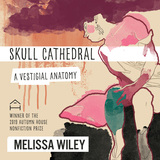 Skull Cathedral: A Vestigial Anatomy
Melissa Wiley
Autumn House Press, 2021 In Skull Cathedral, Melissa Wiley pulls stories from the vestigial remnants of the creatures we were or could have become. The appendix, pinky toes, tonsils, male nipples, wisdom teeth, and coccyx are starting points through which Wiley explores exaltation, eroticism, grief, and desire. Using the slow evolution and odd disintegration of vestigial organs to enter the braided stories of the lives we establish for ourselves, the people we grieve, and the mysteries of youth, memory, and longing, Wiley’s lens is deeply feminist and compassionate.
Turning to these mysterious anatomical remnants, she finds insight into the lingering questions of loss and the nagging sensations of being incomplete. For instance, in considering the appendix, Wiley finds herself working through her grief after the loss of her father, a sensation that again resurfaces in the face of the moon as she looks to the sky. Testing the boundaries of genre and fighting to expand the limits of perception, the stylized essays of Skull Cathedral embrace the strangeness of life through the lingering peculiarities of the human body. Skull Cathedral, Wiley’s second book of nonfiction, won the 2019 Autumn House Nonfiction Prize.
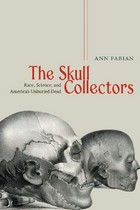 The Skull Collectors: Race, Science, and America's Unburied Dead
Ann Fabian
University of Chicago Press, 2010 When Philadelphia naturalist Samuel George Morton died in 1851, no one cut off his head, boiled away its flesh, and added his grinning skull to a collection of crania. It would have been strange, but perhaps fitting, had Morton’s skull wound up in a collector’s cabinet, for Morton himself had collected hundreds of skulls over the course of a long career. Friends, diplomats, doctors, soldiers, and fellow naturalists sent him skulls they gathered from battlefields and burial grounds across America and around the world.
With The Skull Collectors, eminent historian Ann Fabian resurrects that popular and scientific movement, telling the strange—and at times gruesome—story of Morton, his contemporaries, and their search for a scientific foundation for racial difference. From cranial measurements and museum shelves to heads on stakes, bloody battlefields, and the “rascally pleasure” of grave robbing, Fabian paints a lively picture of scientific inquiry in service of an agenda of racial superiority, and of a society coming to grips with both the deadly implications of manifest destiny and the mass slaughter of the Civil War. Even as she vividly recreates the past, Fabian also deftly traces the continuing implications of this history, from lingering traces of scientific racism to debates over the return of the remains of Native Americans that are held by museums to this day.
Full of anecdotes, oddities, and insights, The Skull Collectors takes readers on a darkly fascinating trip down a little-visited but surprisingly important byway of American history.
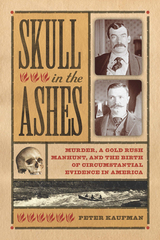 Skull in the Ashes: Murder, a Gold Rush Manhunt, and the Birth of Circumstantial Evidence in America
Peter Kaufman
University of Iowa Press, 2013 On a February night in 1897, the general store in Walford, Iowa, burned down. The next morning, townspeople discovered a charred corpse in the ashes. Everyone knew that the store’s owner, Frank Novak, had been sleeping in the store as a safeguard against burglars. Now all that remained were a few of his personal items scattered under the body.
At first, it seemed to be a tragic accident mitigated just a bit by Novak’s foresight in buying generous life insurance policies to provide for his family. But soon an investigation by the ambitious new county attorney, M. J. Tobin, turned up evidence suggesting that the dead man might actually be Edward Murray, a hard-drinking local laborer. Relying upon newly developed forensic techniques, Tobin gradually built a case implicating Novak in Murray’s murder. But all he had was circumstantial evidence, and up to that time few murder convictions had been won on that basis in the United States.
Others besides Tobin were interested in the case, including several companies that had sold Novak life insurance policies. One agency hired detectives to track down every clue regarding the suspect’s whereabouts. Newspapers across the country ran sensational headlines with melodramatic coverage of the manhunt. Veteran detective Red Perrin’s determined trek over icy mountain paths and dangerous river rapids to the raw Yukon Territory town of Dawson City, which was booming with prospectors as the Klondike gold rush began, made for especially good copy.
Skull in the Ashes traces the actions of Novak, Tobin, and Perrin, showing how the Walford fire played a pivotal role in each man’s life. Along the way, author Peter Kaufman gives readers a fascinating glimpse into forensics, detective work, trial strategies, and prison life at the close of the nineteenth century. As much as it is a chilling tale of a cold-blooded murder and its aftermath, this is also the story of three ambitious young men and their struggle to succeed in a rapidly modernizing world.
The Skull, Volume 1: Development
Edited by James Hanken and Brian K. Hall
University of Chicago Press, 1993 In this authoritative three-volume reference work, leading researchers bring together current work to provide a comprehensive analysis of the comparative morphology, development, evolution, and functional biology of the skull.
The Skull, Volume 2: Patterns of Structural and Systematic Diversity
Edited by James Hanken and Brian K. Hall
University of Chicago Press, 1993 In this authoritative three-volume reference work, leading researchers bring together current work to provide a comprehensive analysis of the comparative morphology, development, evolution, and functional biology of the skull.
The Skull, Volume 3: Functional and Evolutionary Mechanisms
Edited by James Hanken and Brian K. Hall
University of Chicago Press, 1993 In this authoritative three-volume reference work, leading researchers bring together current work to provide a comprehensive analysis of the comparative morphology, development, evolution, and functional biology of the skull.
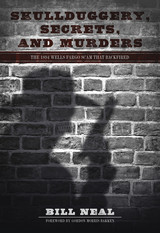 Skullduggery, Secrets, and Murders: The 1894 Wells Fargo Scam That Backfired
Bill Neal
Texas Tech University Press, 2015 In 1894, George Isaacs, the penniless black sheep of his family, was running with the worst of the outlaws in the Oklahoma Territory. There, a get-rich-quick scheme that seemed foolproof was hatched up. The plan was for George to present money packets falsely purporting to contain $25,000 in cash to the Wells Fargo office in Kansas City. Wells Fargo was to ship the packets via the Santa Fe railroad to George at Canadian, Texas, where George’s cronies would then rob the depot office and steal the phony money packets, thus allowing George Isaacs to sue Wells Fargo for his lost fortune. The plan backfired when the sheriff was on hand when the train arrived. The bandits killed the sheriff but then panicked and raced back to the Territory without grabbing the bogus packets.
Wells Fargo sent an undercover agent to investigate, but the outlaws discovered him, and the agent was assassinated. The two murders led to eight trials, but only one man, George Isaacs, was ever convicted—and even he managed to beat a life sentence. One question lingered: was George truly behind the scam?
The identities of the masterminds behind the foiled plot have remained a mystery for more than a hundred years. With his usual rough-and-tumble tenacity, Bill Neal undertakes the investigation of these two cold-case murders.
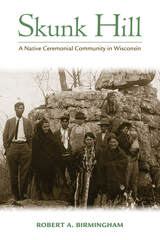 Skunk Hill: A Native Ceremonial Community in Wisconsin
Robert A. Birmingham
Wisconsin Historical Society Press, 2015 Rising above the countryside of Wood County, Wisconsin, Powers Bluff is a large outcrop of quartzite rock that resisted the glaciers that flattened the surrounding countryside. It is an appropriate symbol for the Native people who once lived on its slopes, quietly resisting social forces that would have crushed and eroded their culture. A large band of Potawatomi, many returnees from the Kansas Prairie Band Potawatomi reservation, established the village of Tah-qua-kik or Skunk Hill in 1905 on the 300-foot-high bluff, up against the oddly shaped rocks that topped the hill and protected the community from the cold winter winds.
In Skunk Hill, archeologist Robert A. Birmingham traces the largely unknown story of this community, detailing the role it played in preserving Native culture through a harsh period of US Indian policy from the 1880s to 1930s. The story’s central focus is the Drum Dance, also known as the Dream Dance or Big Drum, a pan-tribal cultural revitalization movement that swept the Upper Midwest during the Great Suppression, emphasizing Native values and rejecting the vices of the white world. Though the community disbanded by the 1930s, the site, now on the National Register of Historic
Places with two dance circles still visible on the grounds, stands as testimony to the efforts of its members to resist cultural assimilation.
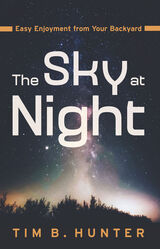 The Sky at Night: Easy Enjoyment from Your Backyard
Tim B. Hunter
University of Arizona Press, 2023 Ideal for backyard stargazers, this introduction to astronomy offers a unique blend of advice and personal observations. Drawn from decades of experiences and enjoyment watching the night sky, Tim B. Hunter helps beginners take up the hobby of watching the night sky.
An avid stargazer and astronomy columnist, Hunter covers all the basics—from the Moon, planets, and stars to the history and origins of constellations and selected famous astronomers and events. Emphasis is on naked-eye viewing with an occasional reference to using a pair of binoculars or a small telescope, encouraging beginners to explore the skies while giving them a solid understanding of what they see. Building on his writings for the long-running Sky Spy column, Hunter defines and outlines astronomical terms and how they relate to locating objects in the sky. He weaves in his personal experiences of what he learned about astronomy as a columnist for more than a decade, detailing his mistakes and triumphs to help other would-be astronomers excel in this heavenly hobby.
Sky Below: Selected Works
Raul Zurita; Translated from the Spanish and with an introduction by Anna Deeny Morales
Northwestern University Press, 2016 Raúl Zurita has long been recognized as one of the most important poetic voices in the Americas today. His compelling rhythms combine epic and lyric tones, public and most intimate themes, grief and joy. This bilingual volume of selected works is the first of its kind in any language, representing the remarkable range of this extraordinary poet. Zurita's work confronts the cataclysm of the Pinochet coup with a powerful urgency matched by his extraordinary craftsmanship and imaginative vision. In his attempt to address the atrocities that indelibly mark our continents, he makes manifest the common history of the Americas through the history and literature of Chile.
 Sky Blue Water: Great Stories for Young Readers
Jay D. Peterson
University of Minnesota Press, 2016 From the Dakota people who first inhabited the state to its generations of immigrants and today’s residents, Minnesota has long had a vibrant and unique storytelling tradition. A rich and often under appreciated part of this tradition is youth storytelling—a movement of which Minnesota is a national forerunner. Here, for the first time, two of the state’s beloved independent booksellers collect a wide array of short stories for young readers that pay homage to Minnesota's diverse cultures and stunning landscapes. Sky Blue Water celebrates young adult and intermediate fiction from some of Minnesota’s most beloved and award-winning authors to emerging talents and many more. With each turn of the page, every young reader will find a poignant and relatable story: tales of discovering hidden truths about one’s family, dealing with a difficult bully, and falling for the new kid who dresses like a cowboy, as well as settings from Rainy Lake to Lake Calhoun and time periods from Prohibition to the present day. Featuring primarily never-published stories, this anthology beautifully captures the essence of a Minnesota adolescence in twenty short stories and poems. Sky Blue Water features a Q&A between Minnesota classrooms and the contributing authors as well as curriculum materials for families, teachers, and students. This collection embodies passion for fostering literacy in young readers. A portion of the proceeds from Sky Blue Water will go to the Mid-Continent Oceanographic Institute, a Twin Cities organization offering free tutoring and writing assistance for students ages six to eighteen. Contributors: William Alexander; Swati Avasthi; Kelly Barnhill; Mary Casanova; John Coy; Kirstin Cronn-Mills; Anika Fajardo; Shannon Gibney; Pete Hautman; Lynne Jonell; Kevin Kling; Margi Preus; Marcie Rendon; Kurtis Scaletta; Julie Schumacher; Joyce Sidman; Phuoc Thi Minh Tran; Anne Ursu; Sarah Warren; Stephanie Watson; Kao Kalia Yang.
Sky Dance of the Woodcock: The Habits and Habitats of a Strange Little Bird
Greg Hoch
University of Iowa Press, 2019 Woodcock are one of the oddest birds in North America. They are a shorebird that got lost and ended up in the scrubby parts of the forest, and look like they were put together with the leftover parts of other birds. Oddities aside, each spring they rise to great beauty with their sky dance at dusk.
Greg Hoch combines natural history, land management, scientific knowledge, and personal observation to examine this little game bird. Woodcock have a complex life history and the management of their habitat is also complex. The health of this bird can be considered a key indicator of what good forests look like.
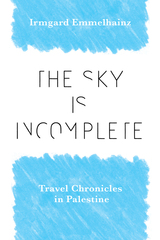 The Sky Is Incomplete: Travel Chronicles in Palestine
Irmgard Emmelhainz
Vanderbilt University Press, 2023 Translated from Spanish for the first time, and with a new introduction to the English edition, The Sky Is Incomplete comprises sixty short entries detailing life in and reflections on the Occupied Territories of Palestine in the twenty-first century over prolonged stays between 2007–2015. In this collection, Irmgard Emmelhainz operates in the committed literature tradition of Walter Benjamin and André Gide in Moscow in the 1920s, and Susan Sontag and Juan Goytisolo in Sarajevo in the 1990s—writers and cultural observers grappling with the political processes of others, elsewhere.
In order to render the issue of representation, of speaking on behalf of the Palestinian ordeal in all its complexity, The Sky Is Incomplete is composed as a collage, gathering diary entries, letters, experimental passages, script, poetry, art criticism, political analysis, and other genres to convey an opaque view of the Palestine Question. Beyond representation in the sense of giving testimony or speaking on behalf of the Palestinians, however, the author’s parting point is relational: The Sky Is Incomplete is about encounters—with friends, mentors, interlocutors, lovers, children, activists, and soldiers (Israeli and Palestinian).
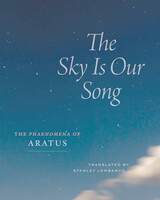 The Sky Is Our Song: The "Phaenomena" of Aratus
Aratus
University of Chicago Press, 2025 An ancient Greek guide to the heavens, translated in a new accessible modern English edition.
A poetic guide to the heavens, the Phaenomena of Aratus—dating from around 270 BCE—was widely known across the ancient world, second only in fame to the works of Homer. Beginning with an invocation to Zeus, the poem describes the constellations of the northern and southern skies, the celestial sphere, and weather signs. Aratus’s vivid work offered a complete handbook of astronomy, constellations, and weather, and this treatise on the night sky was later translated or adapted by luminaries including Cicero, Virgil, and Ovid. The Phaenomena remained popular throughout the Renaissance and had more than sixty printed editions by the early seventeenth century, but its fame has faded in the modern world.
With this edition, renowned translator and amateur astronomer Stanley Lombardo renders Aratus’s poem in reader-friendly vernacular English verse. Complete with endnotes, an accessible introduction, and astronomically accurate illustrations, The Sky Is Our Song brings this master poet’s celebration of the sky to a twenty-first-century audience, inviting new readers to follow Aratus on a visual journey through star signs, moon phases, weather phenomena, and all wonders of the heavens.
The Sky on Fire: The First Battle of Britain, 1917-1918
Raymond H. Fredette
University of Alabama Press, 2005 A fascinating examination of the strategies and uses of air power in the First World War, Sky on Fire covers not only developments in military hardware and tactics but also how public policy and political considerations shaped the ways air power was deployed. Providing an excellent balance of data and statistics as well as human insights, Fredette’s book is essential reading for readers interested in the air power, both historically and in contemporary conflicts.
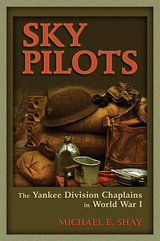 Sky Pilots: The Yankee Division Chaplains in World War I
Michael E. Shay
University of Missouri Press, 2014 This exploration of the noncombatants who earned the love and respect of the doughboys should appeal to armchair historians and scholars alike. Enhanced with photographs and an appendix summarizing the biographical information for each man, Sky Pilots is the first comprehensive look at the role of the Army chaplaincy at the divisional level. In August 1917, the U.S. 26th “Yankee” Division was formally activated for service in World War I. When the soldiers arrived in France, they were accompanied by more than three dozen volunteer chaplains. These clergymen experienced all the horrors of war, shared all the privations of the common soldier, and earned the love and affection of their “boys.” Two died, several were gassed or wounded, and many were decorated by France and the United States for their heroism, yet their stories have been lost to history. Through extensive research in published and archival sources, as well as firsthand materials obtained from the families of several chaplains, Michael E. Shay brings to life the story of these valiant men—a story of courage in the face of the horrors of war and of extreme devotion to the men they served. Just as important, Sky Pilots follows the chaplains home and on to their subsequent careers. For many, their war experiences shaped their ministries, particularly in the area of ecumenism and the Social Gospel. Others left the ministry altogether. To fill in the chaplains’ stories, Shay also examines the evolution of the U.S. Army Chaplain Corps, the education of the newly appointed chaplains, and the birth of the Yankee Division.
|
|

